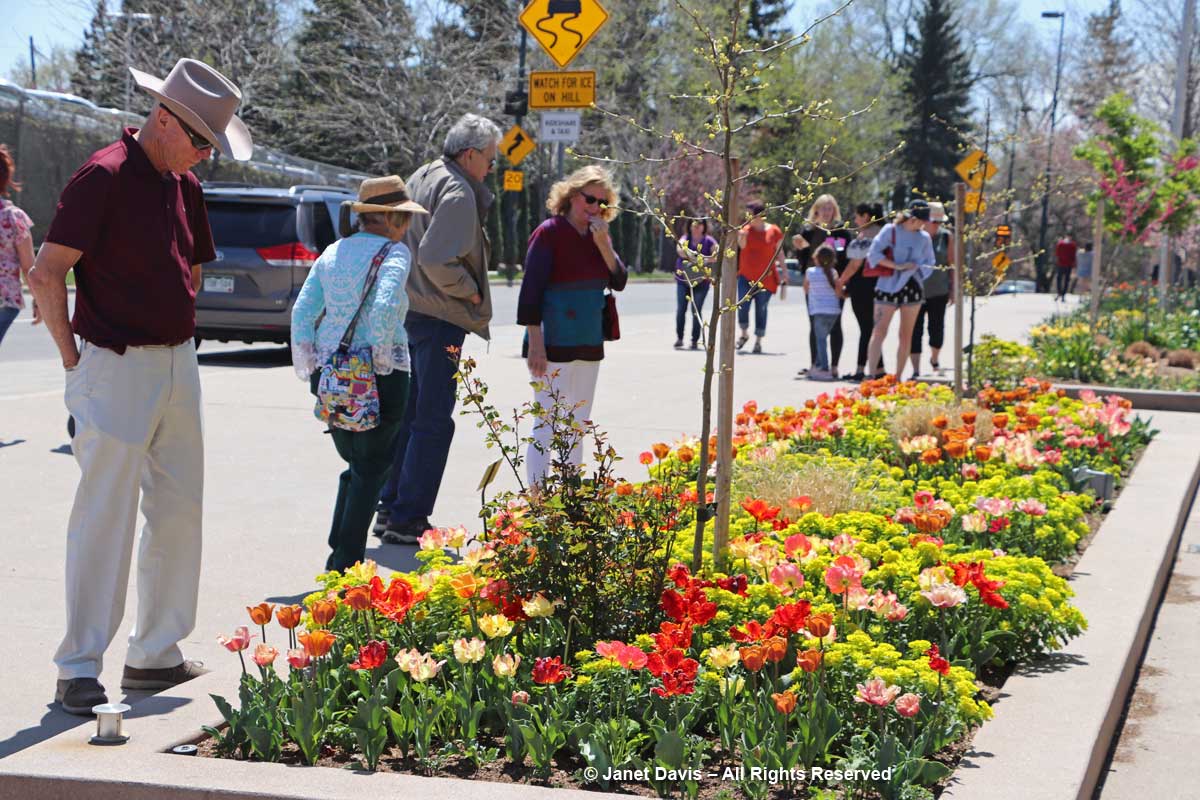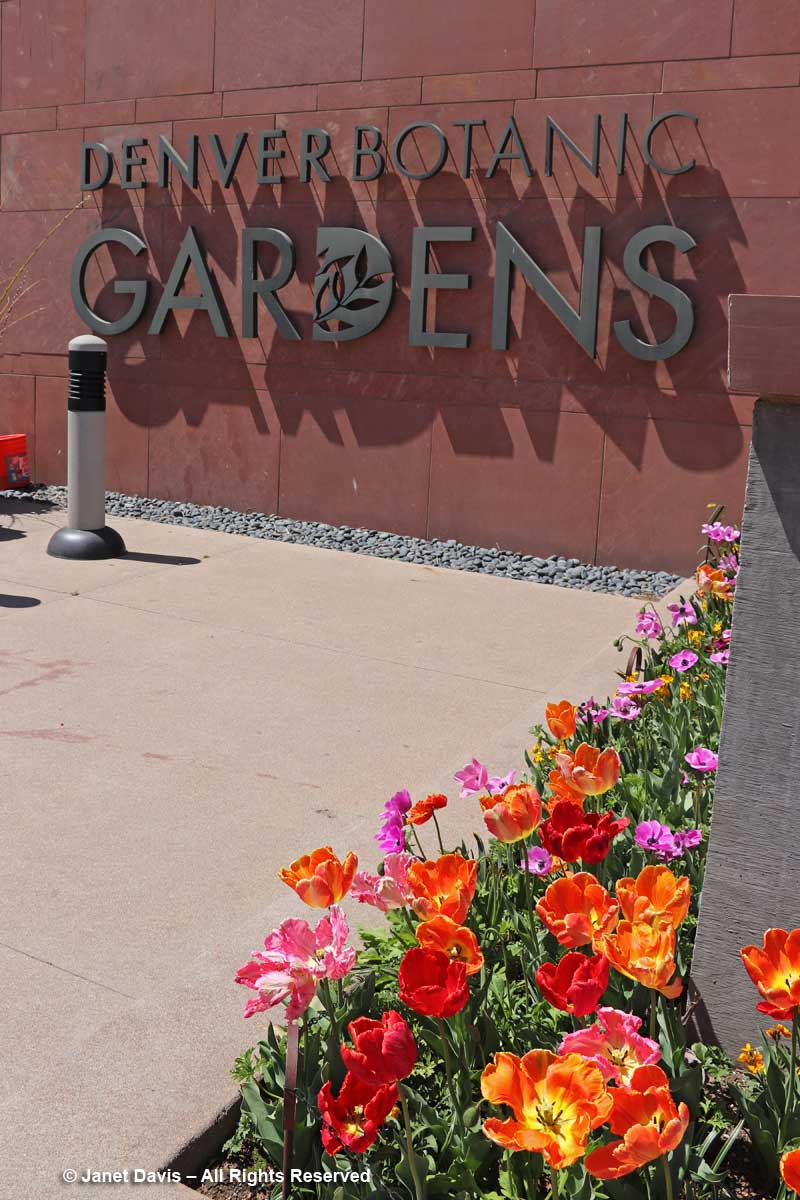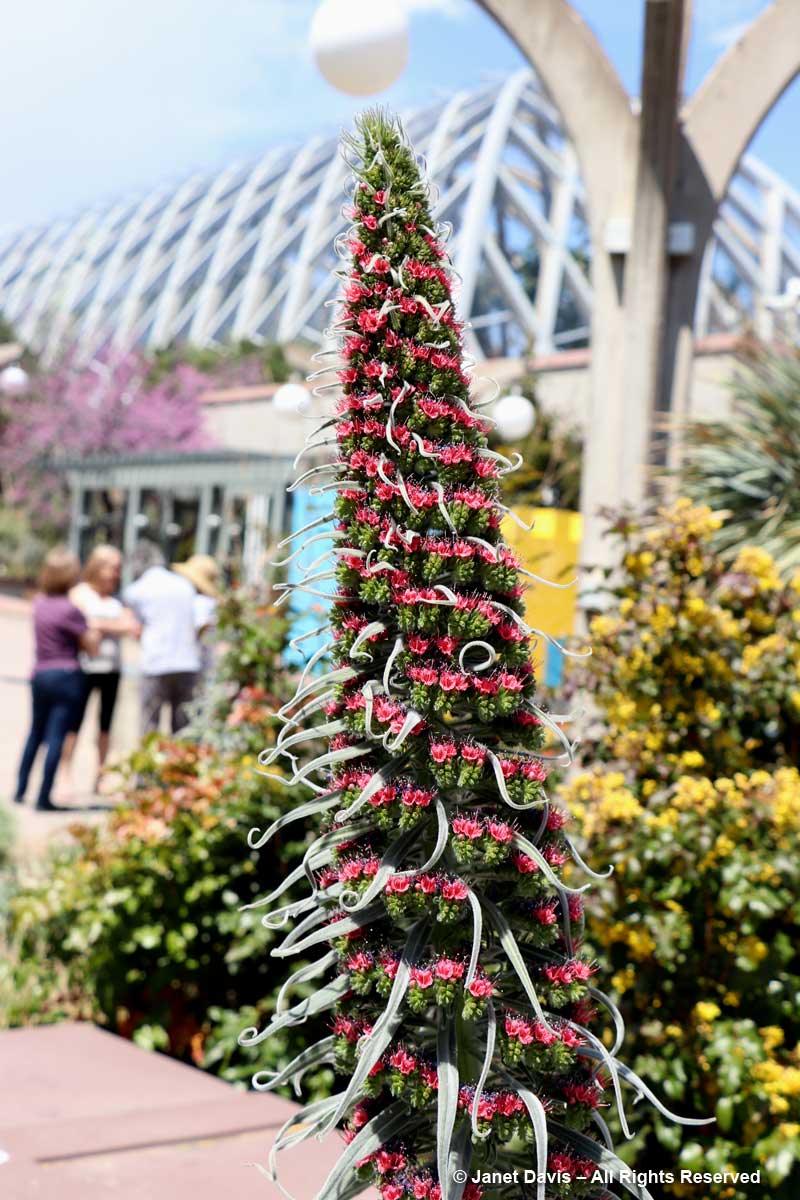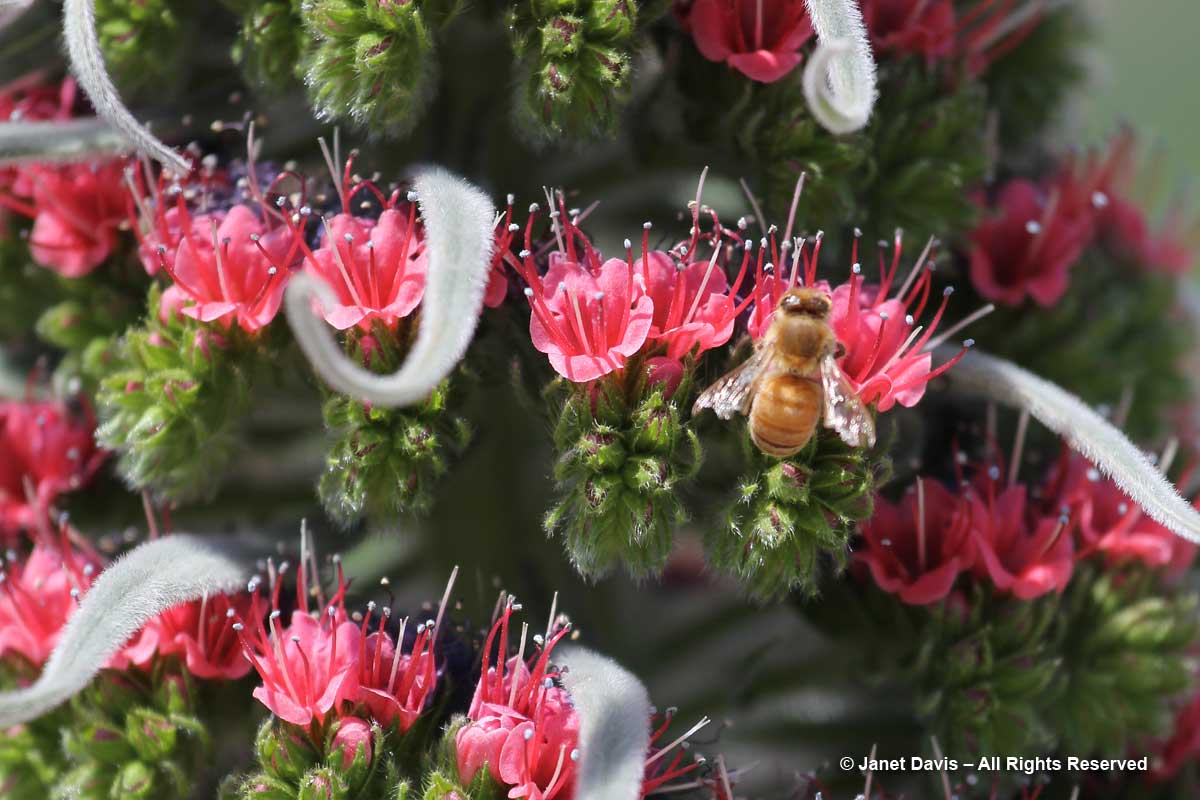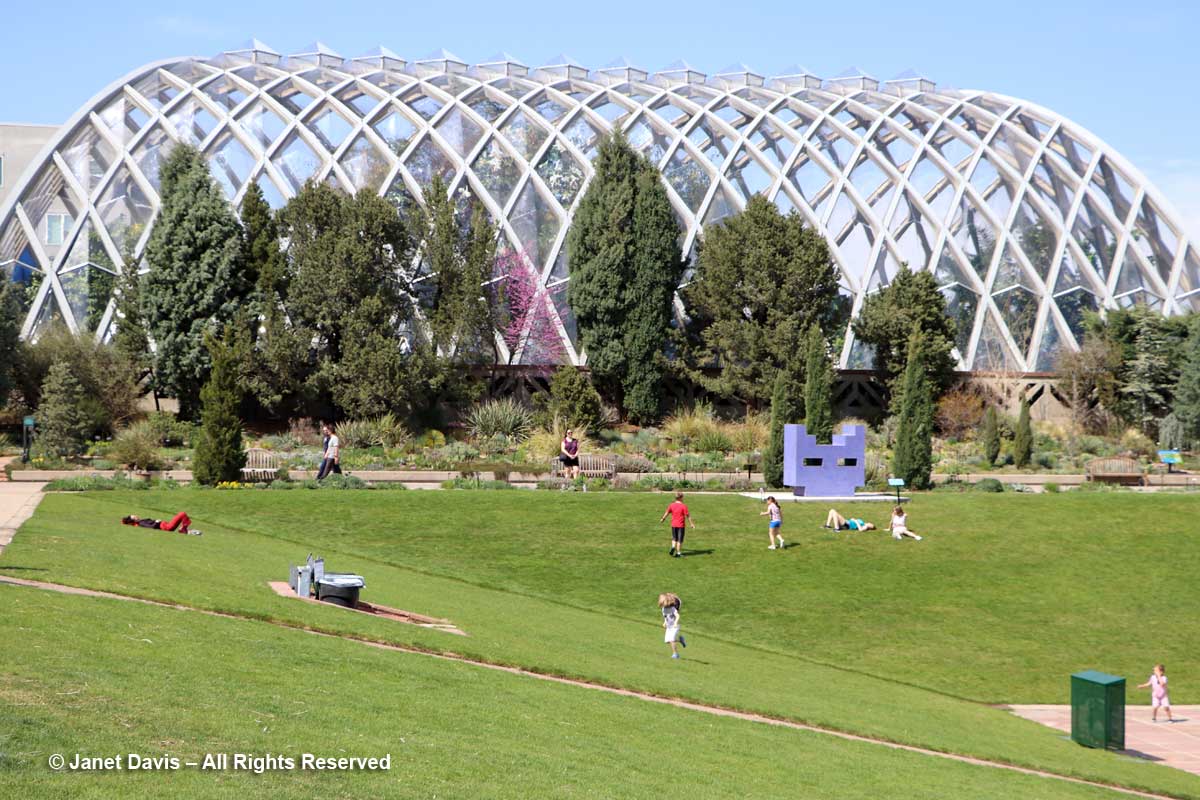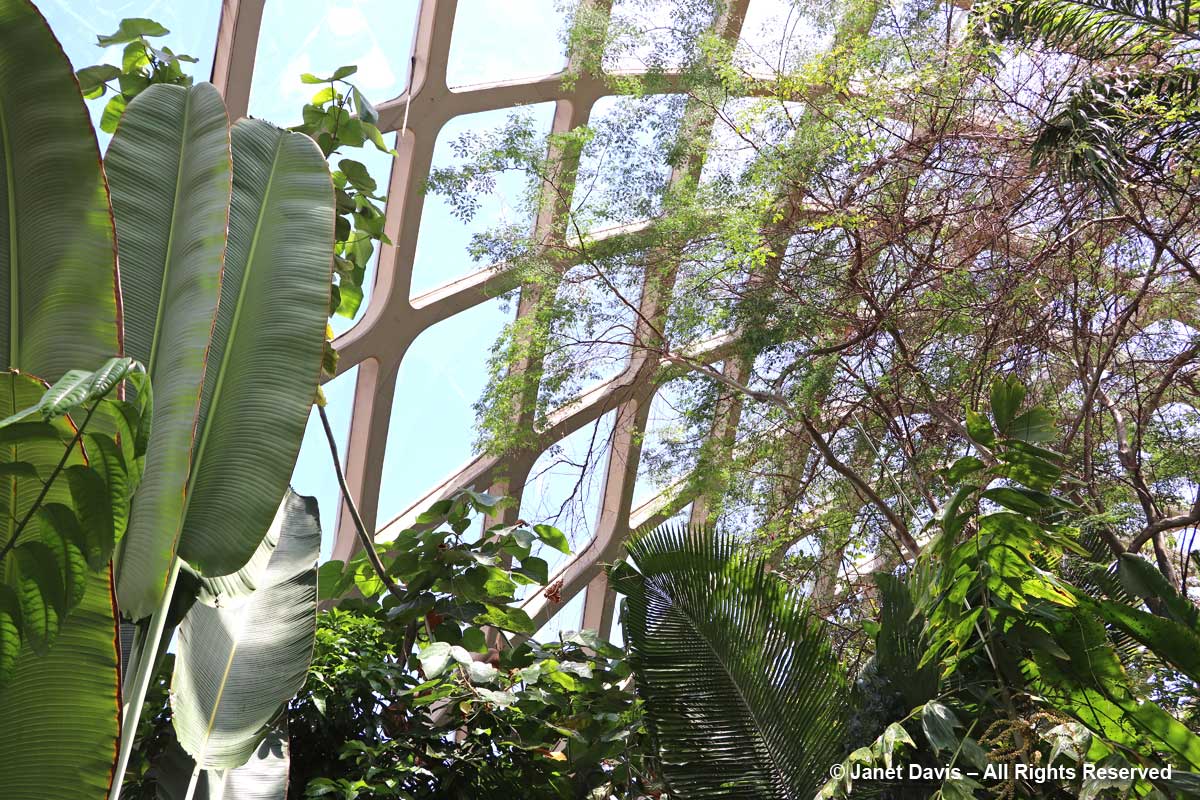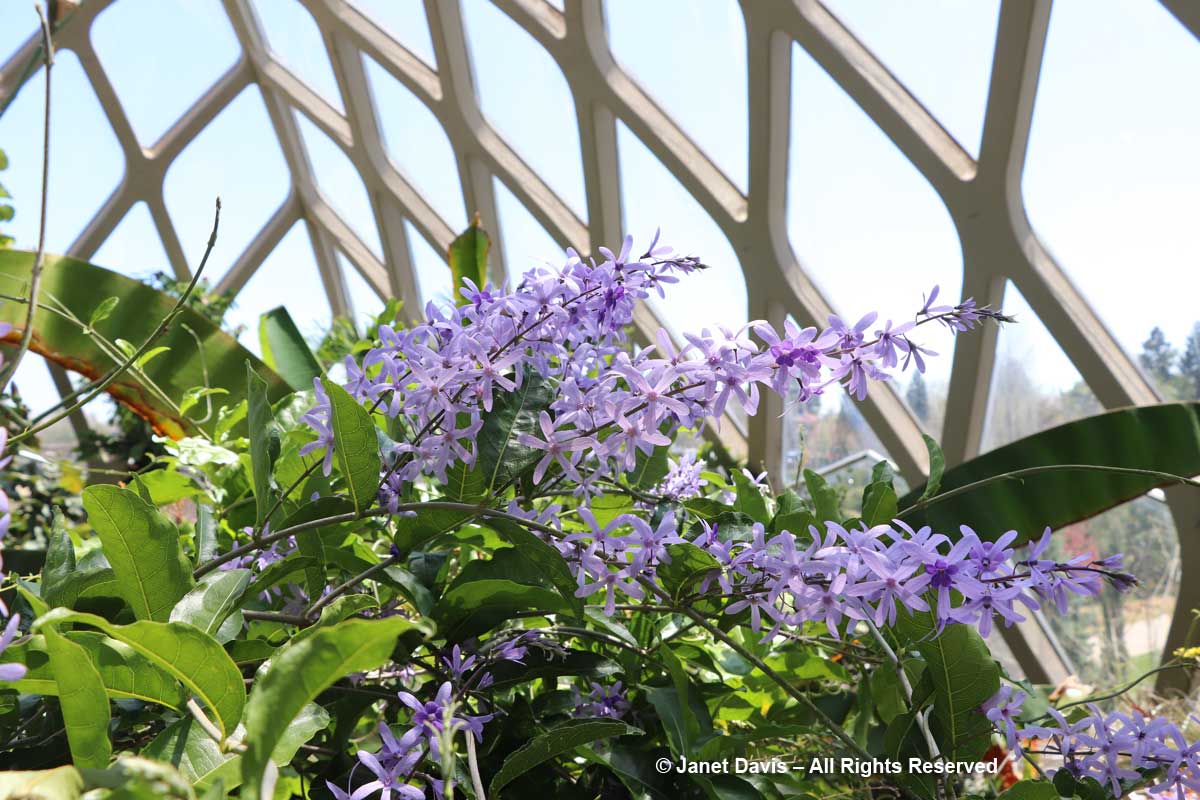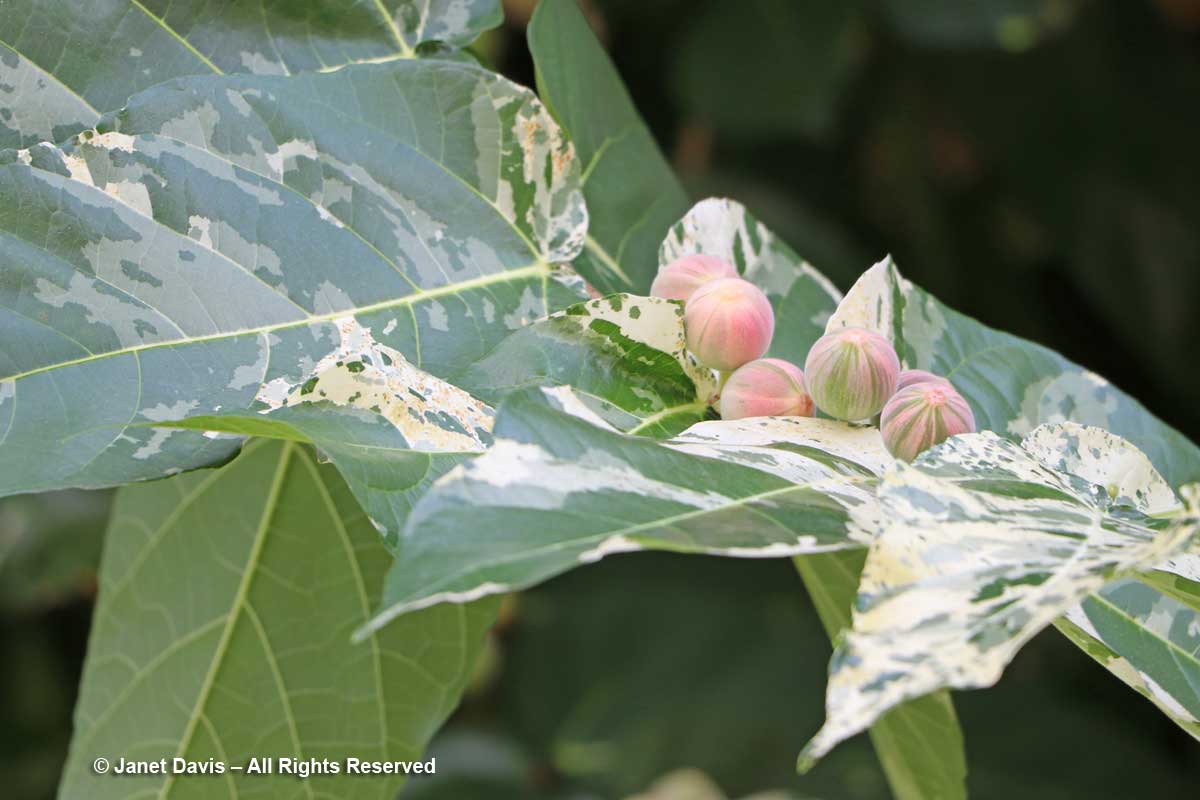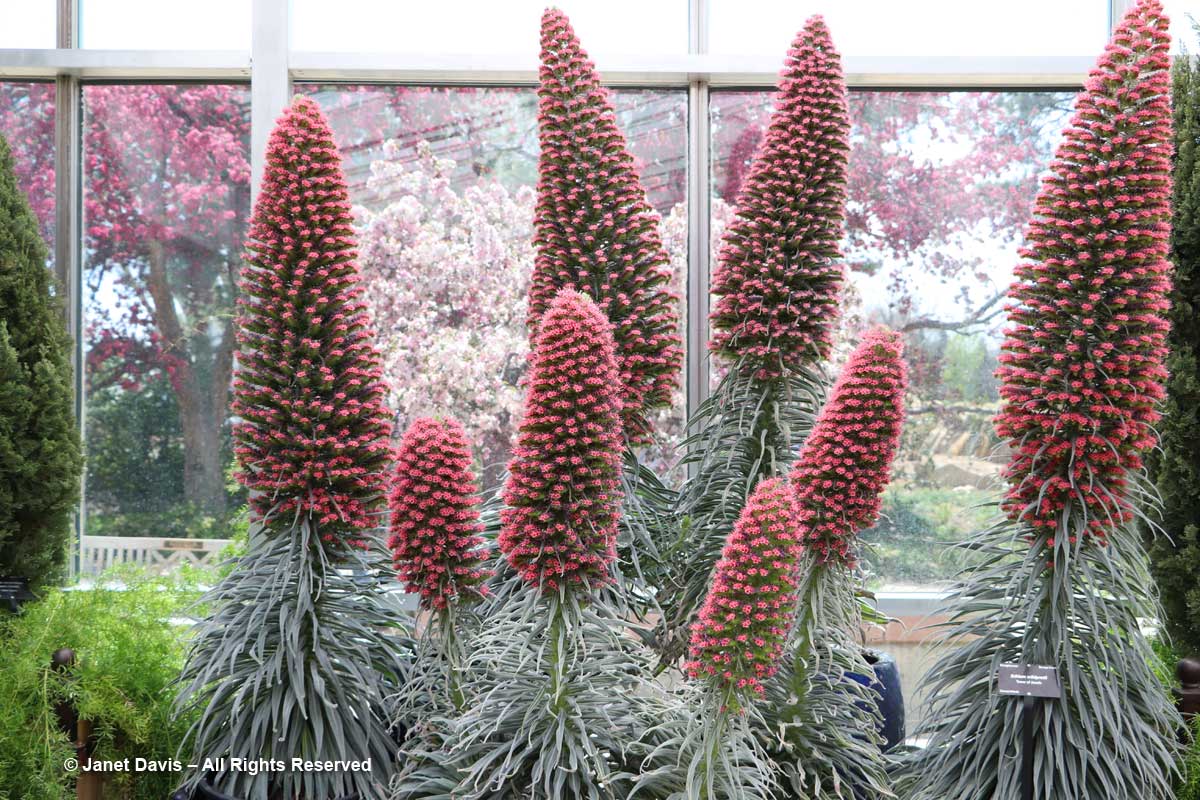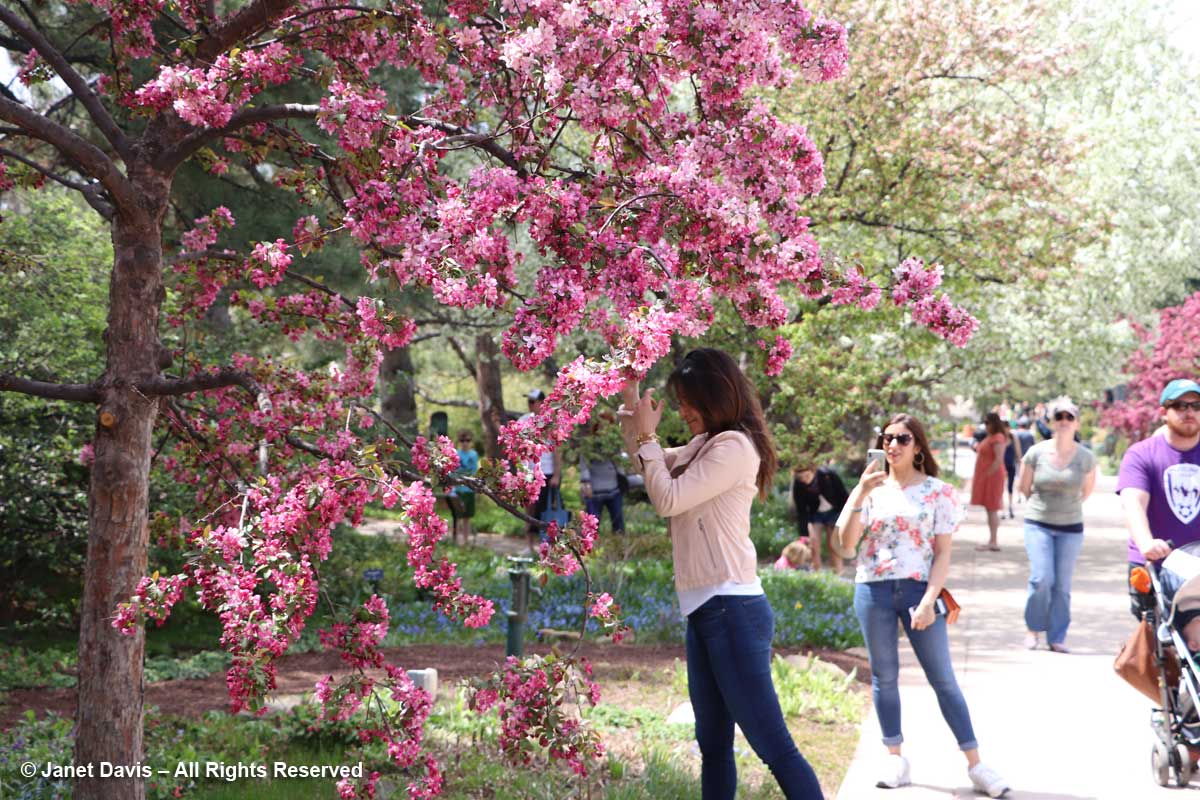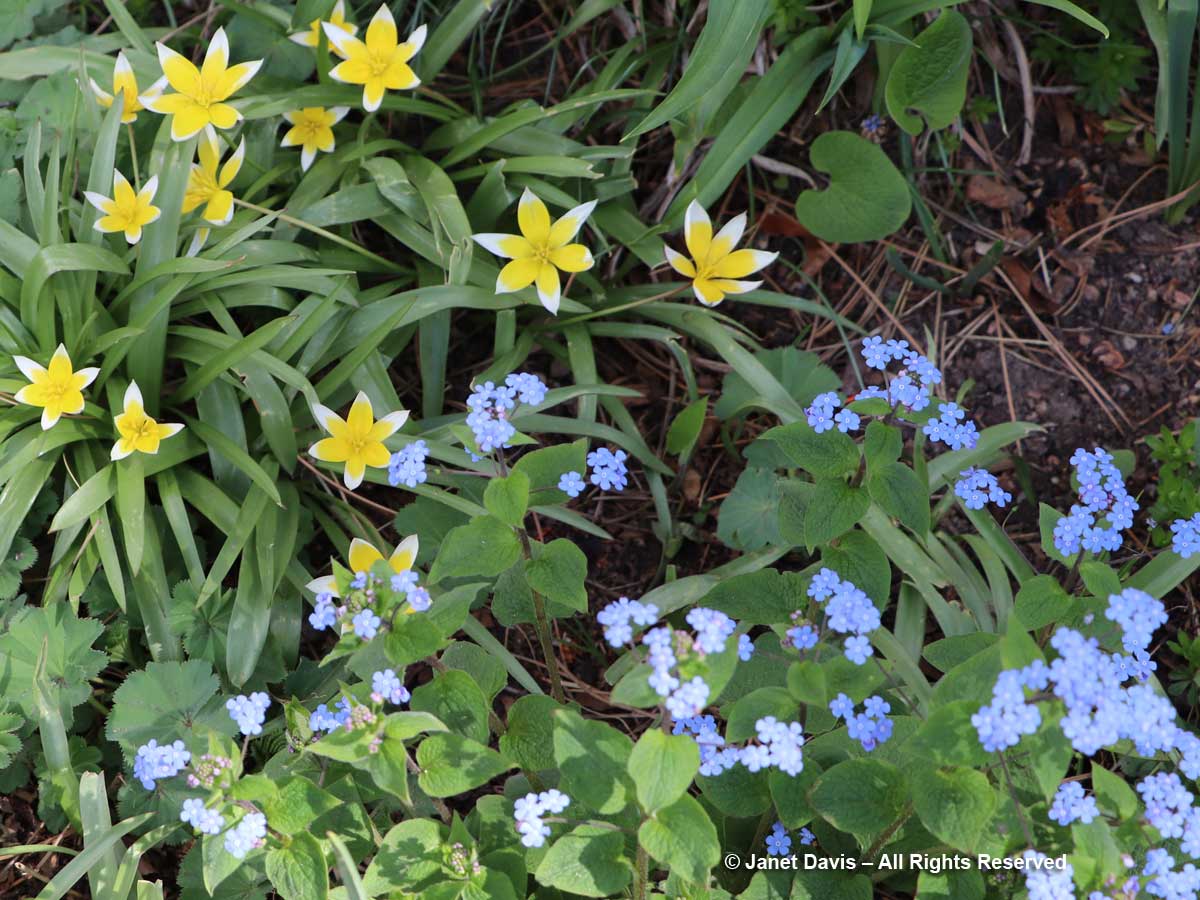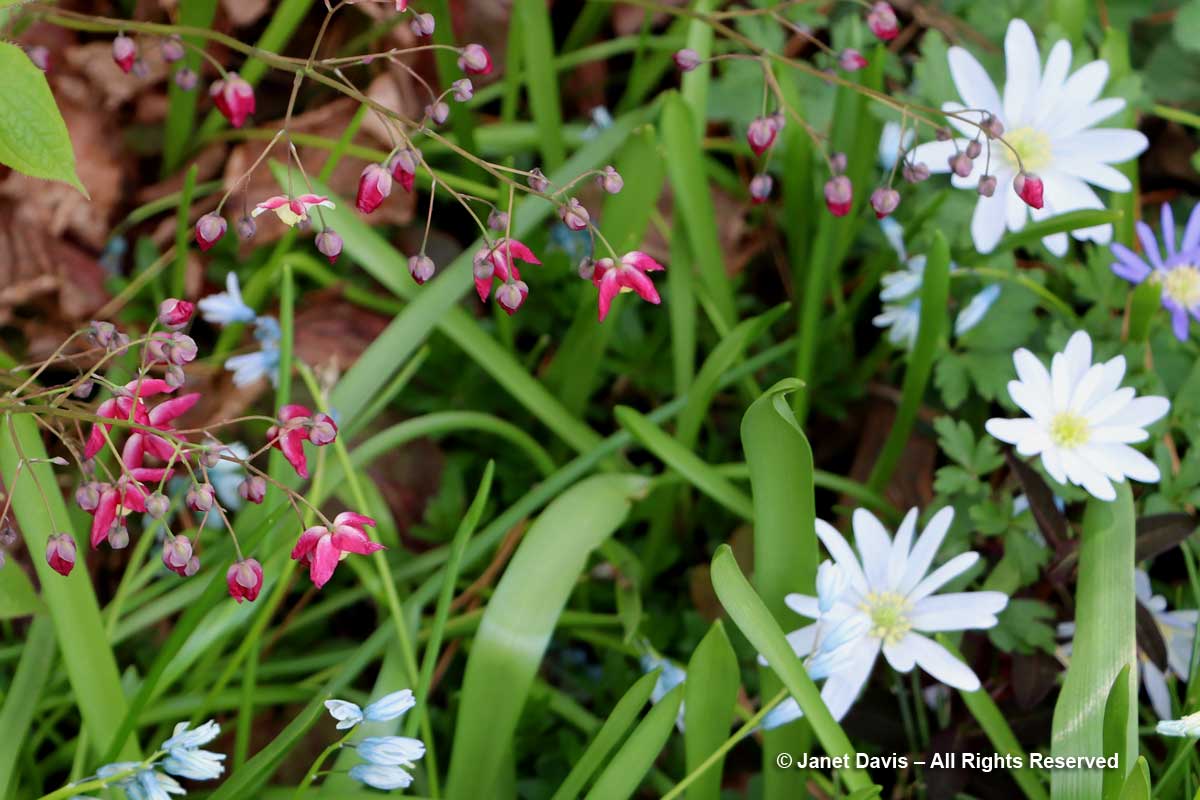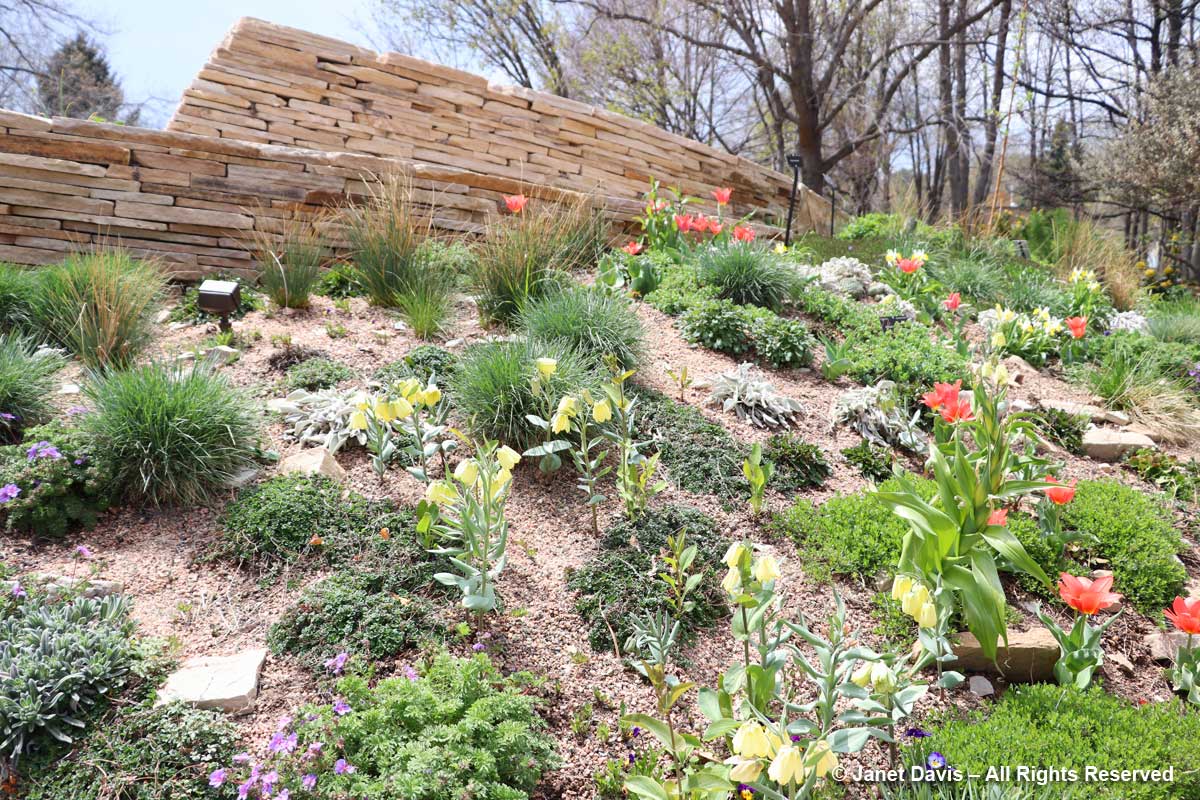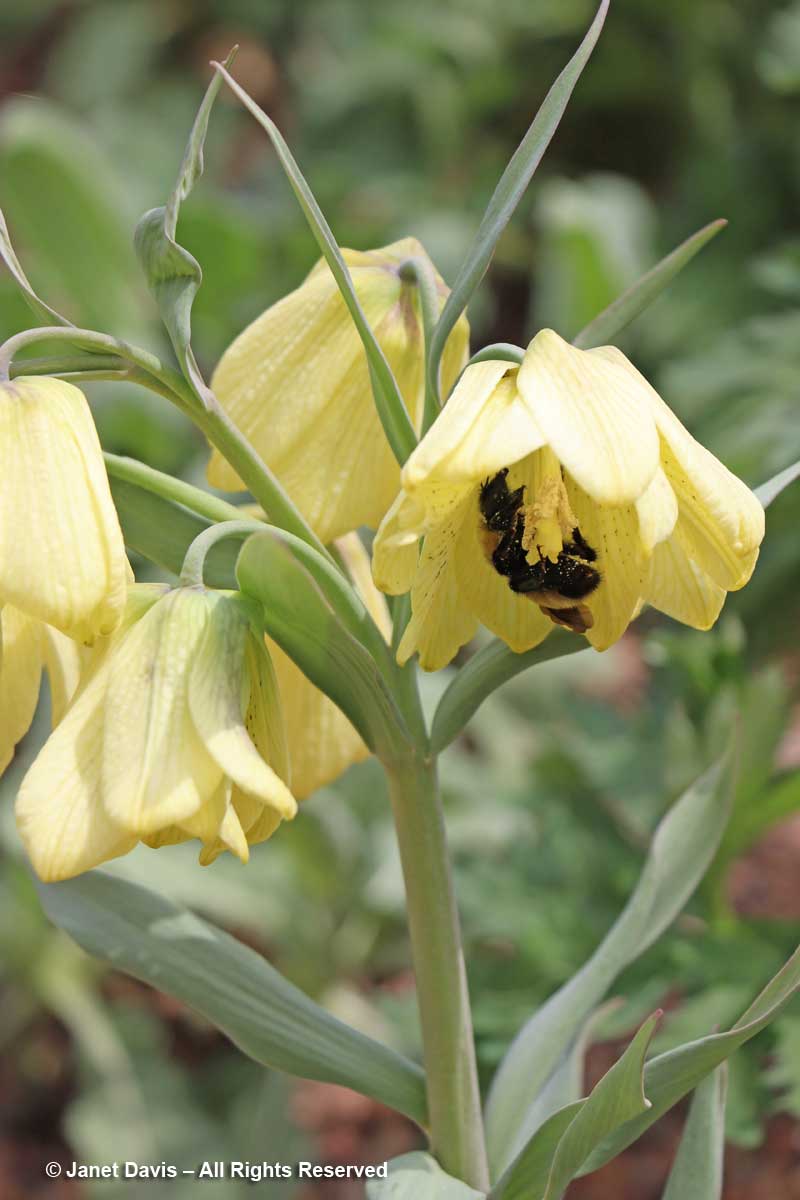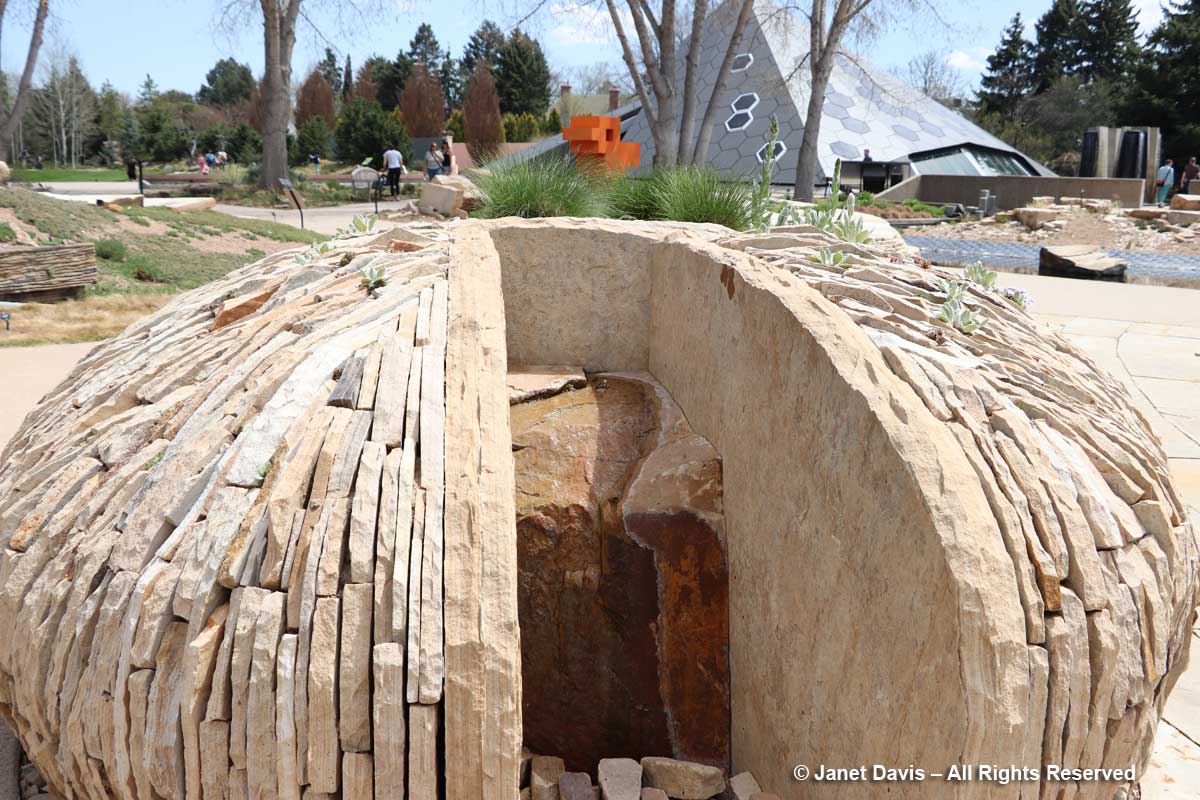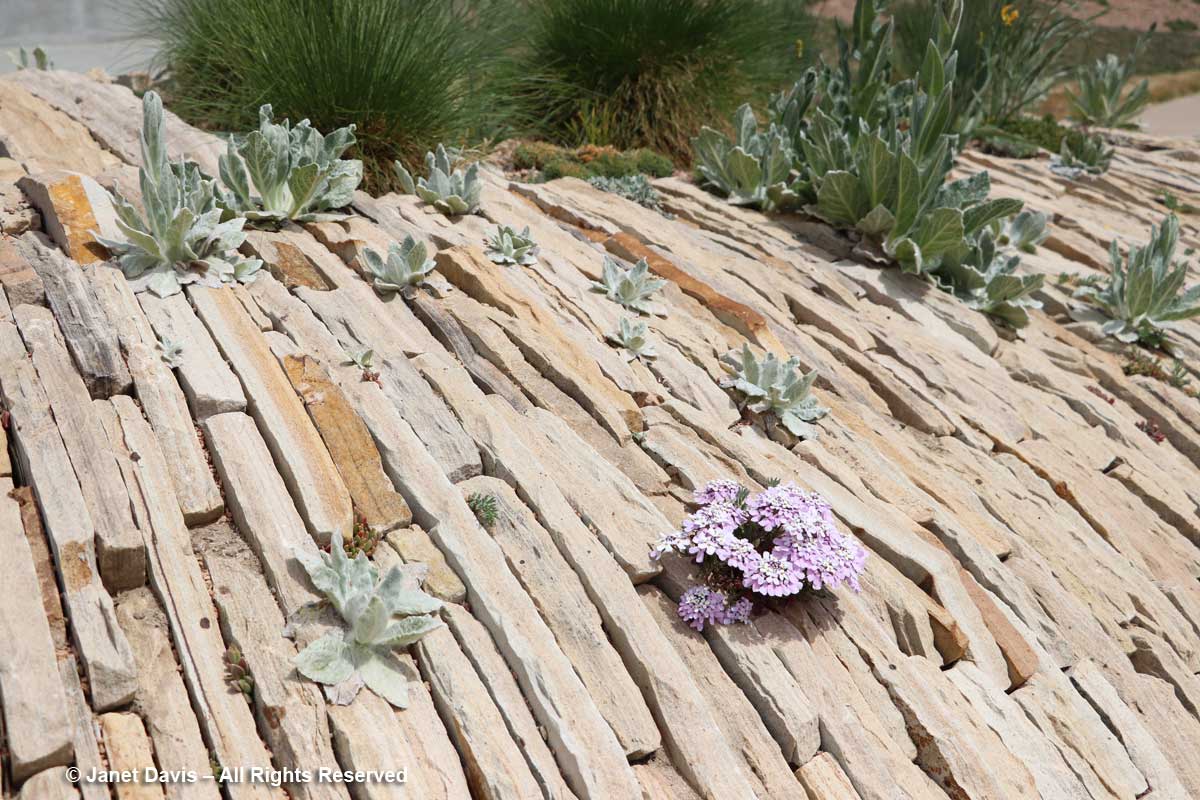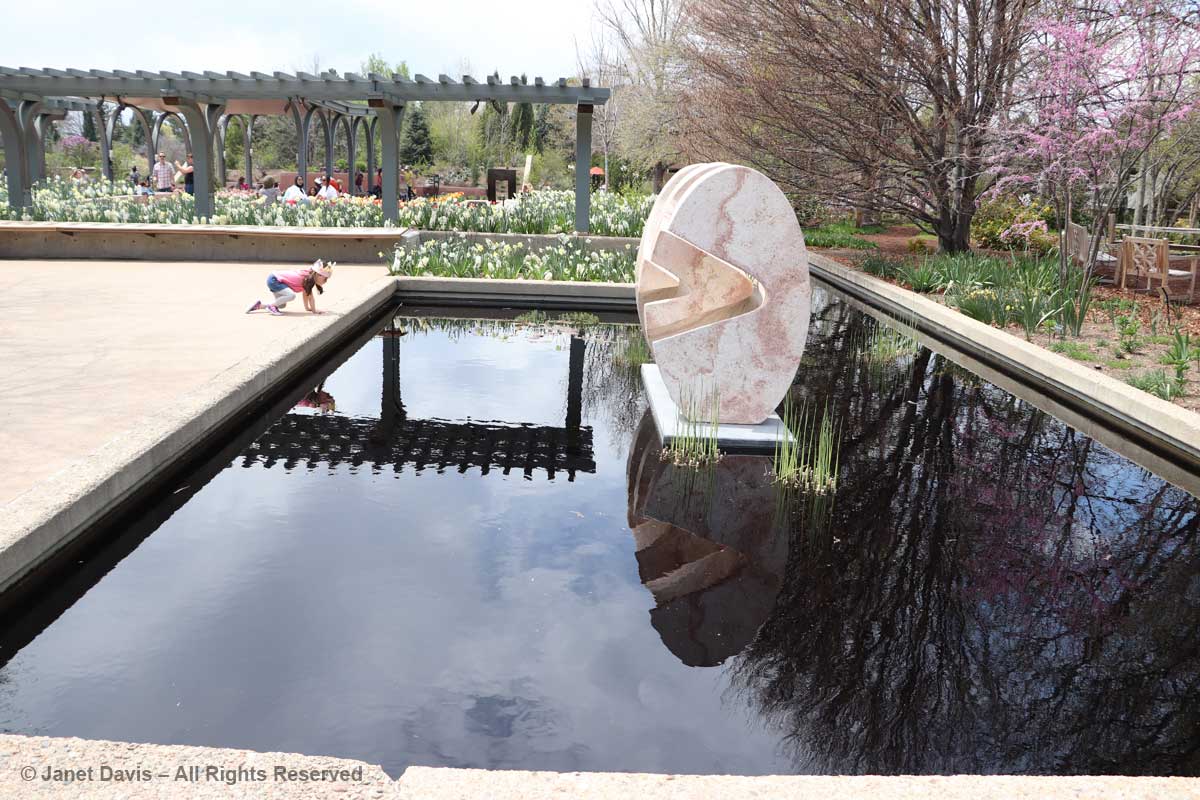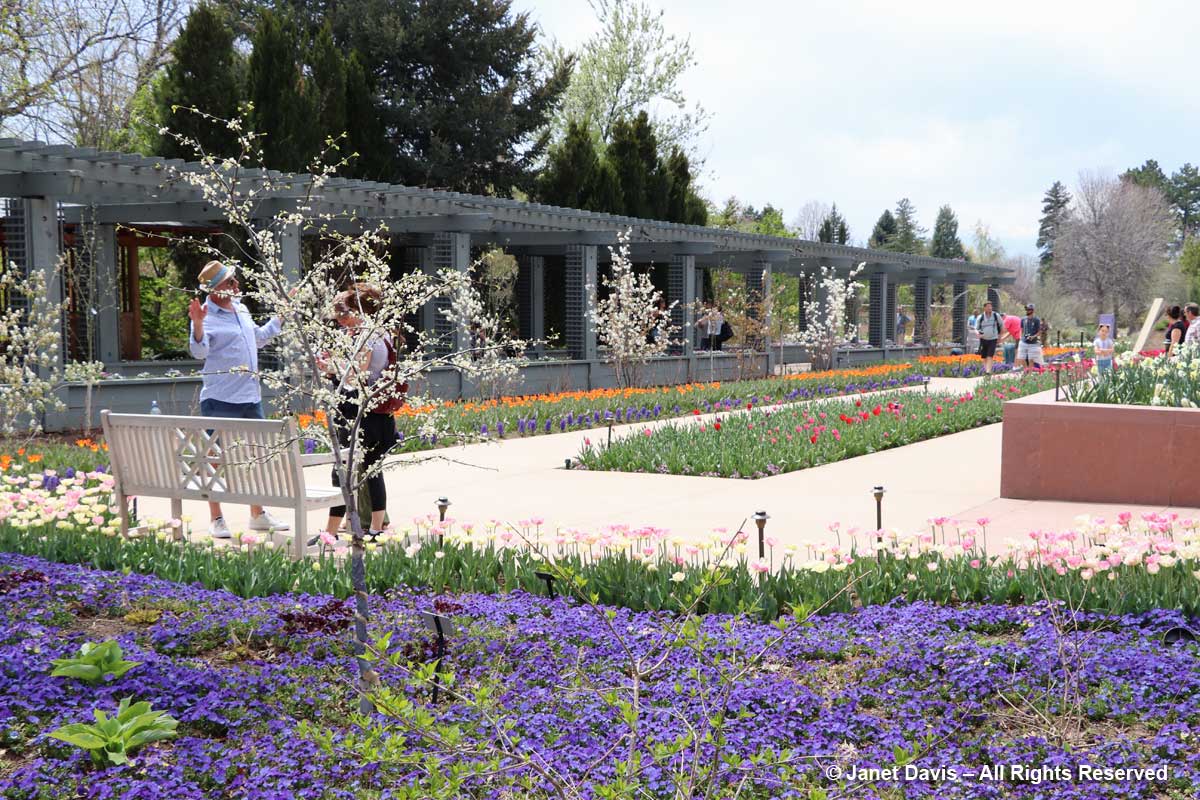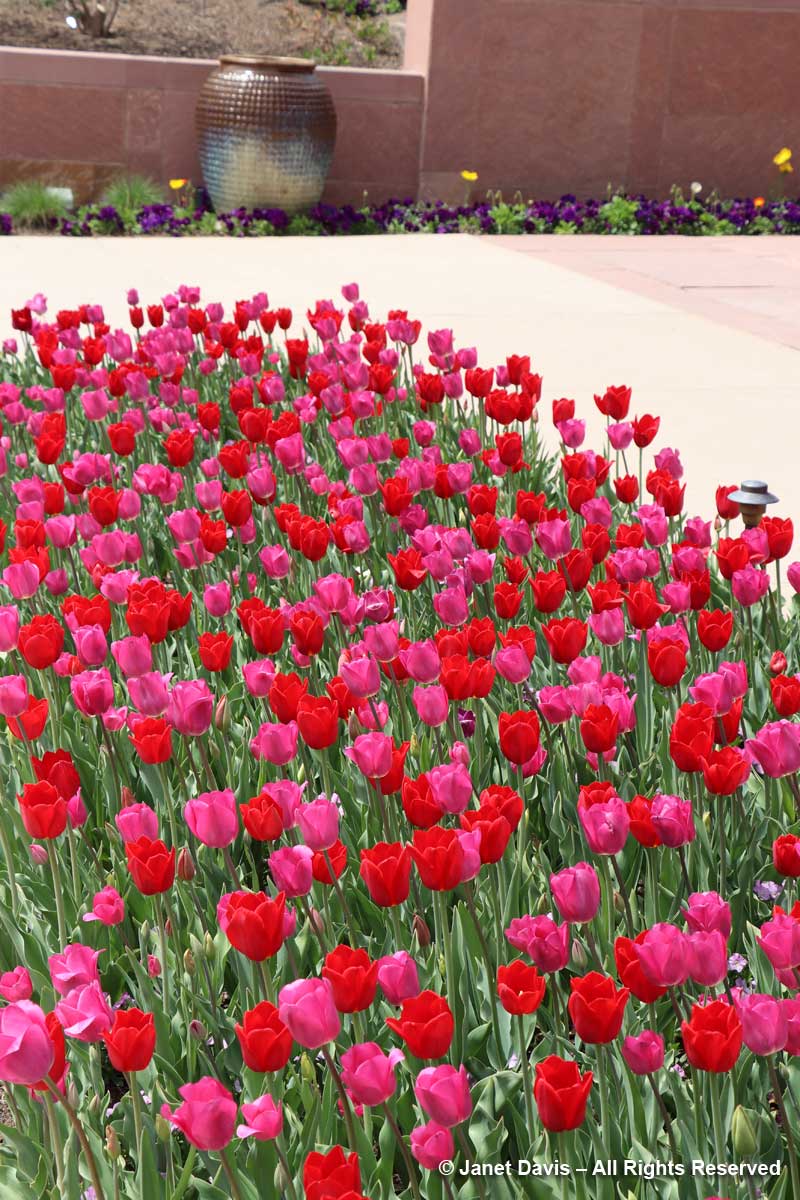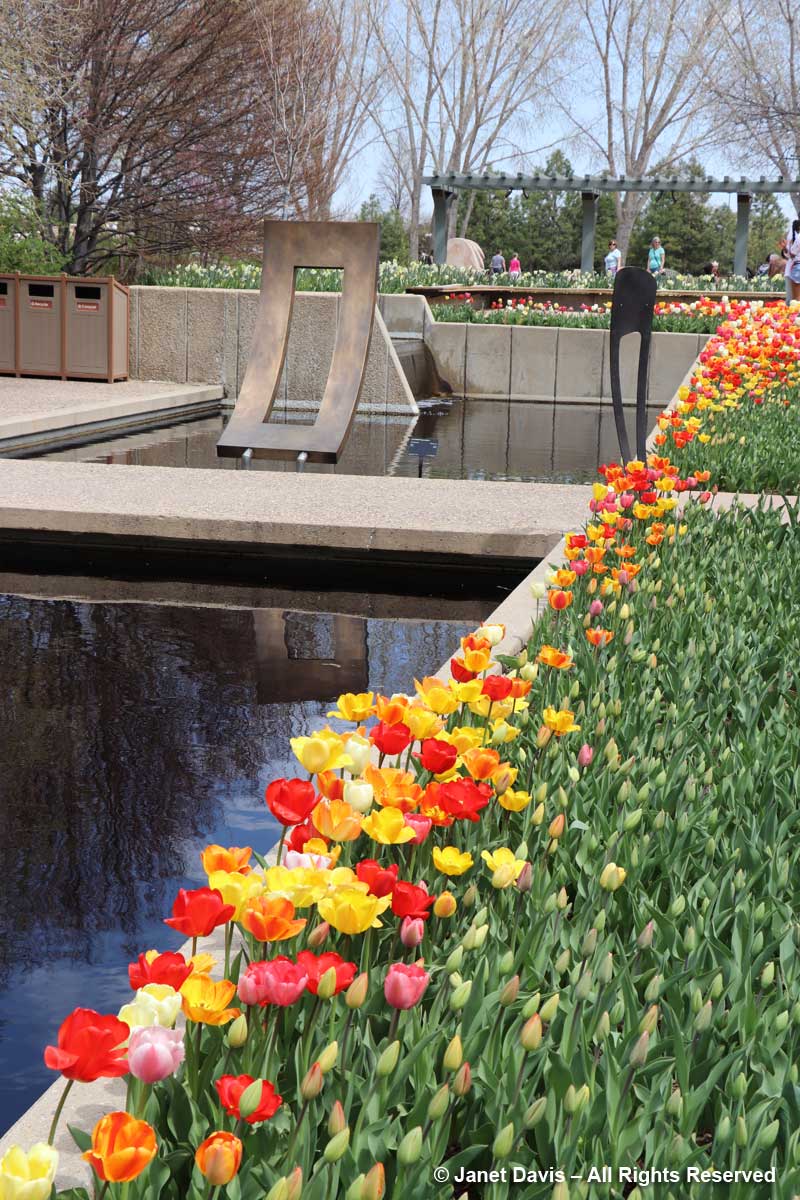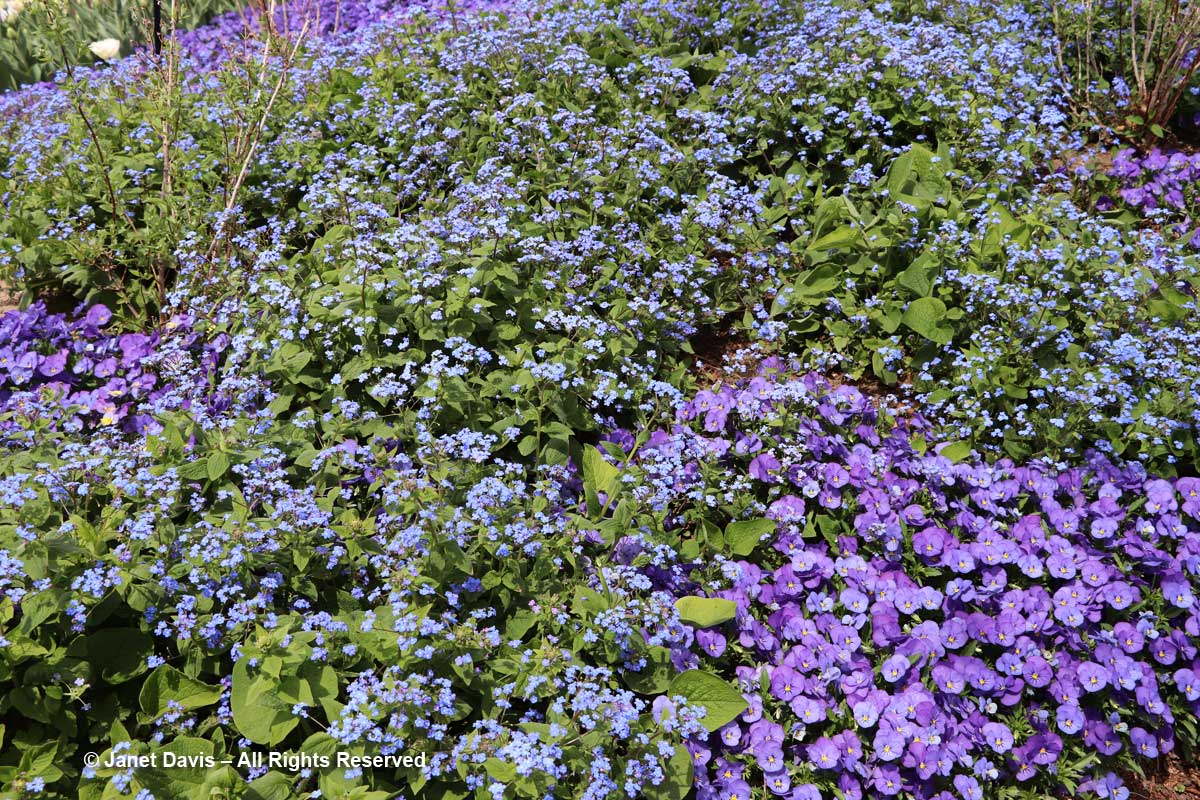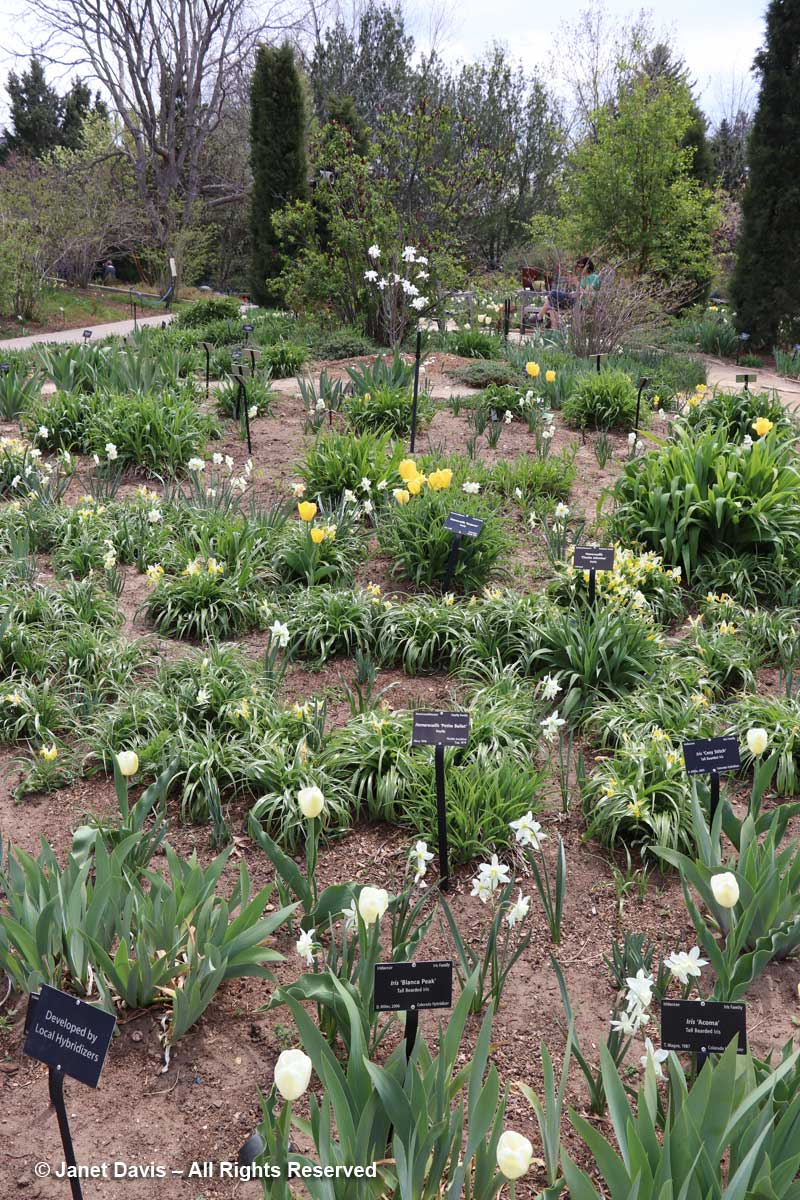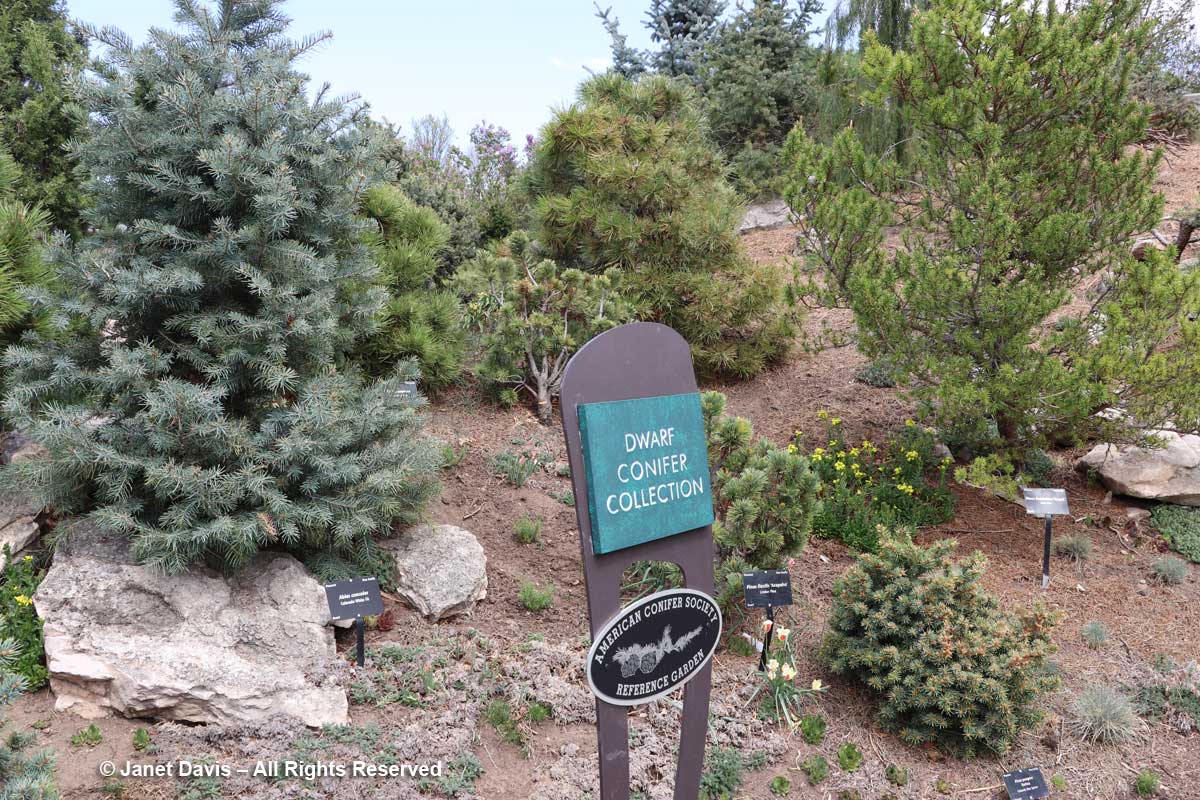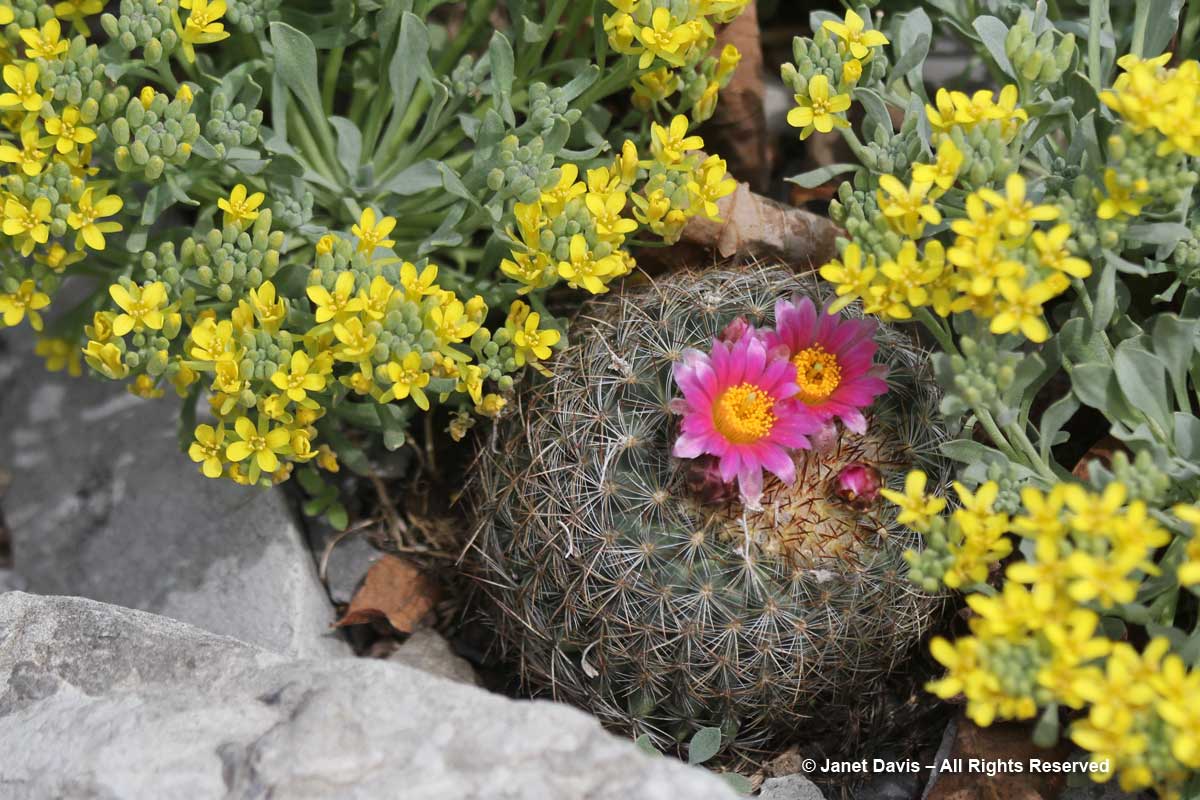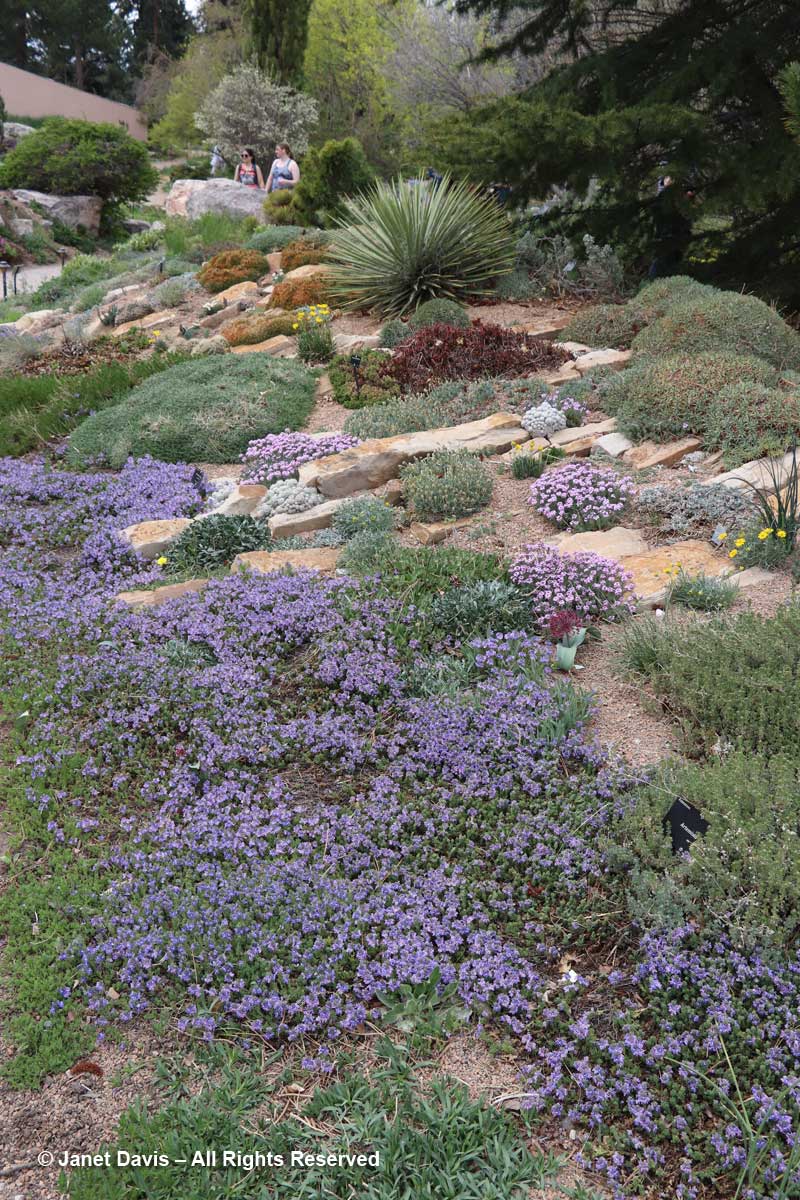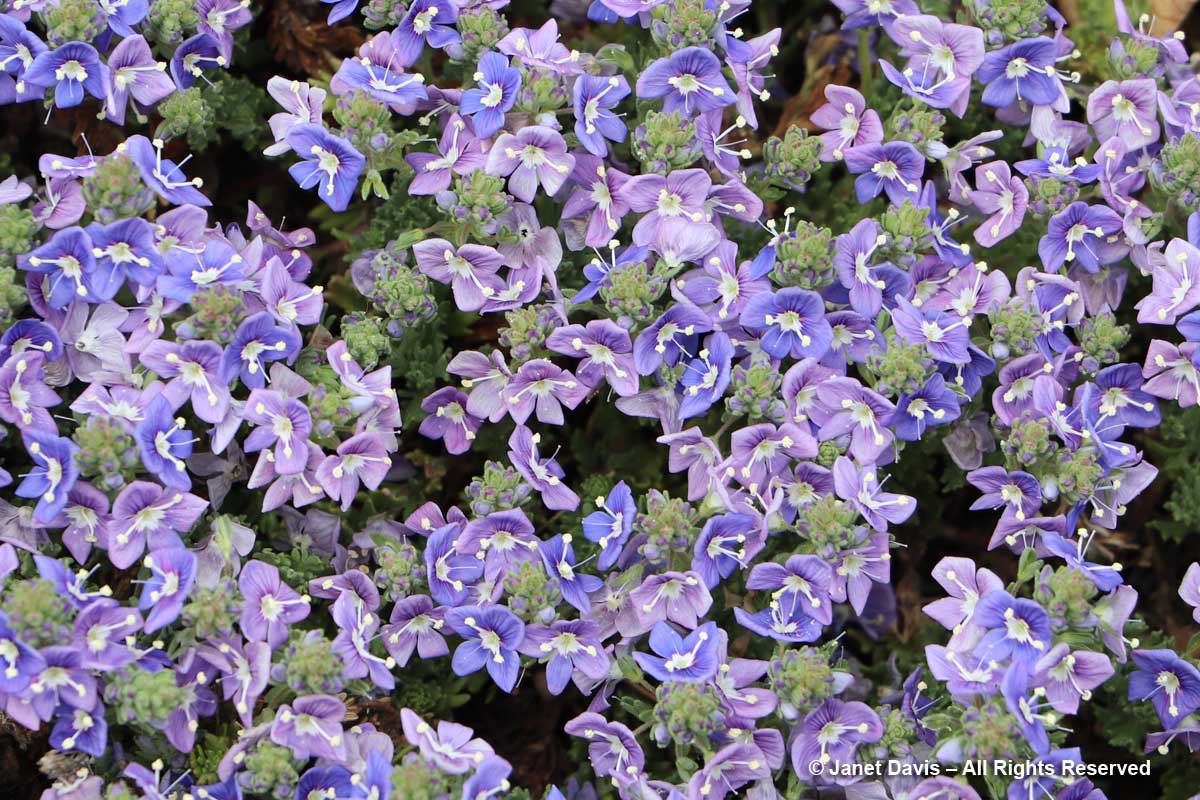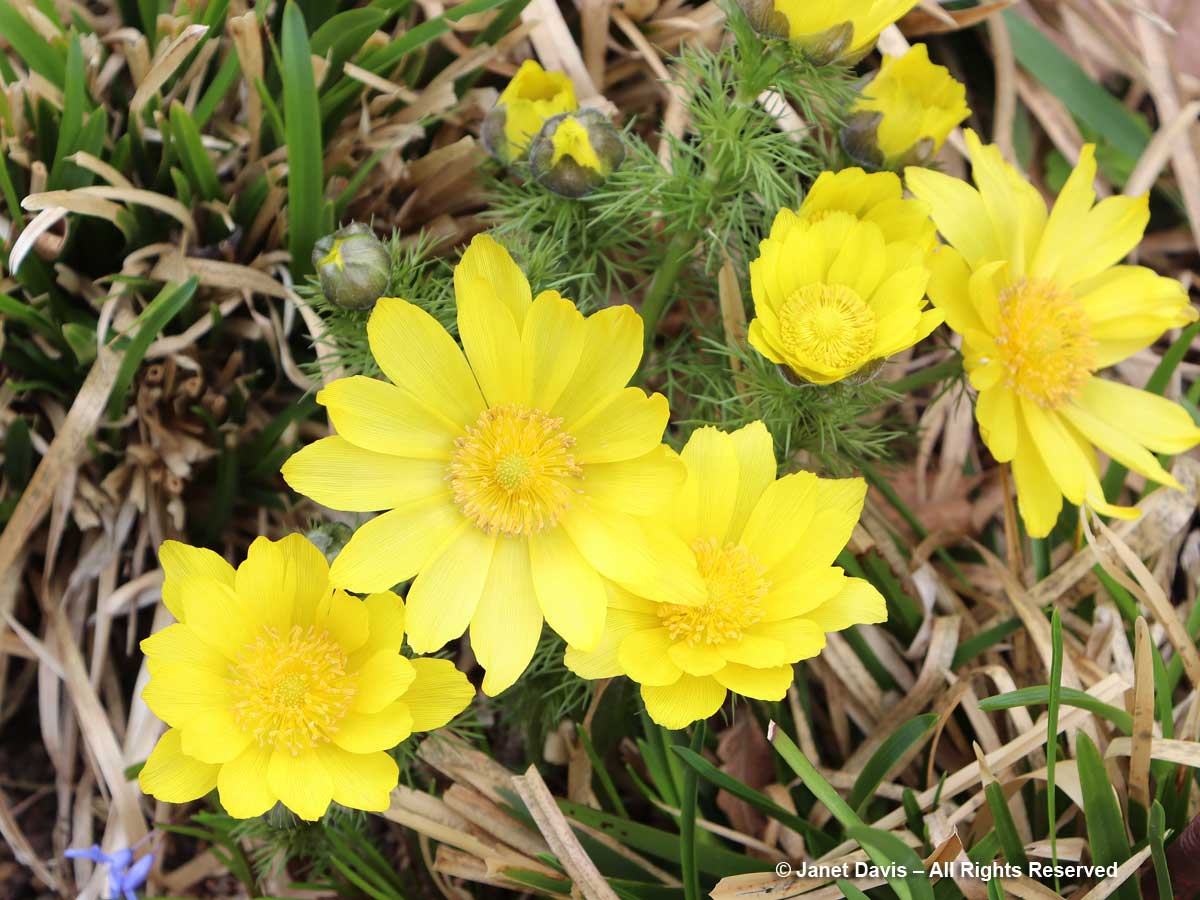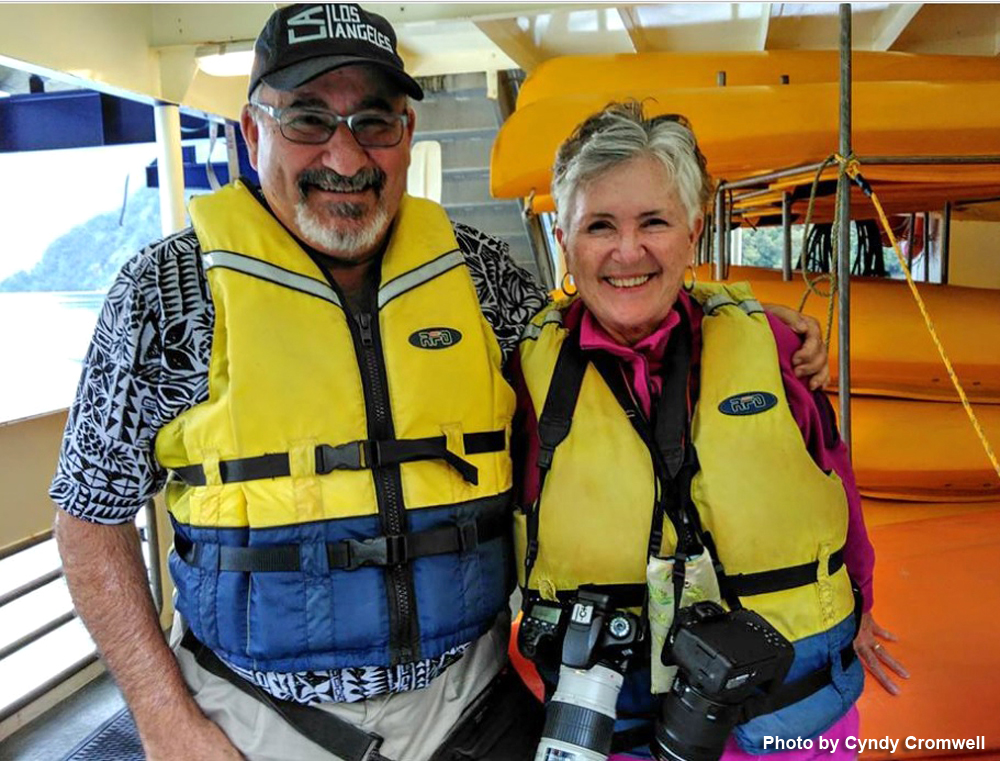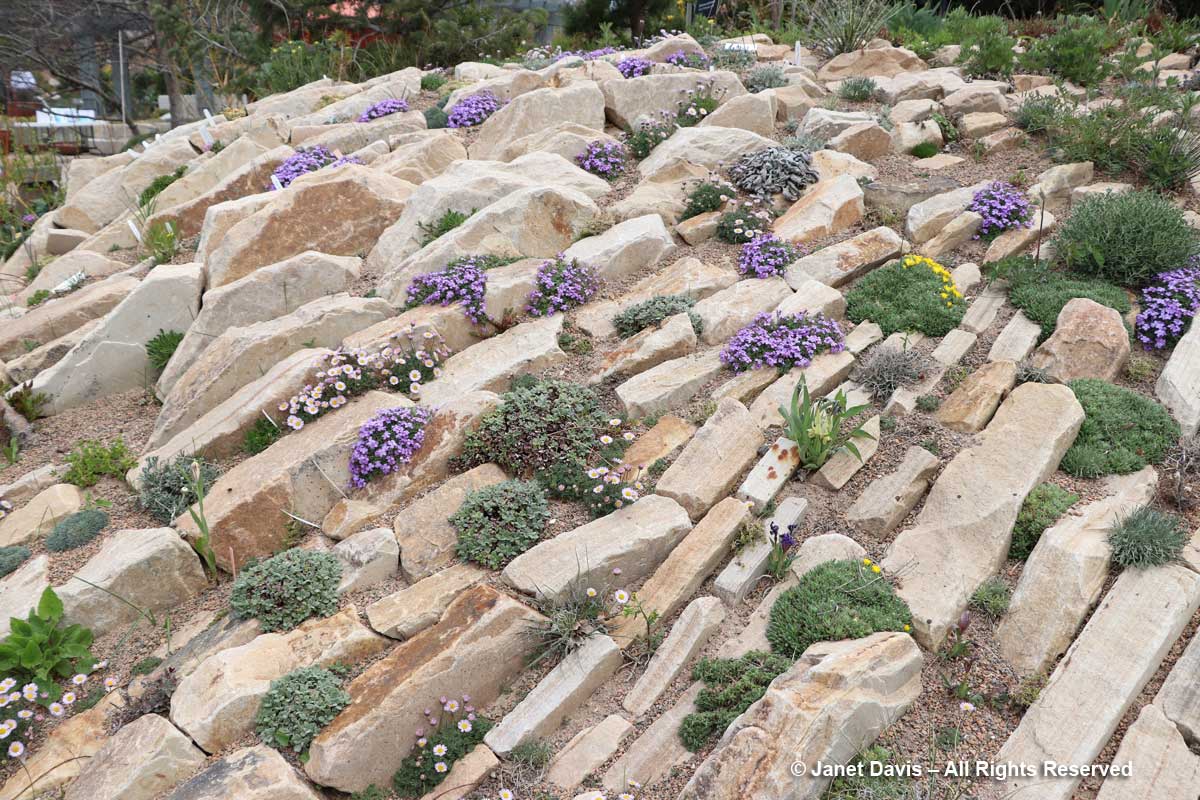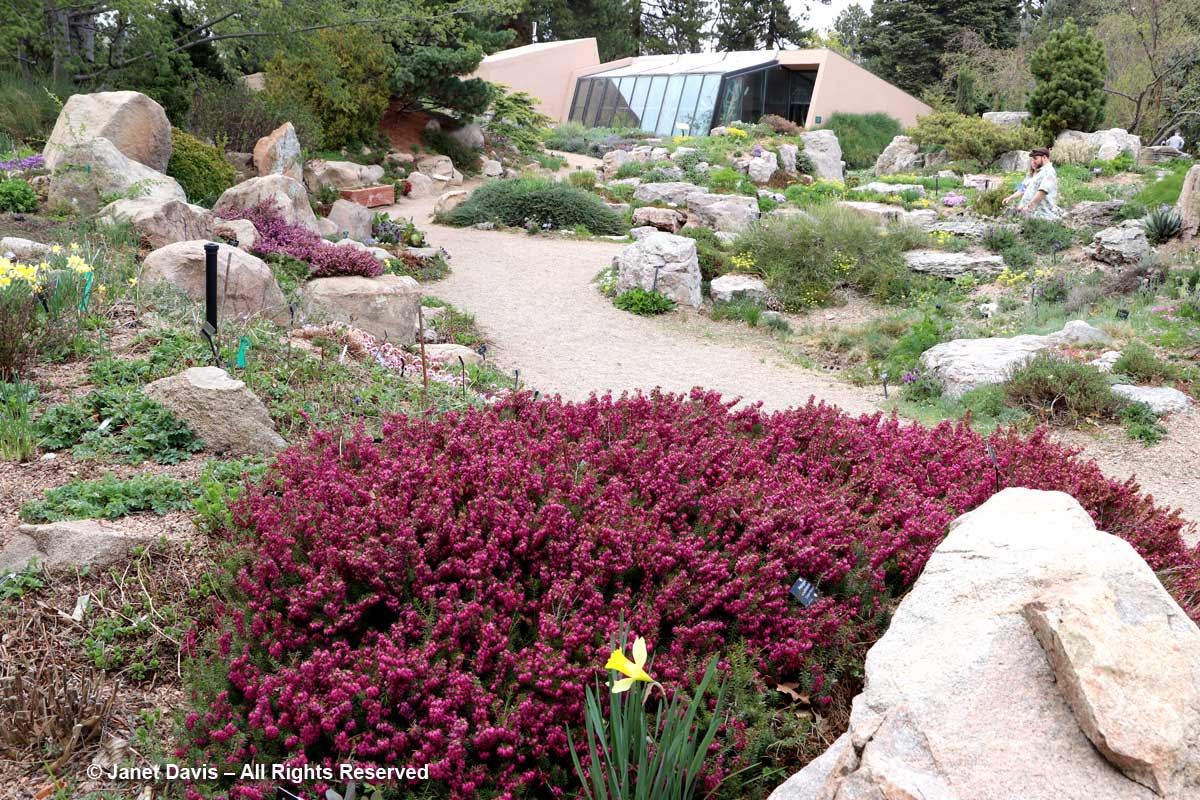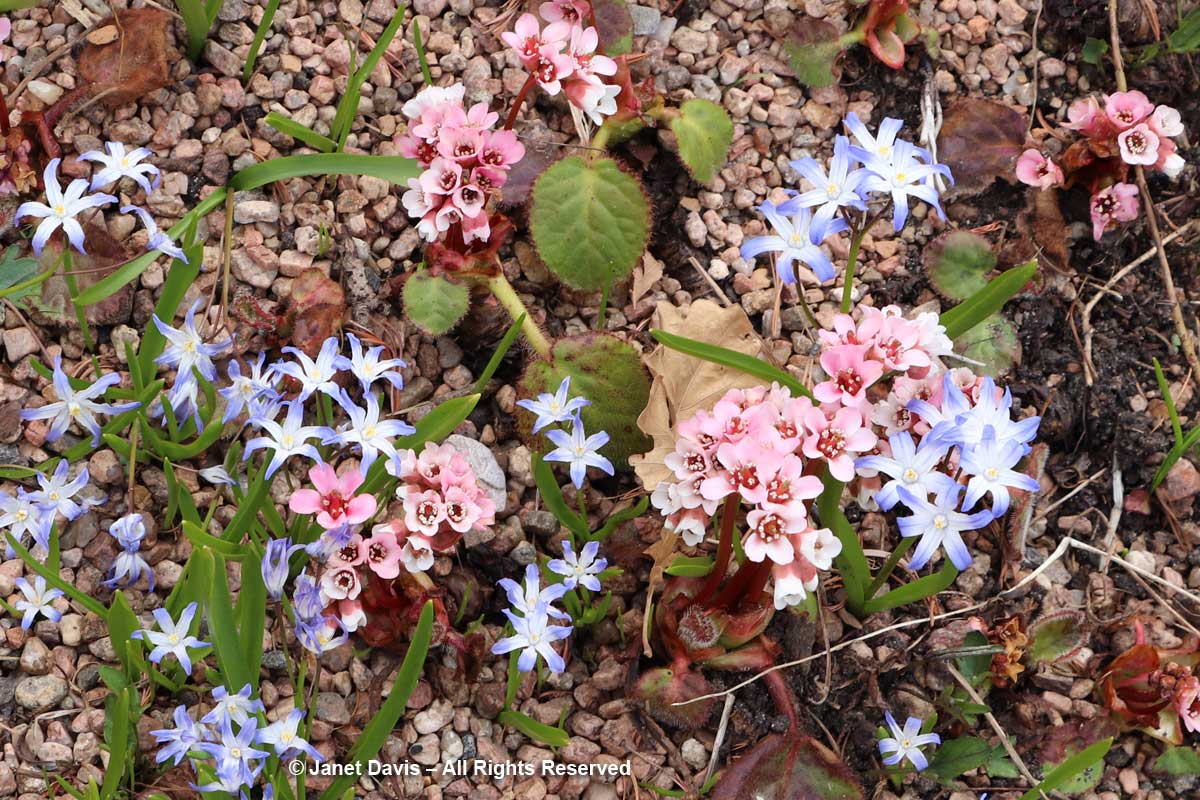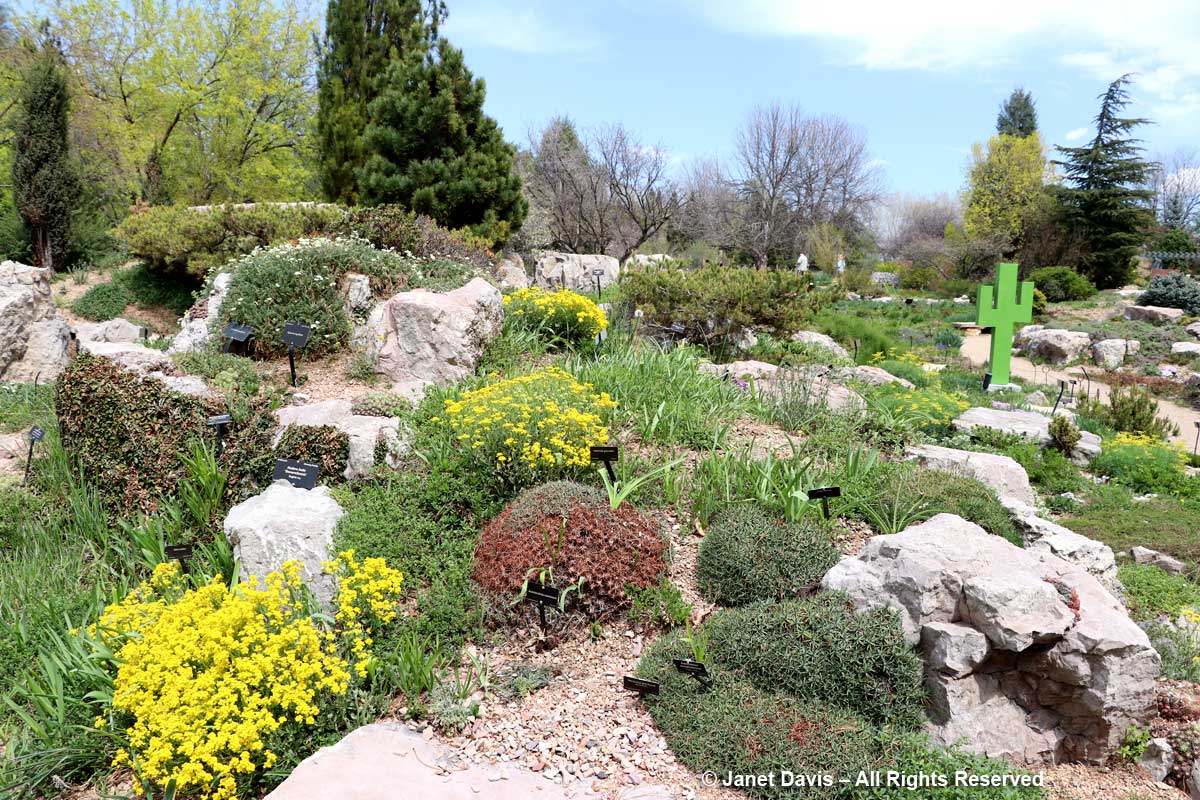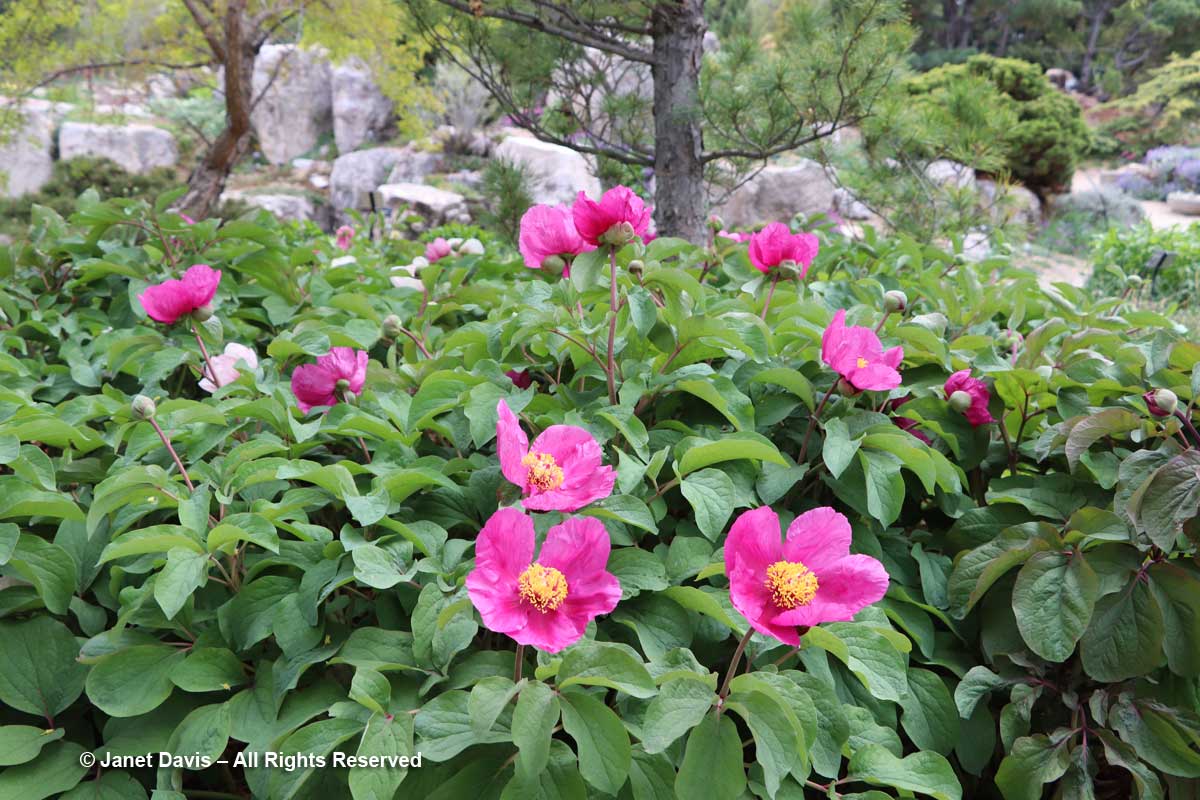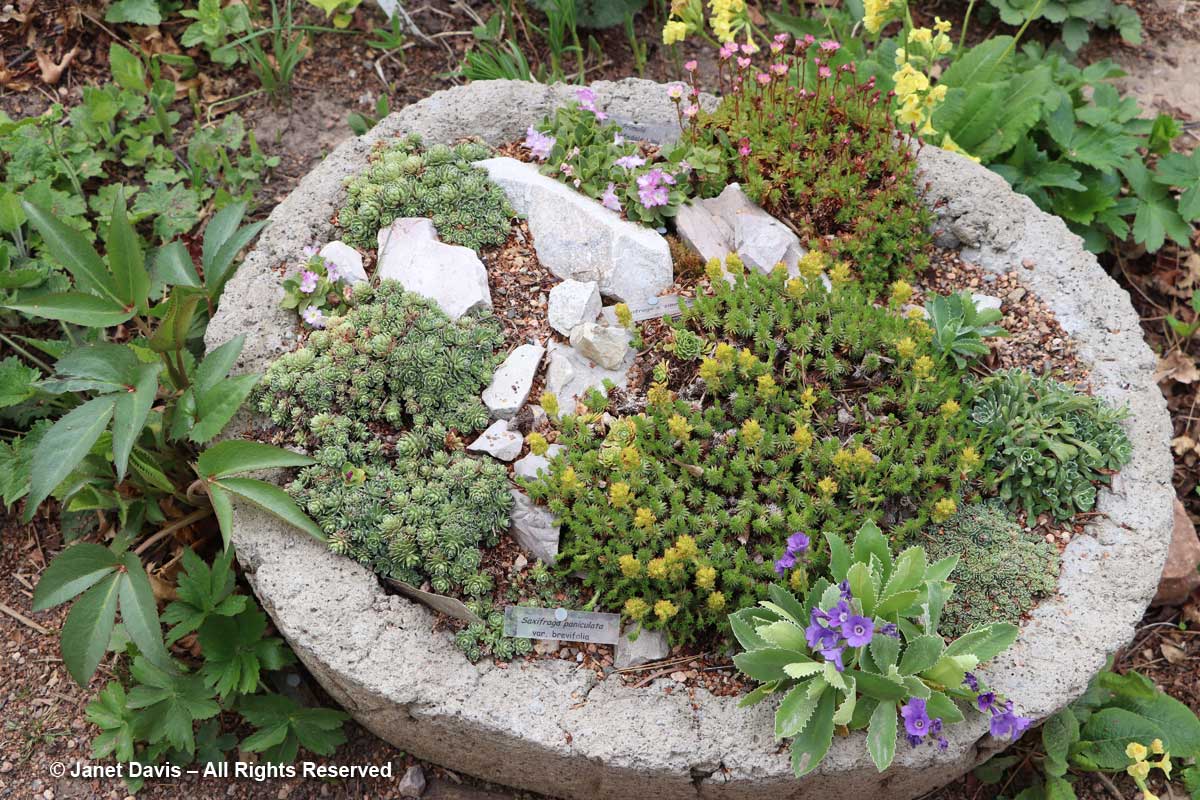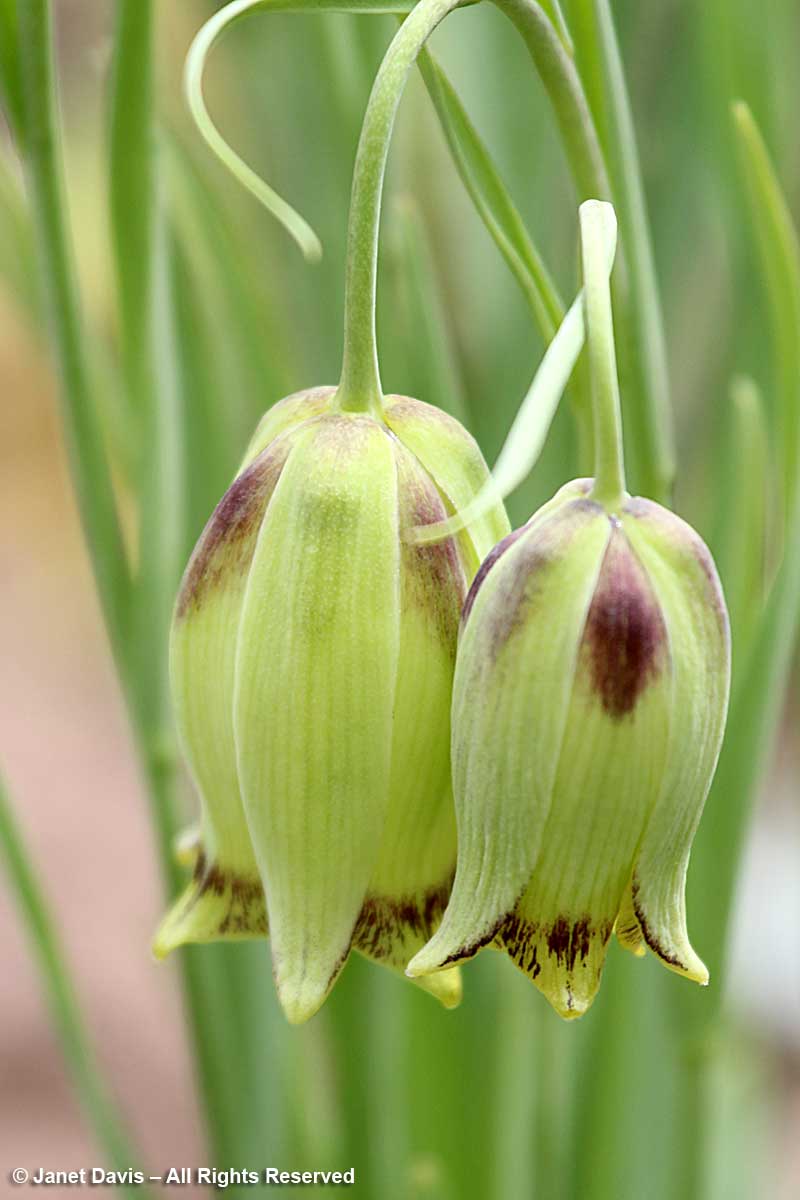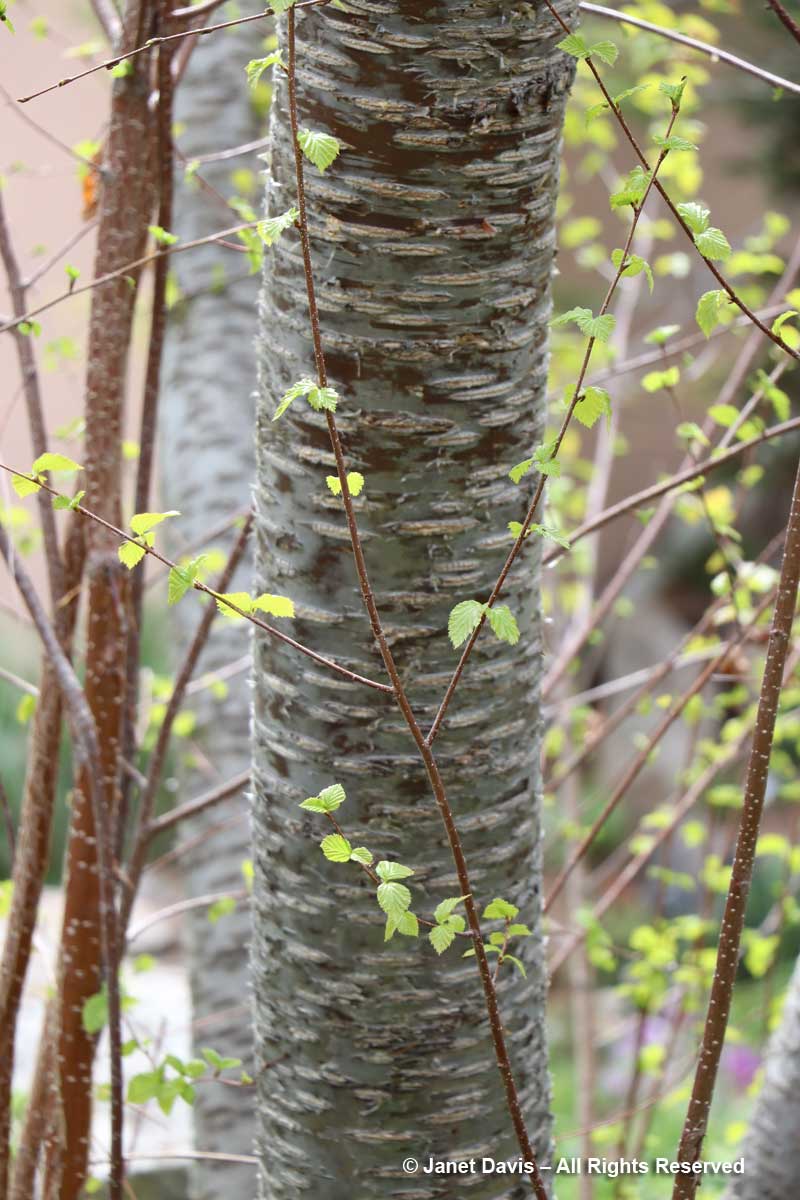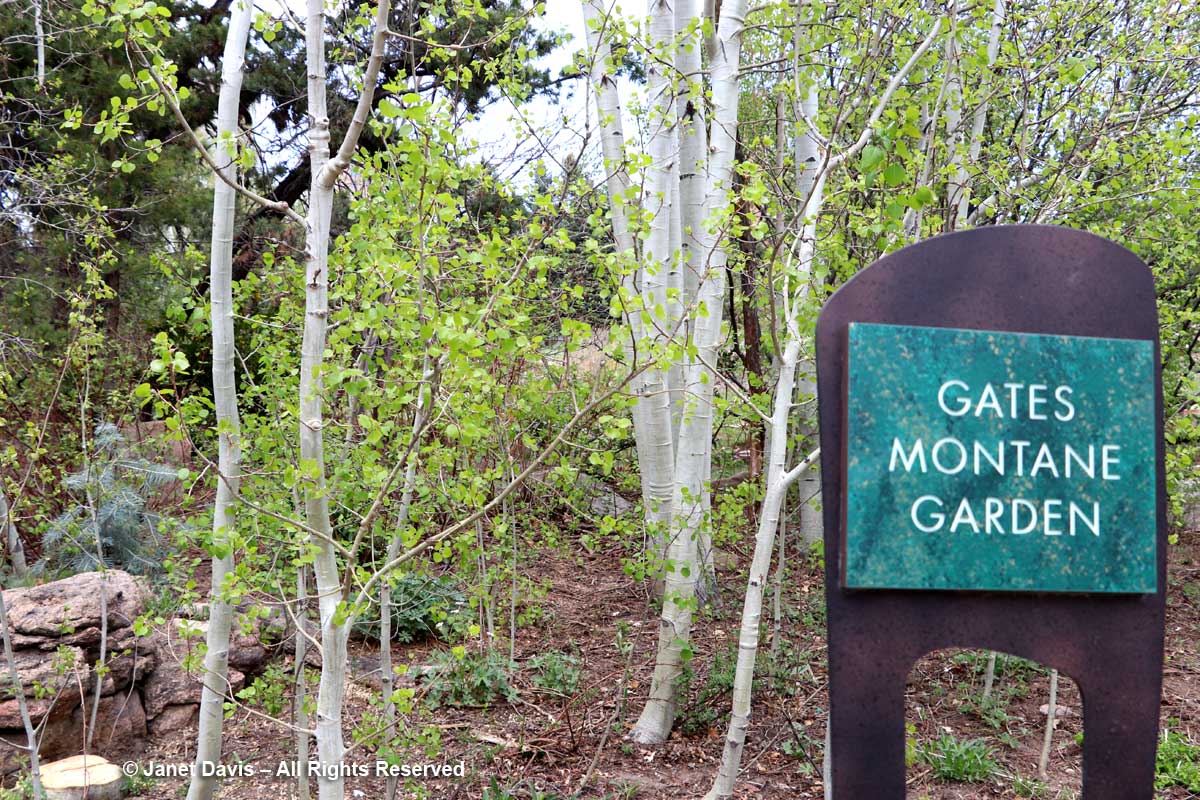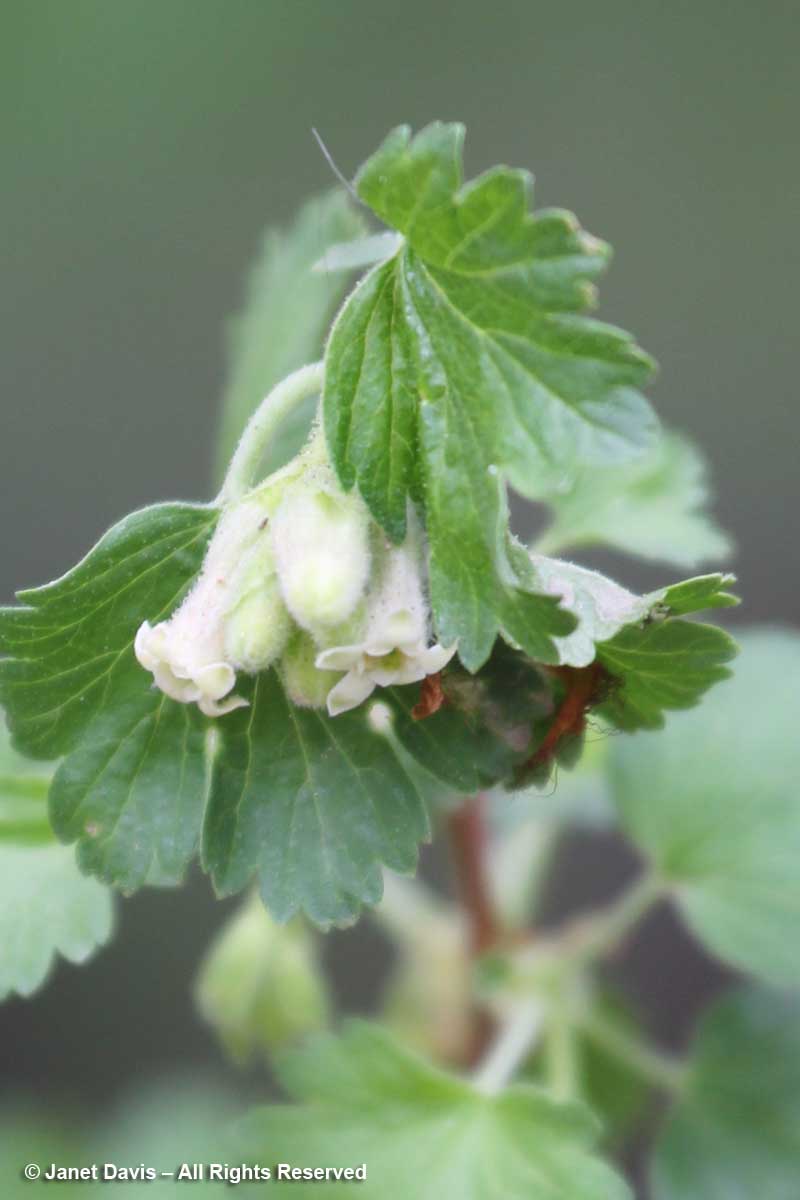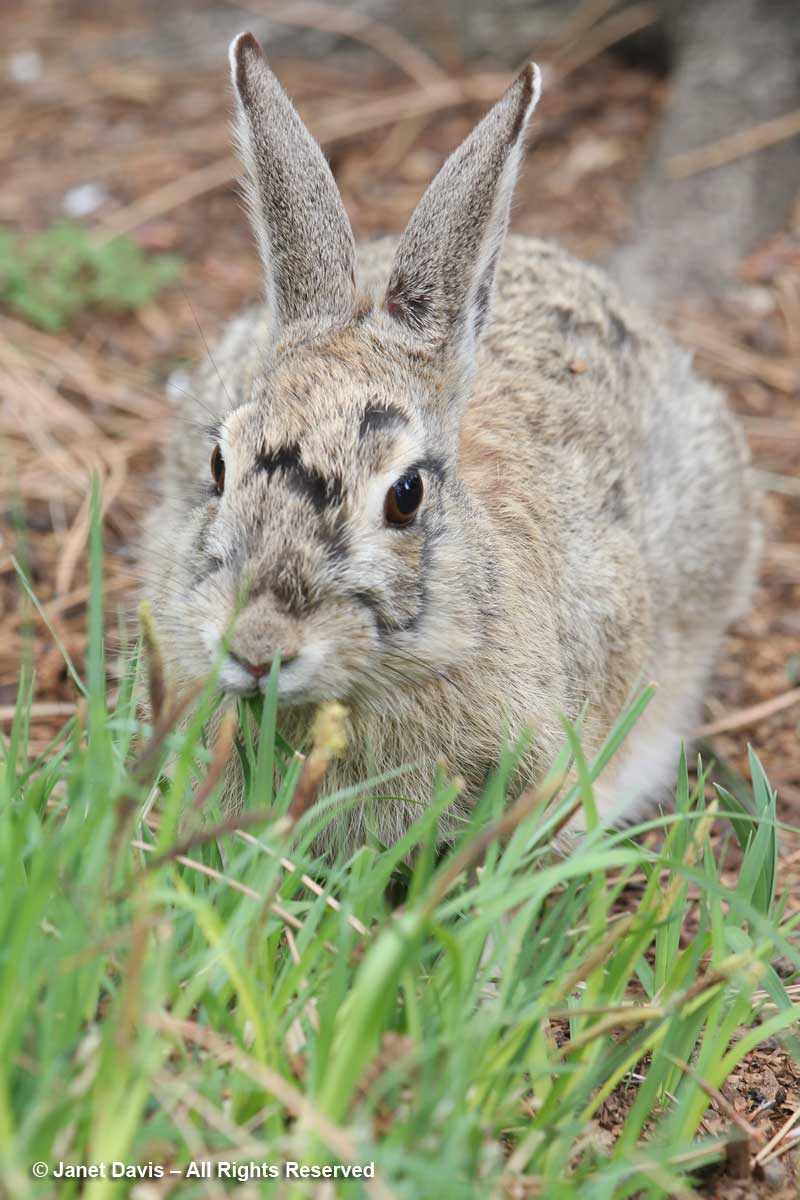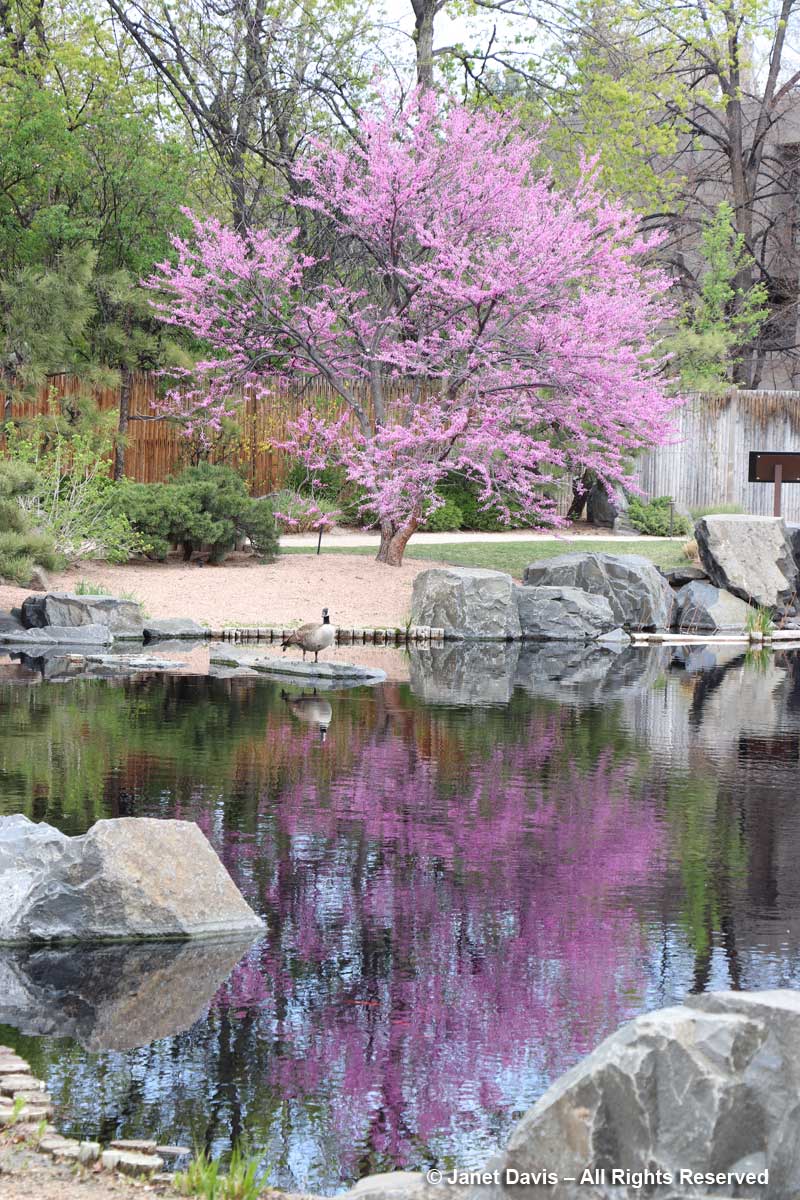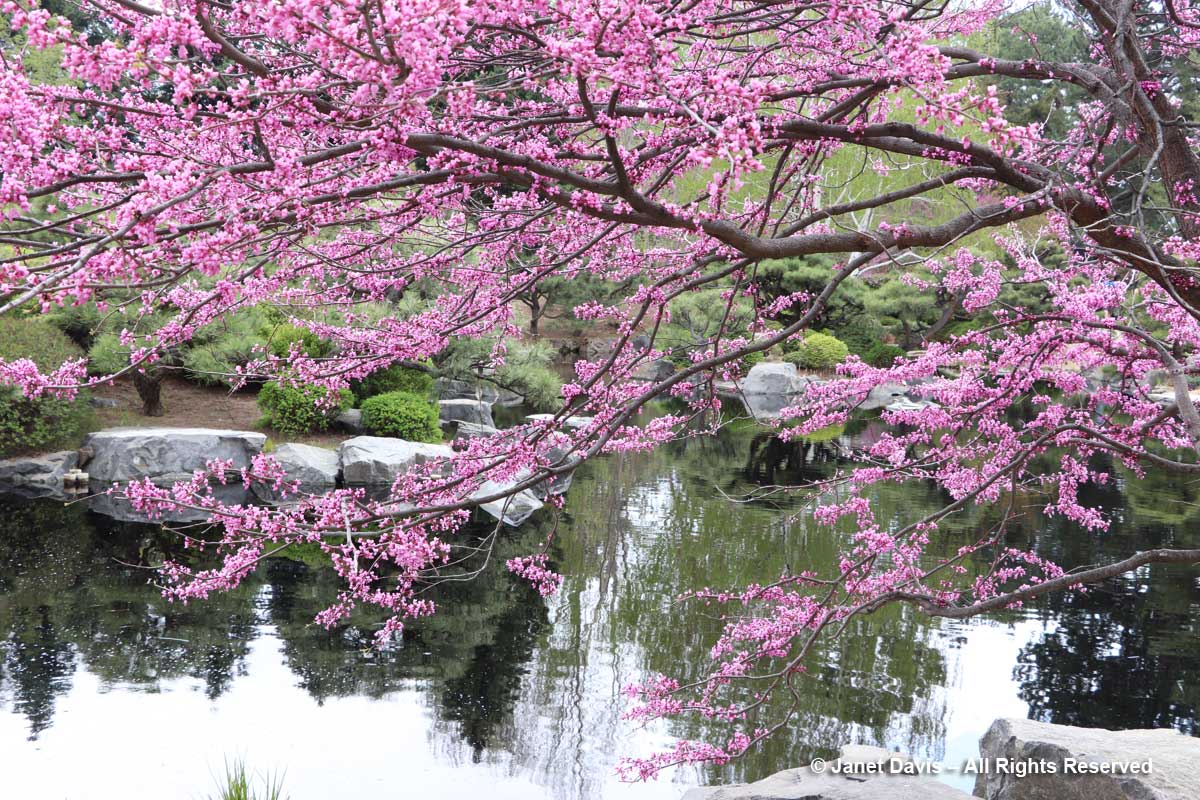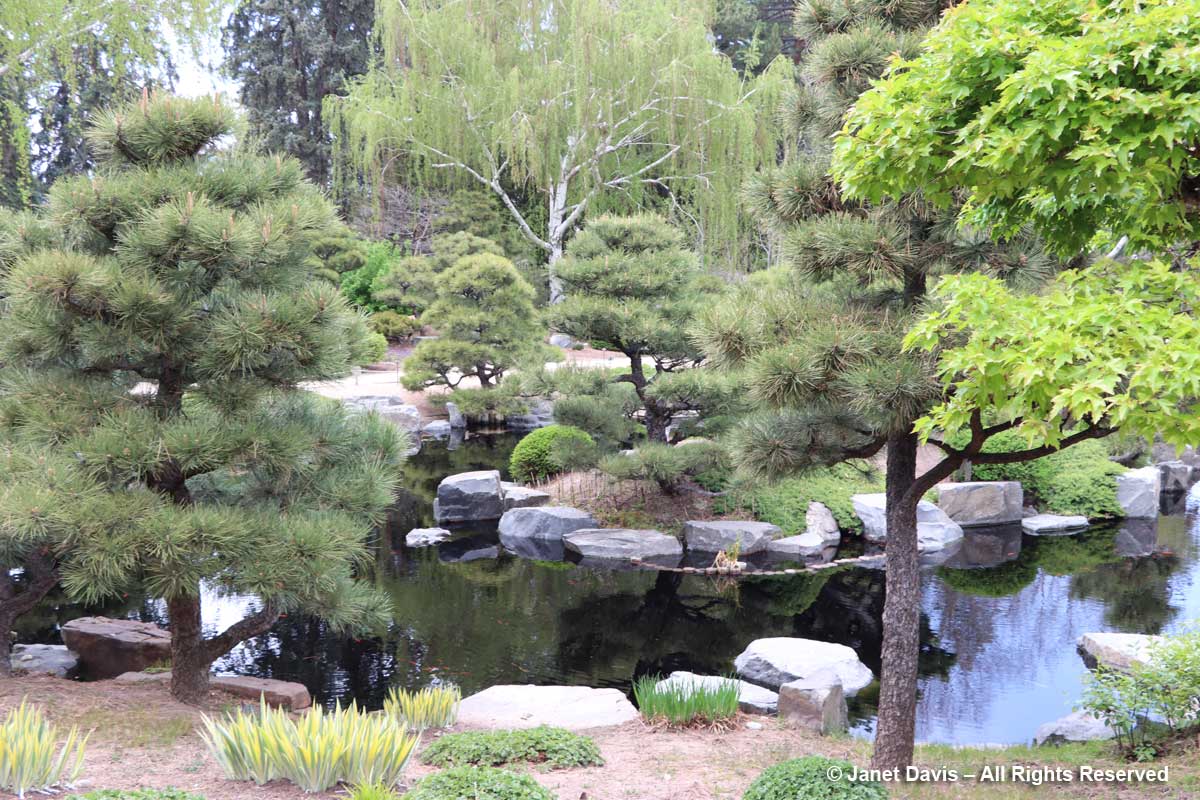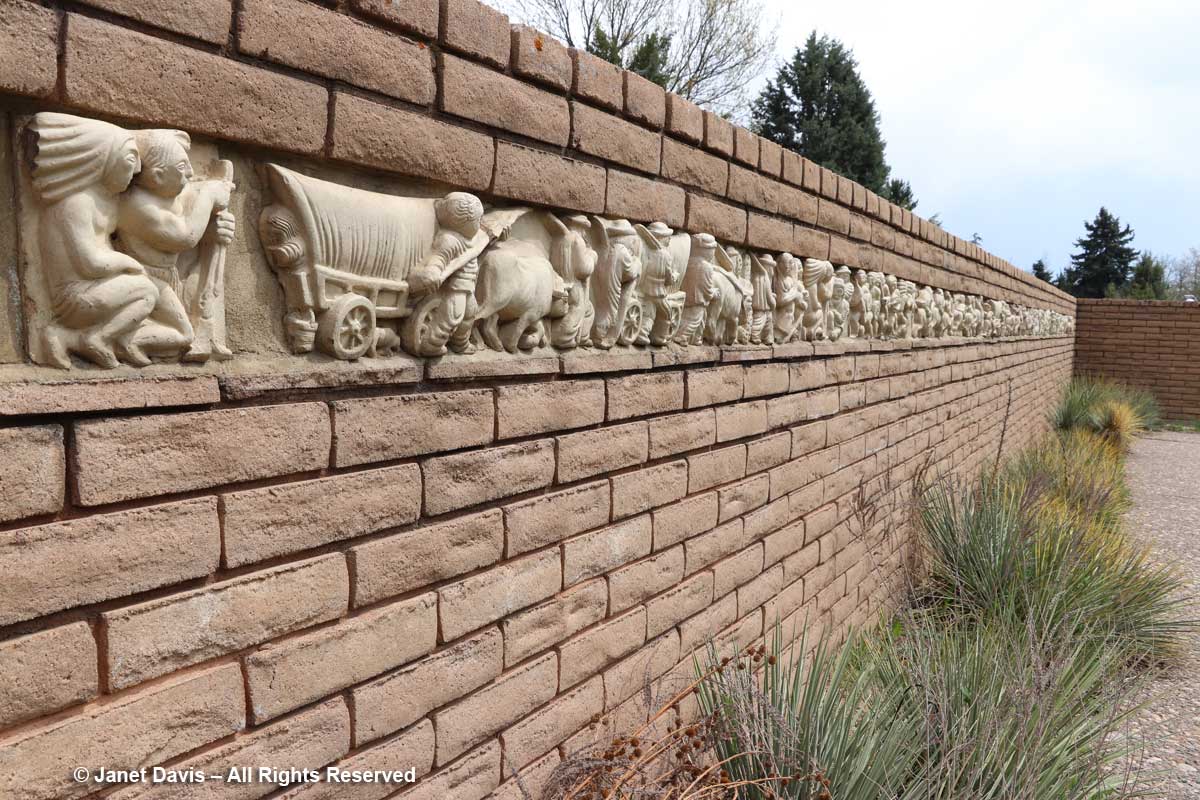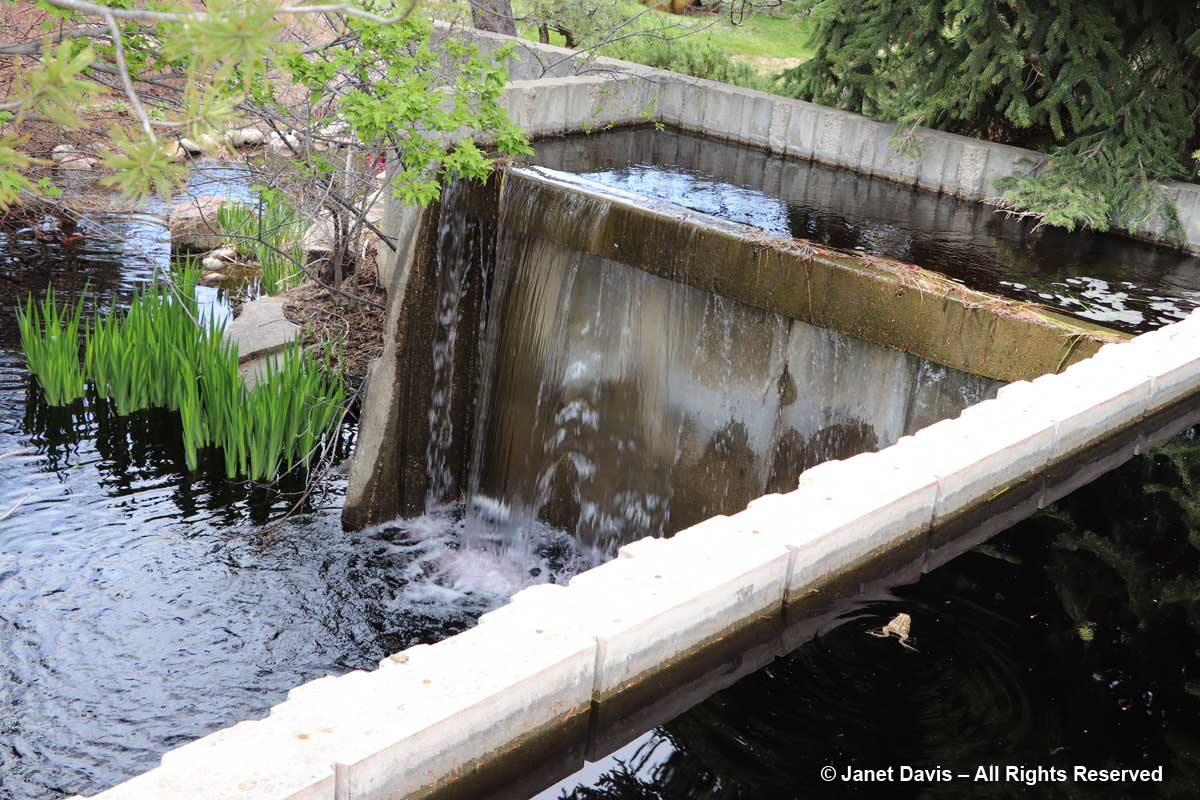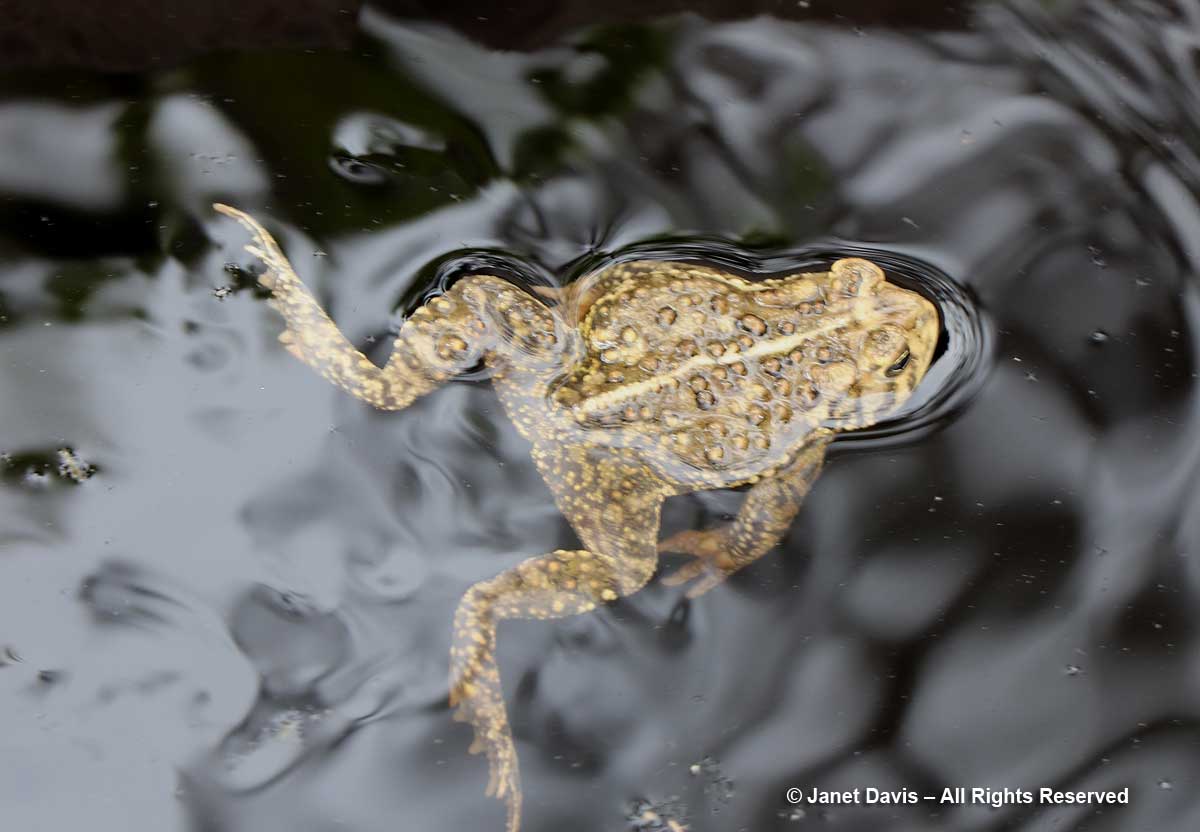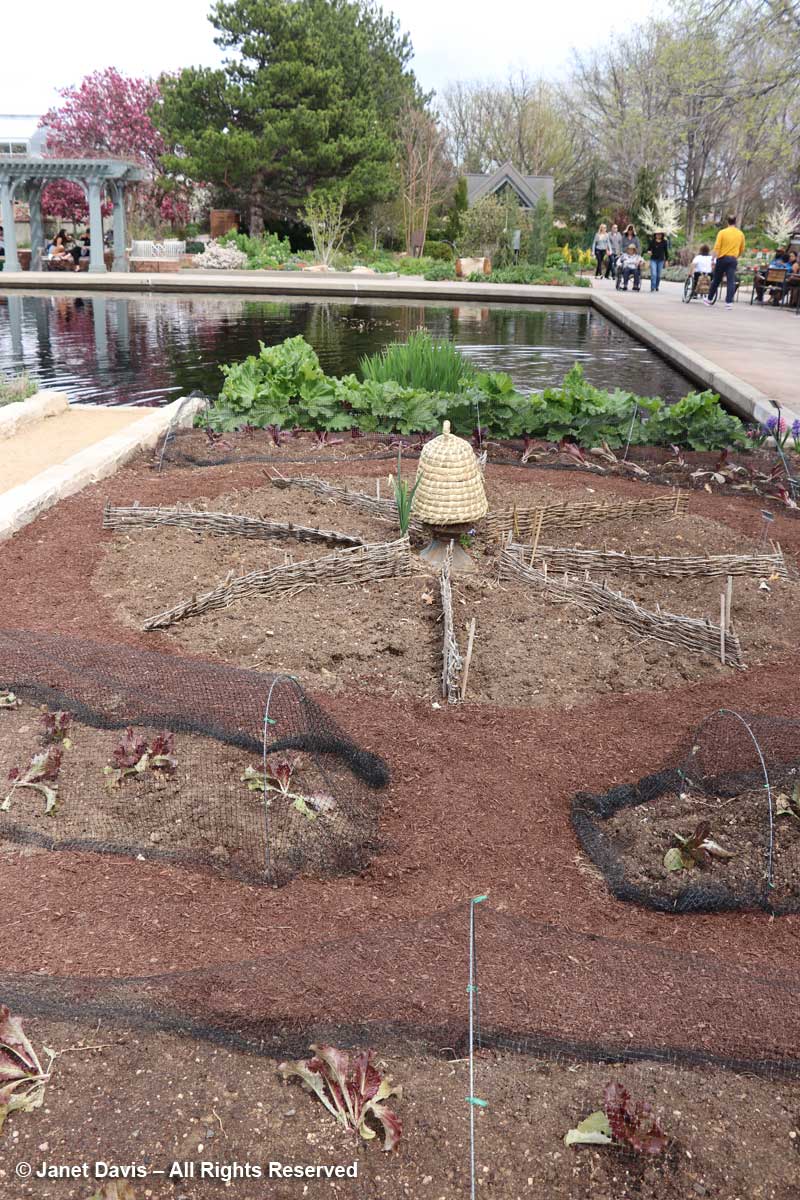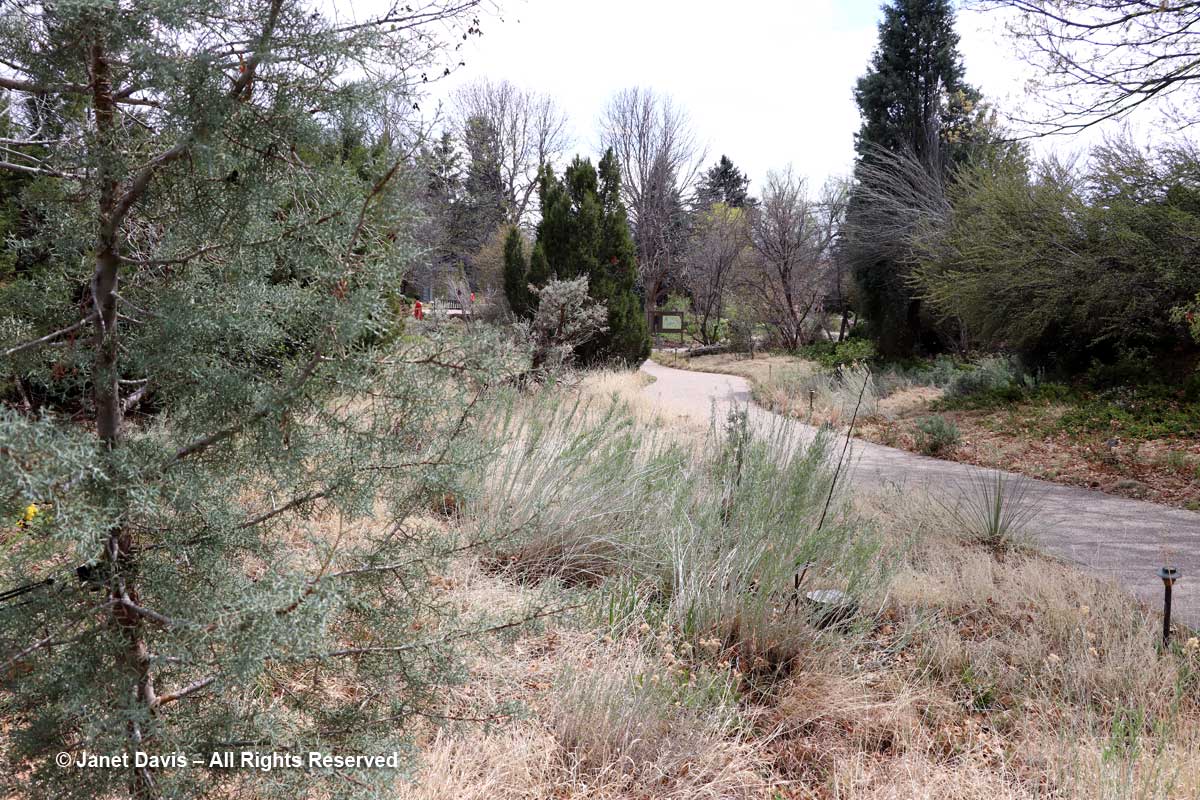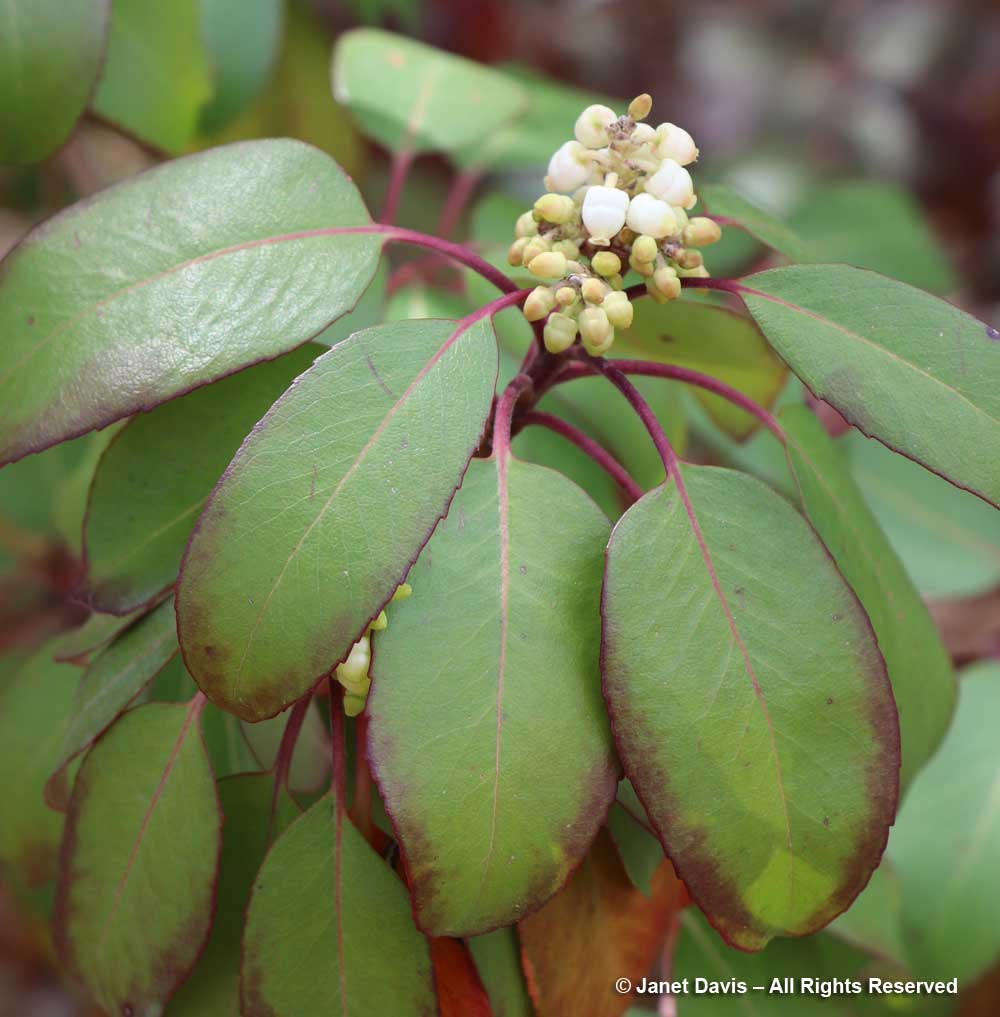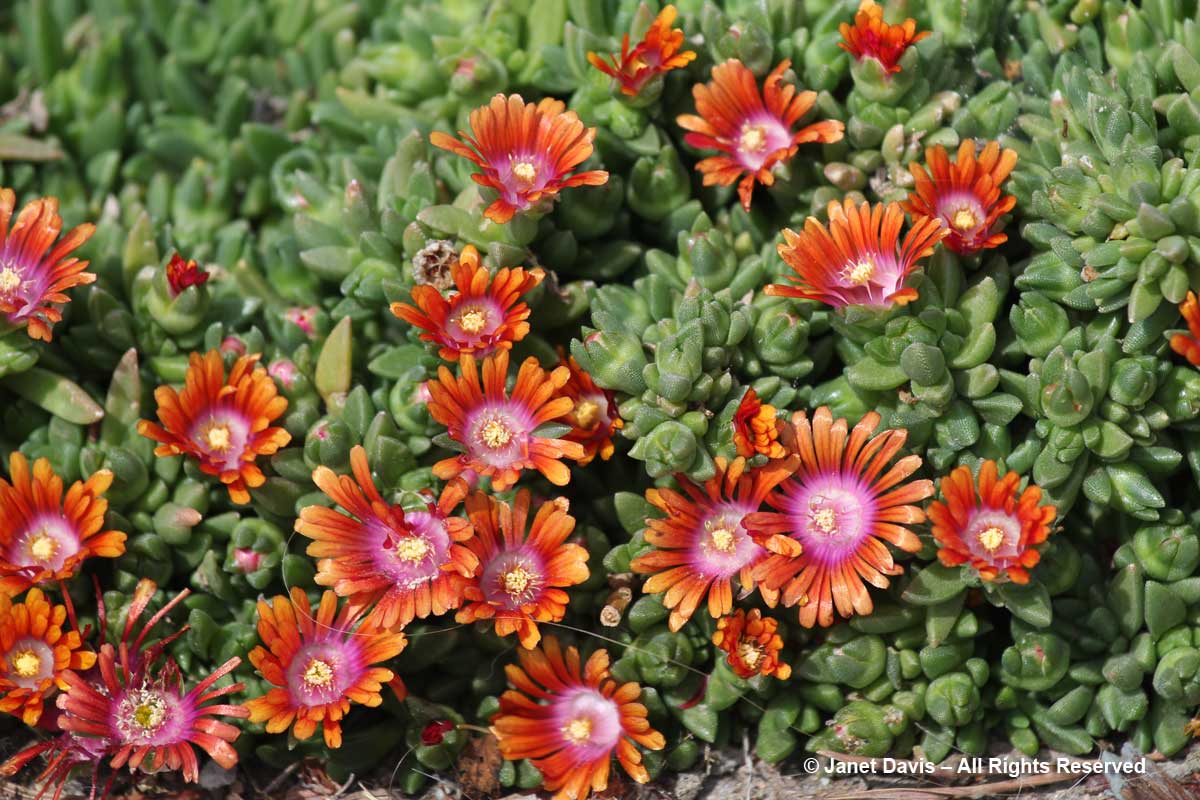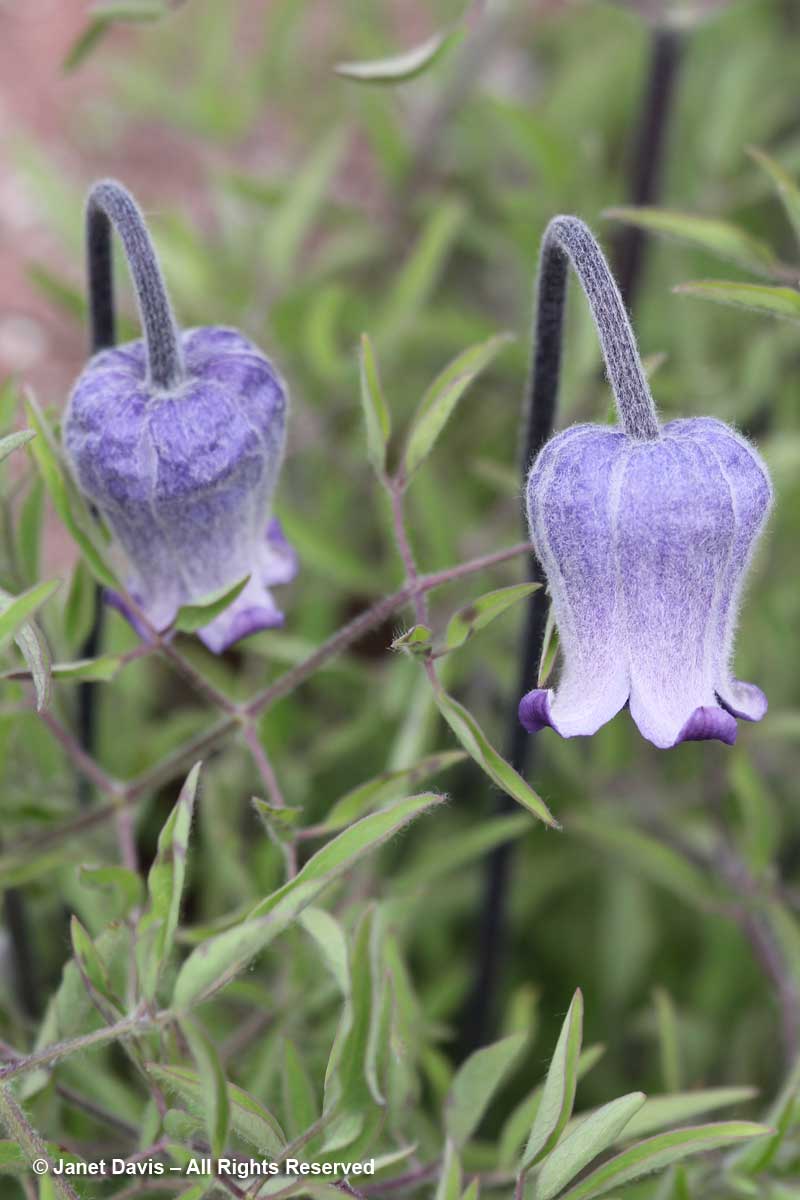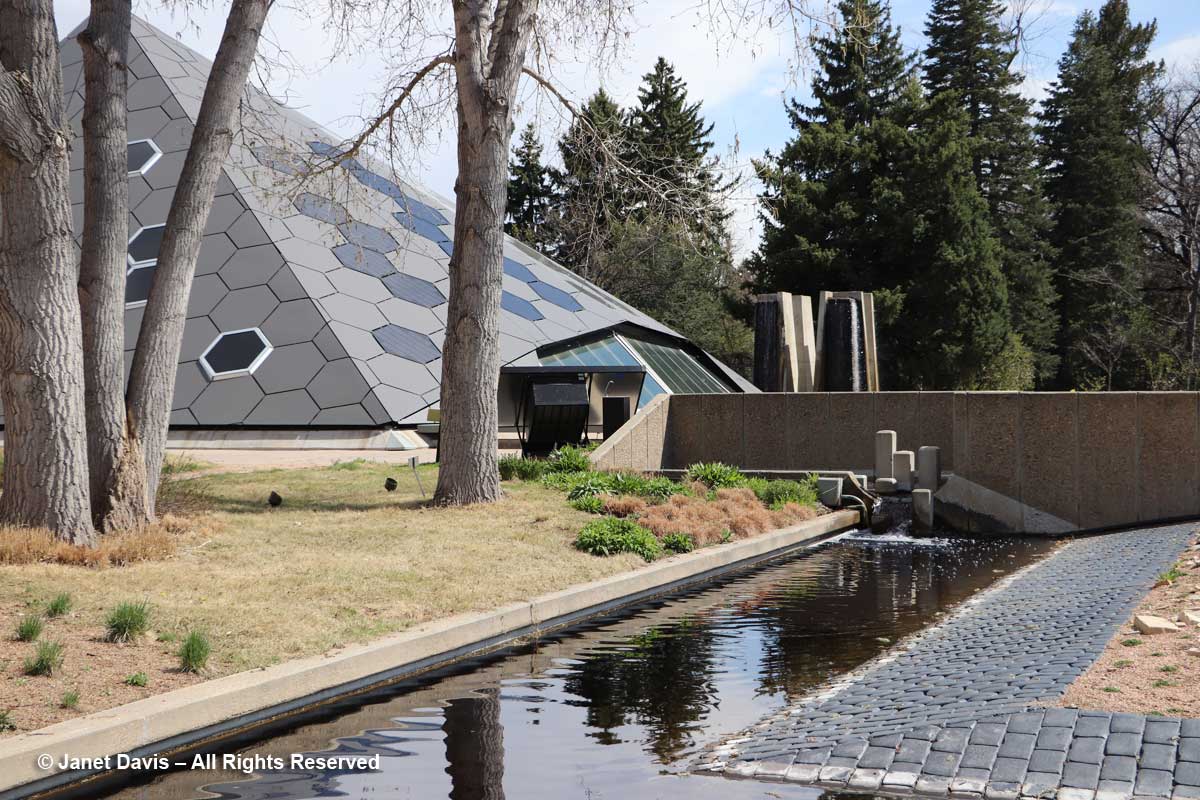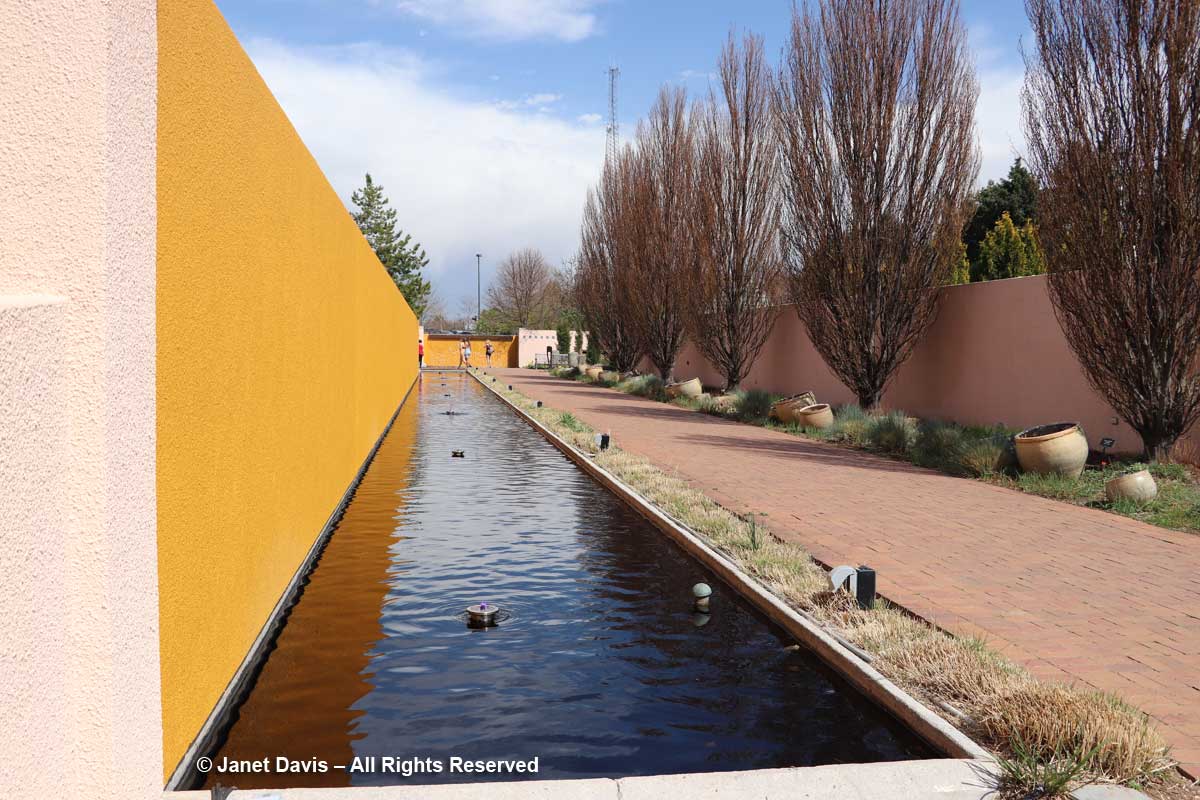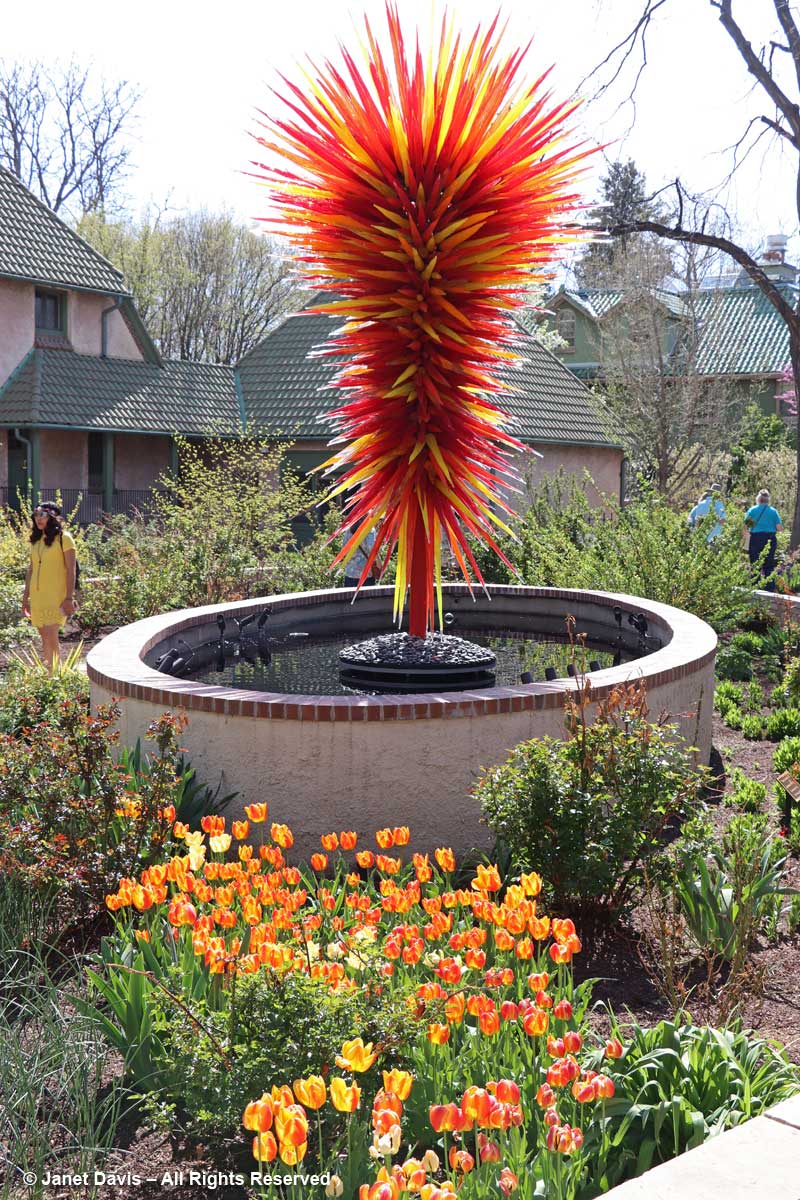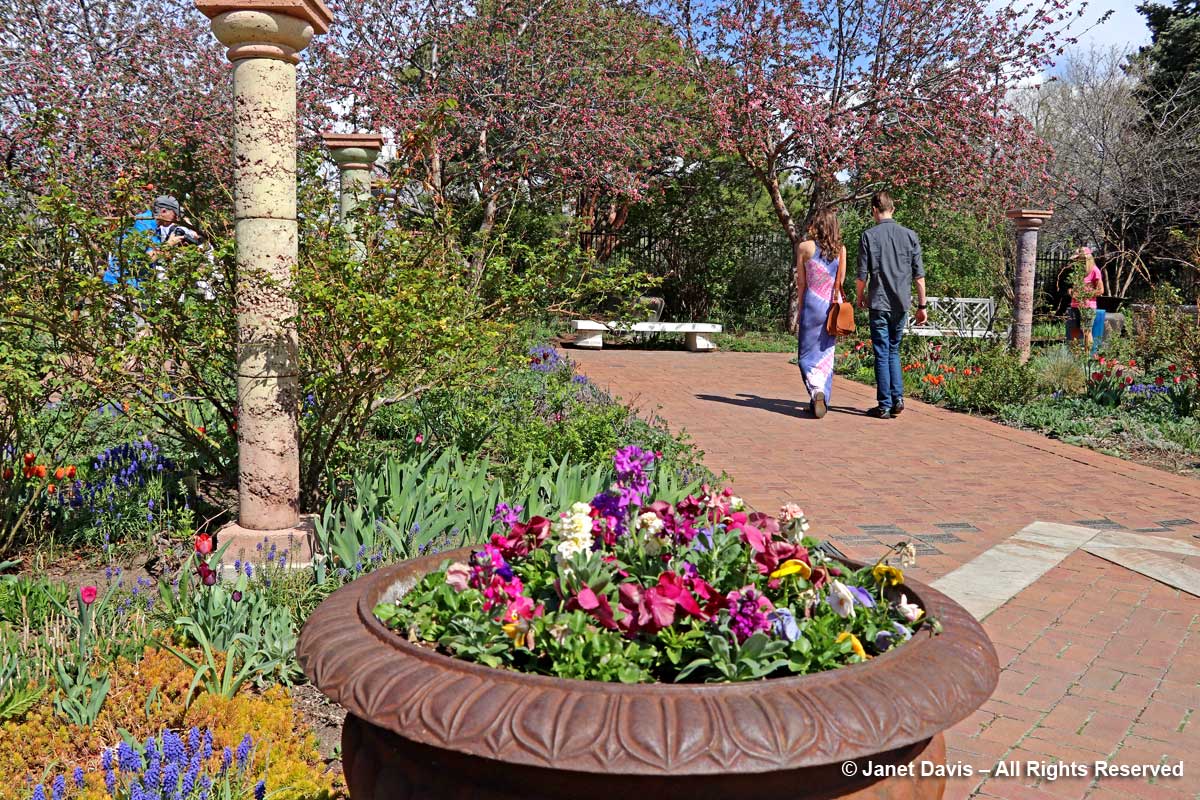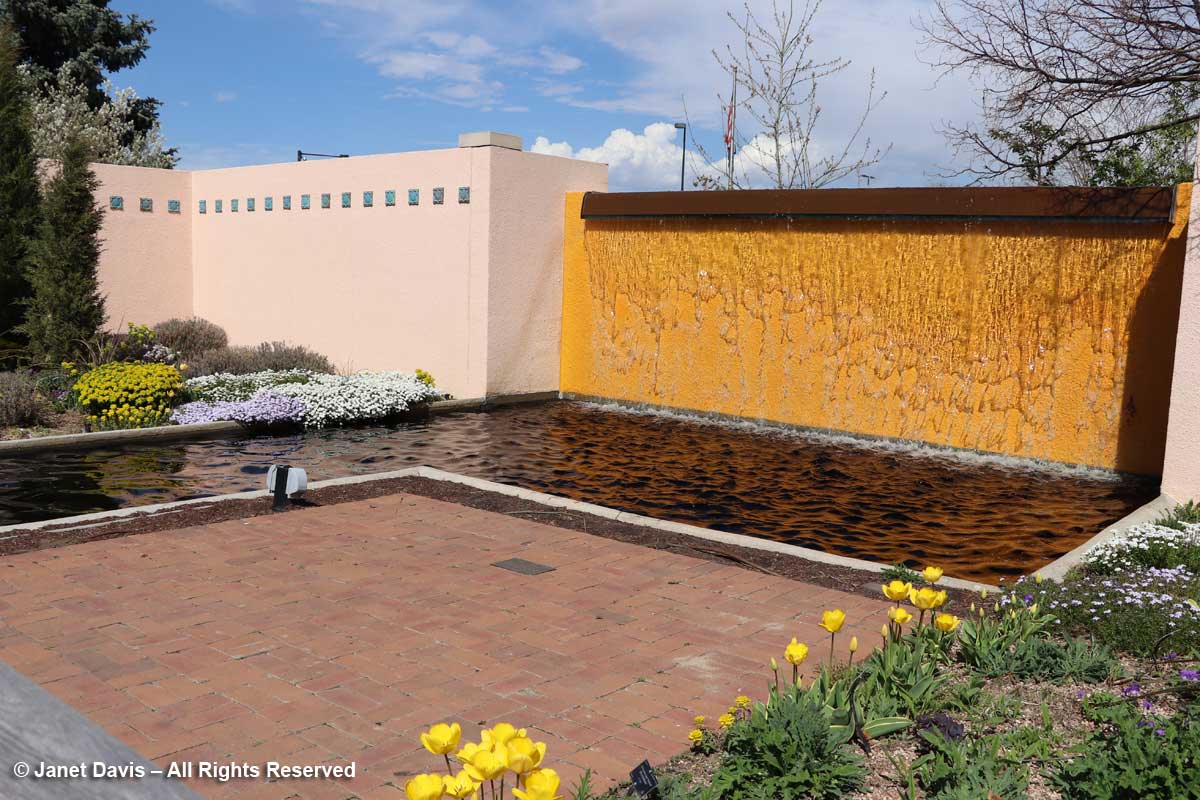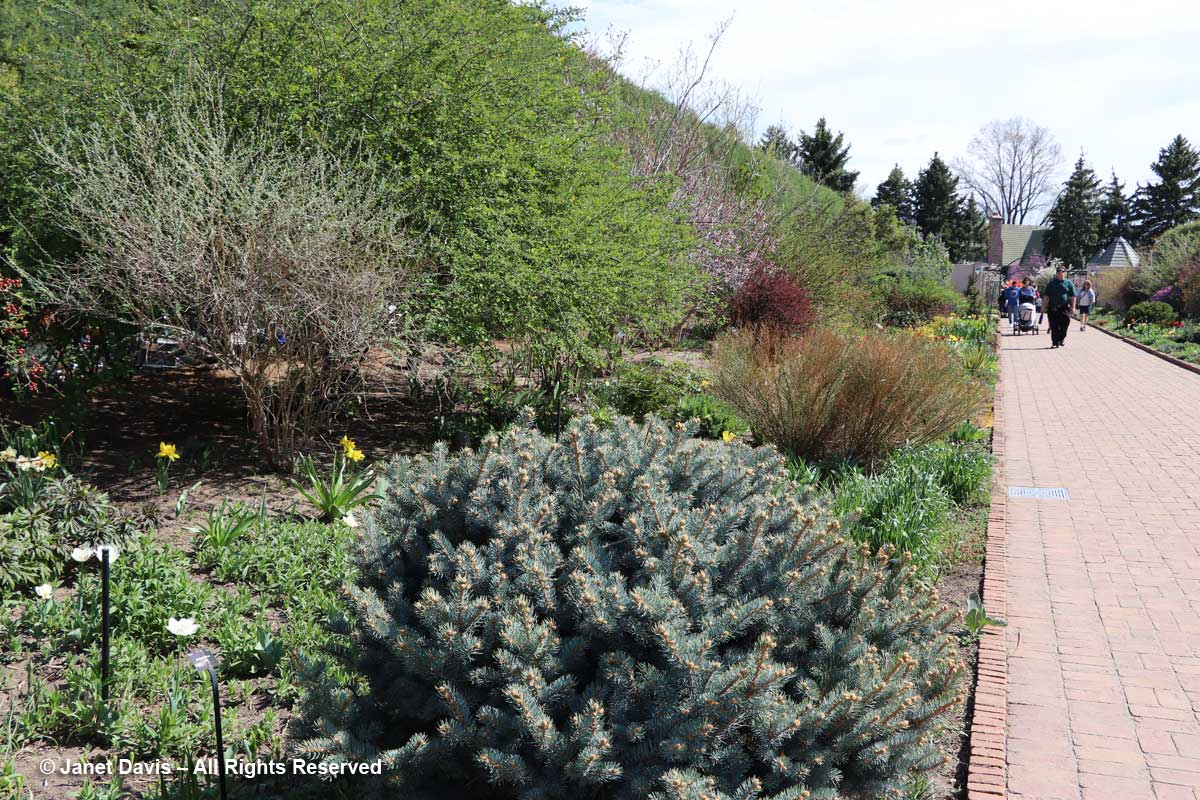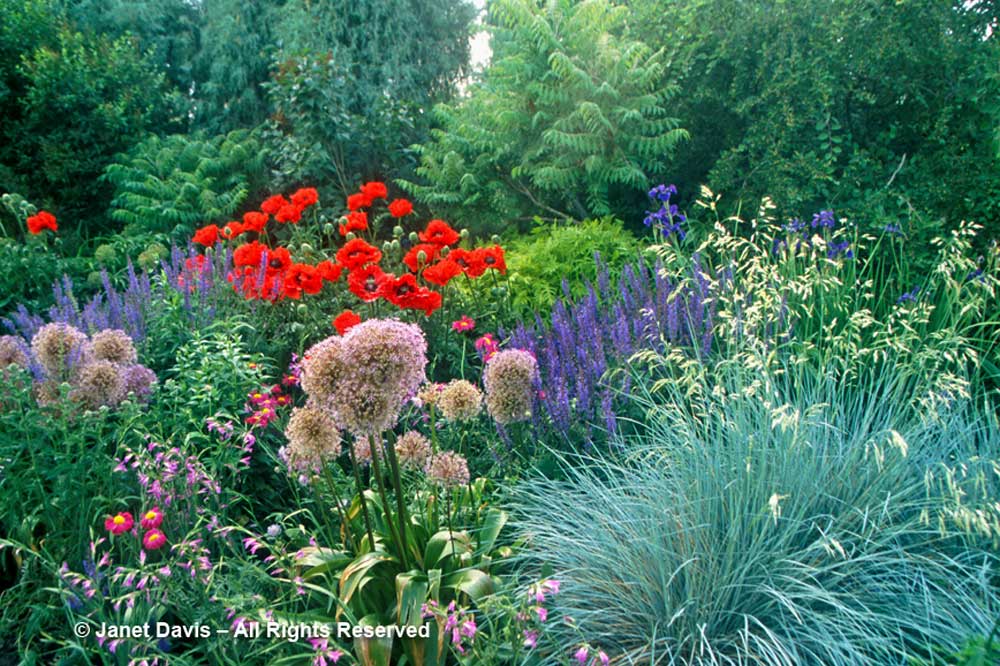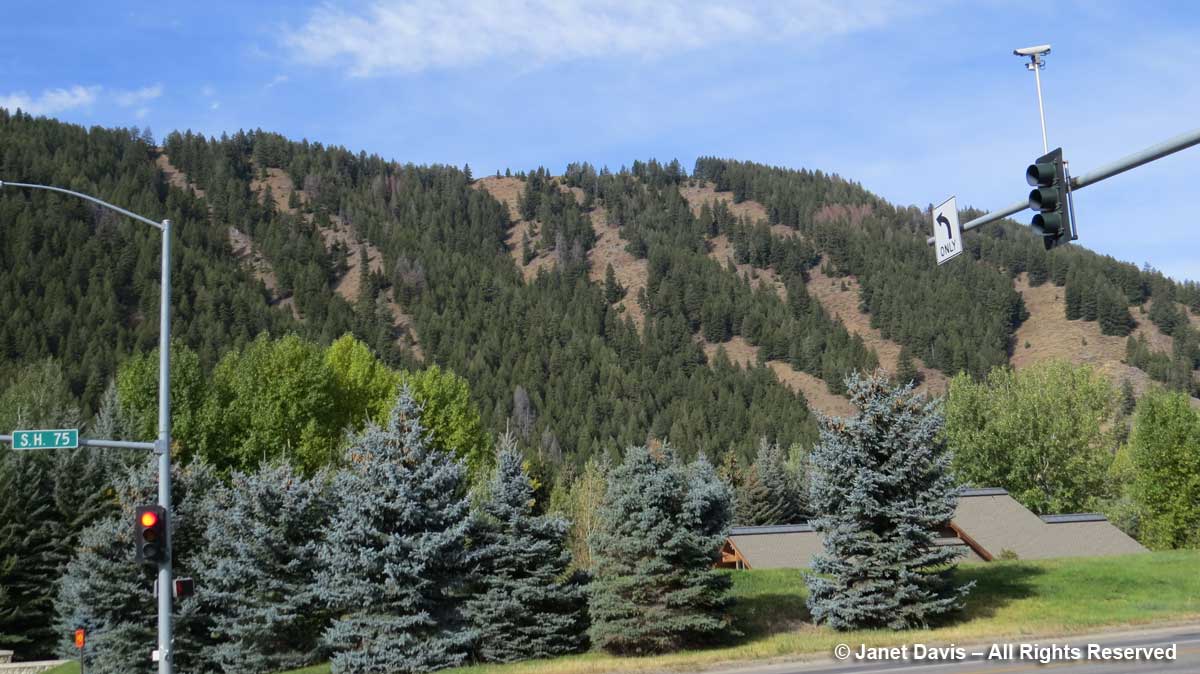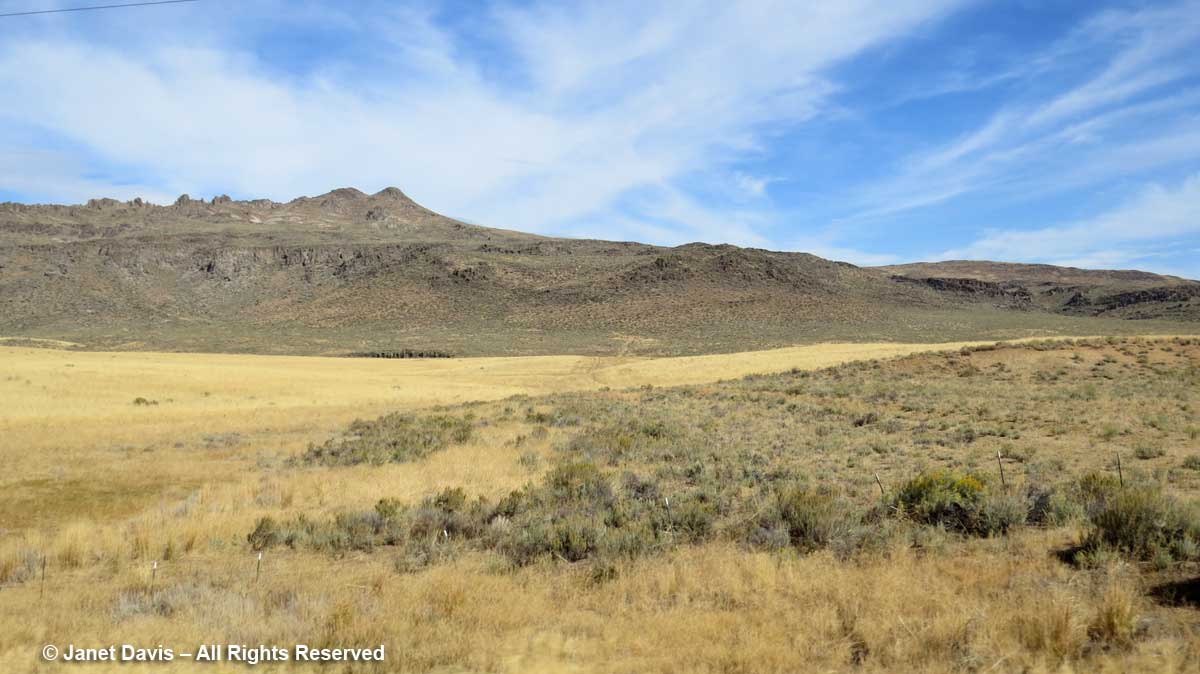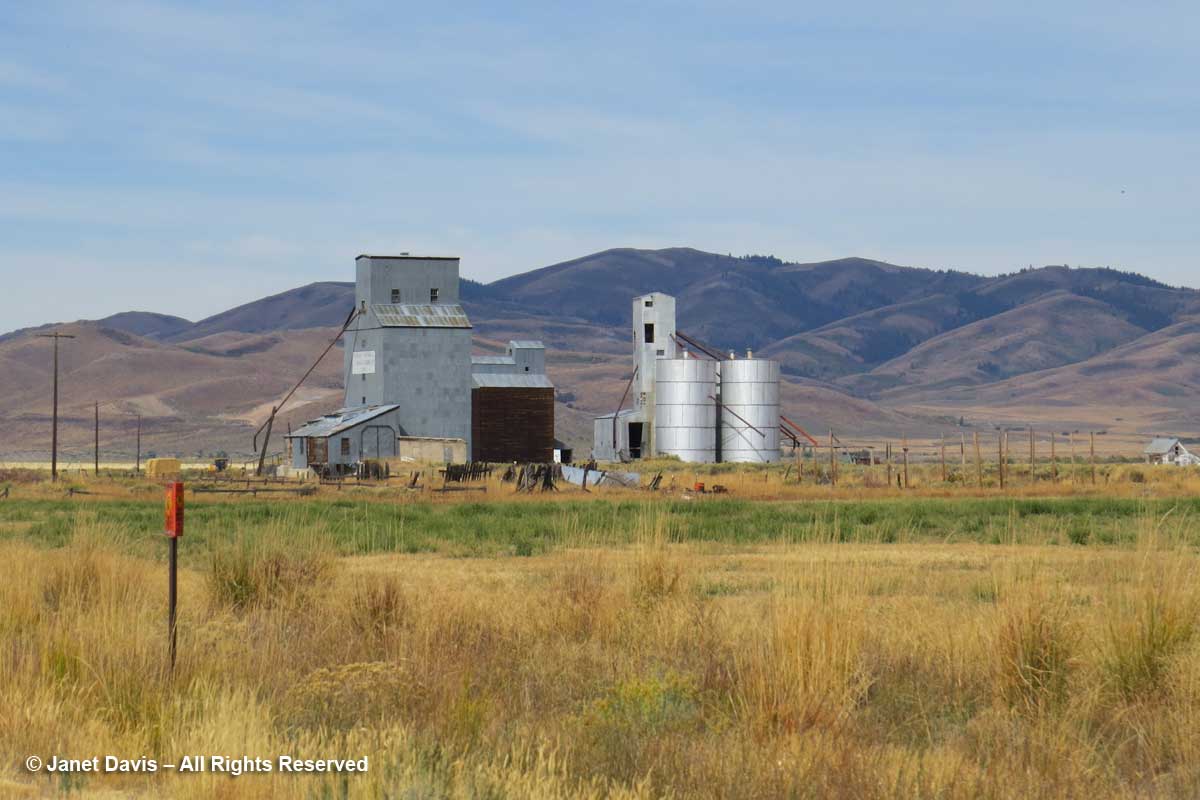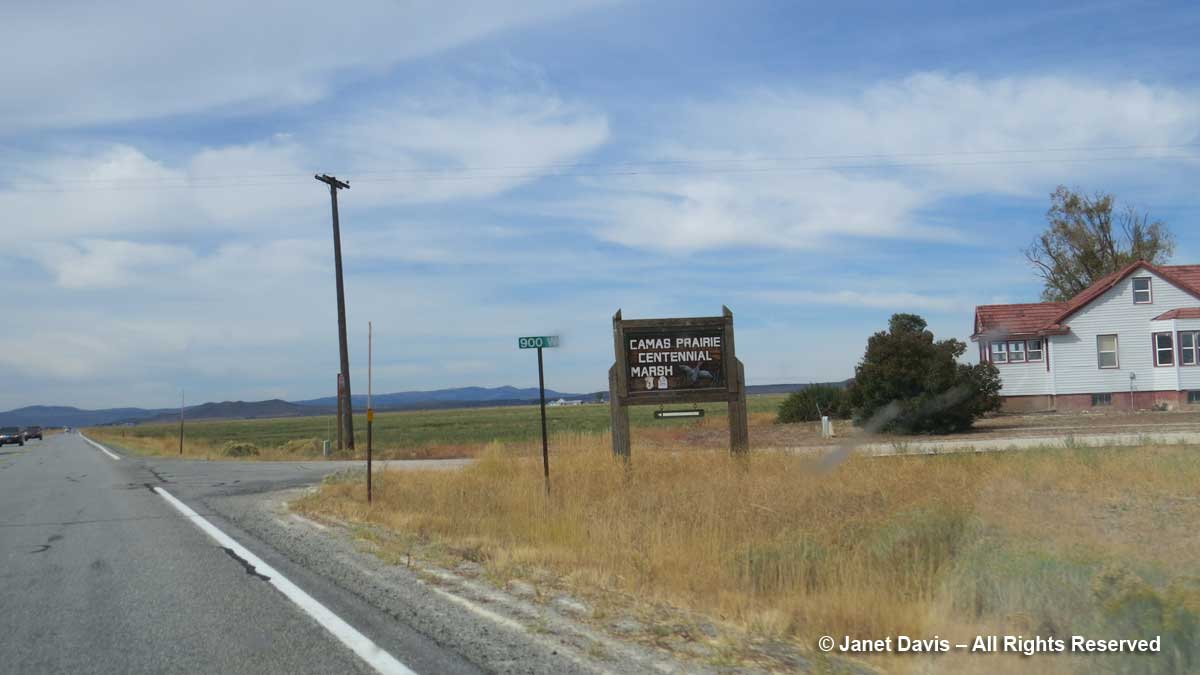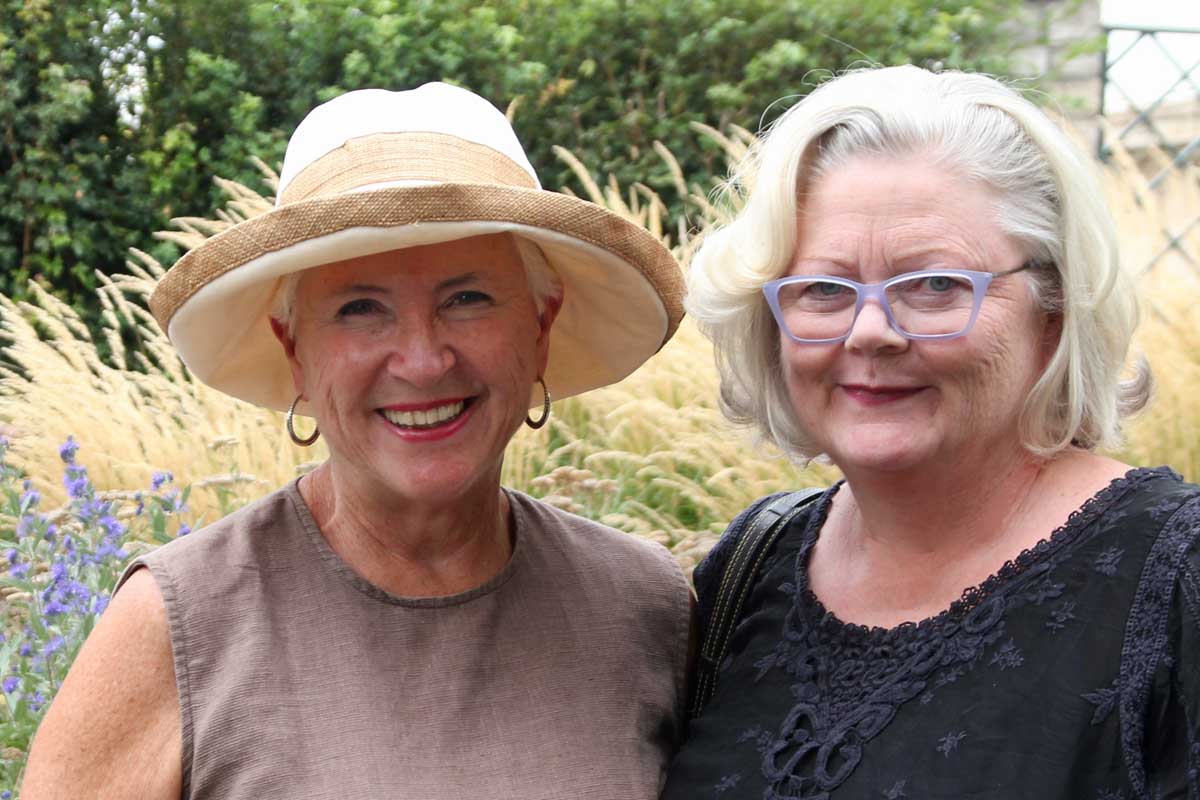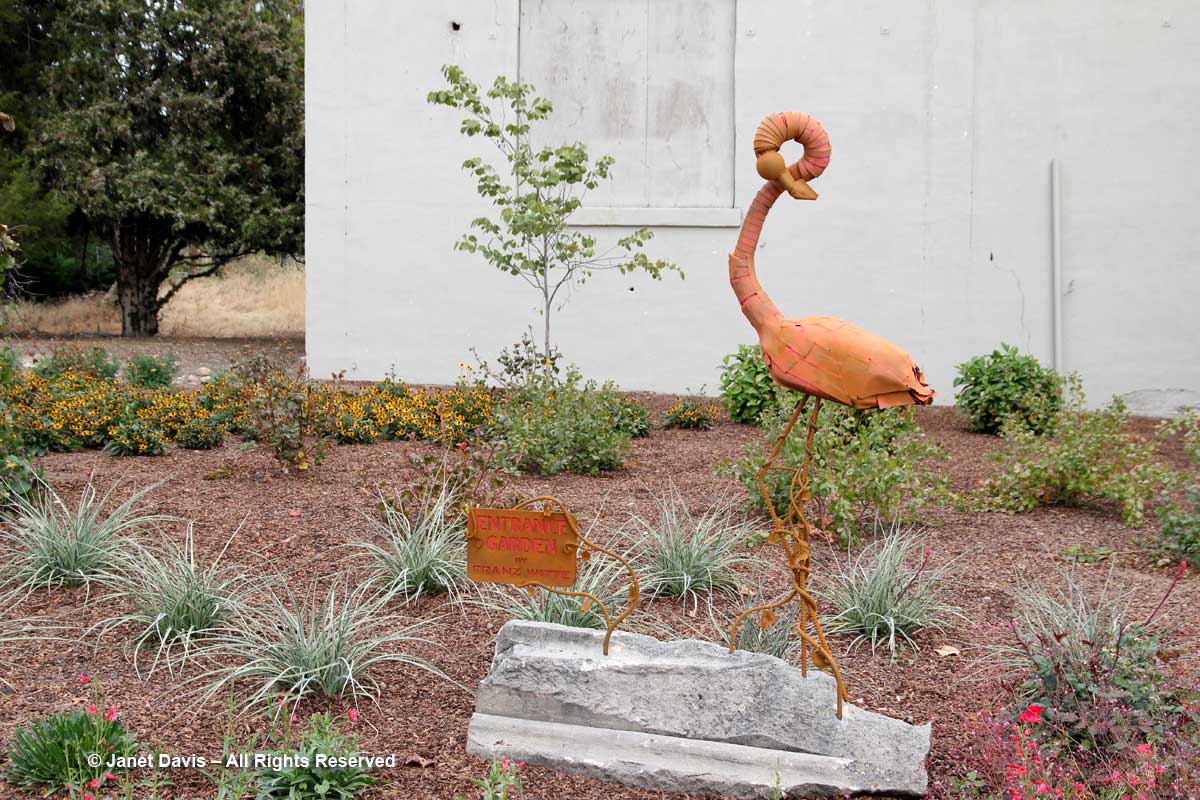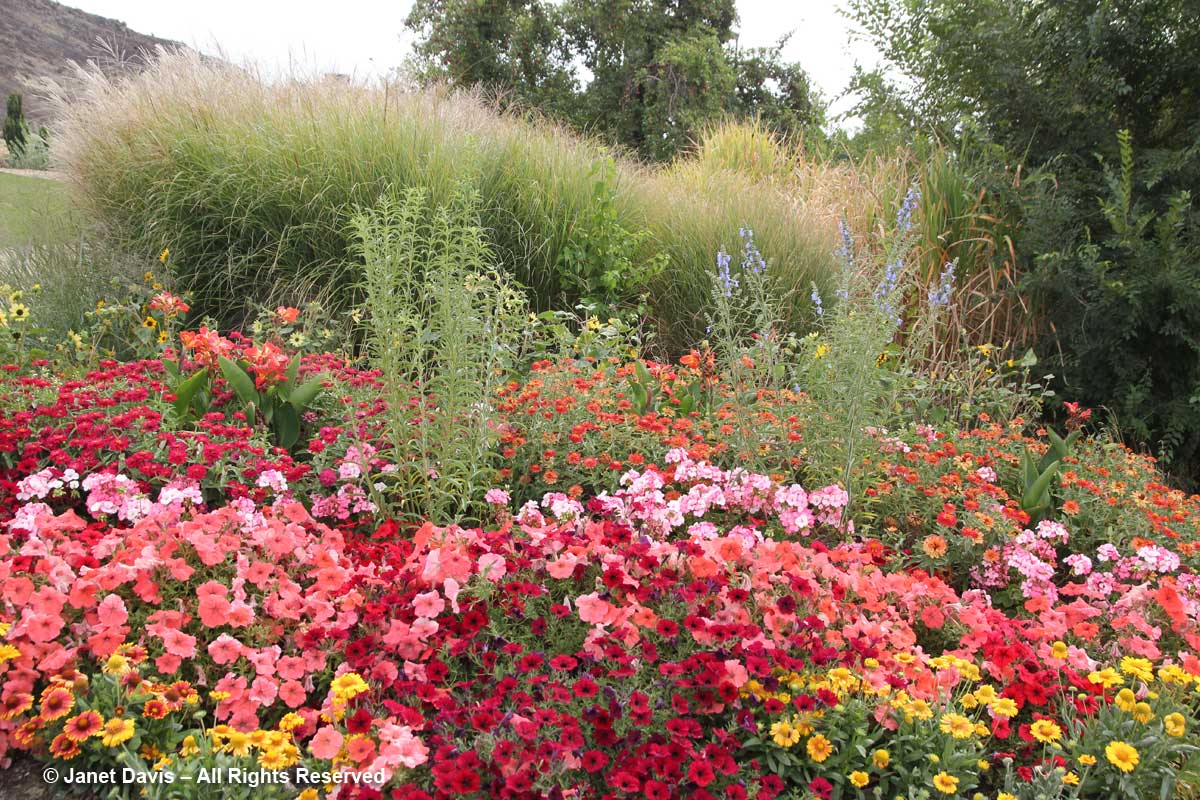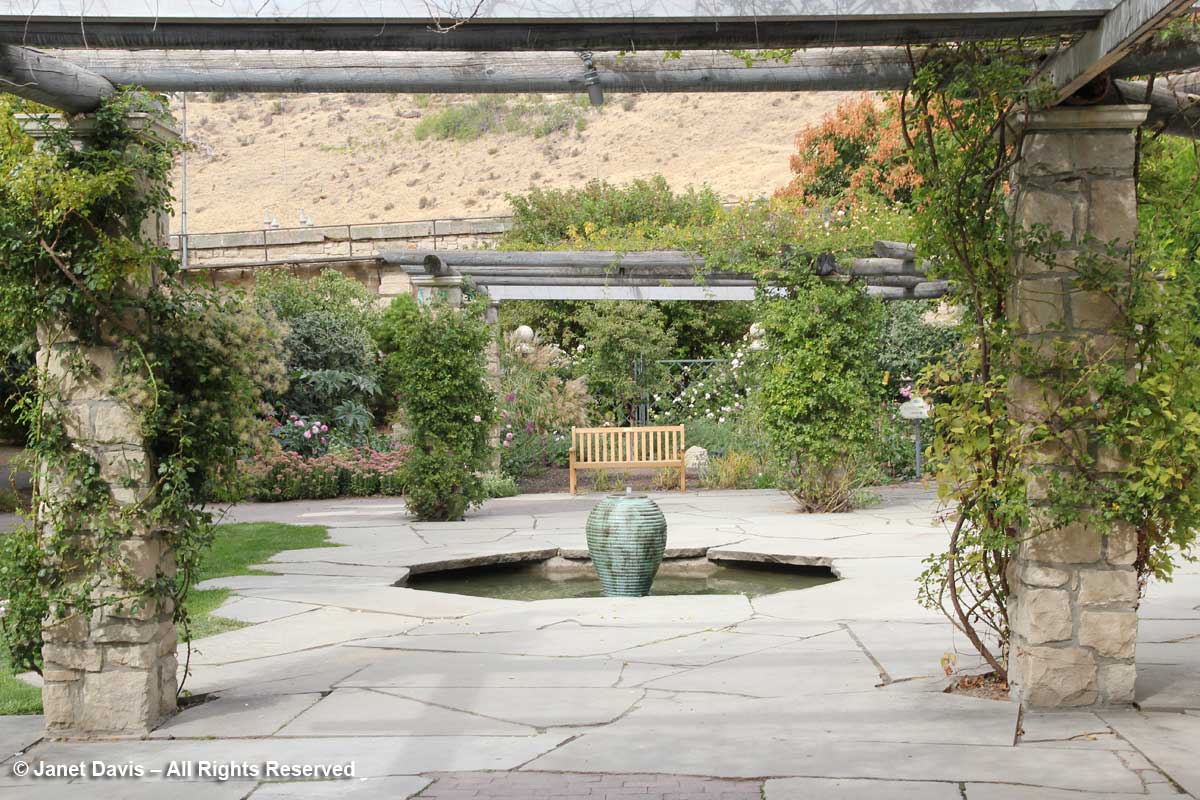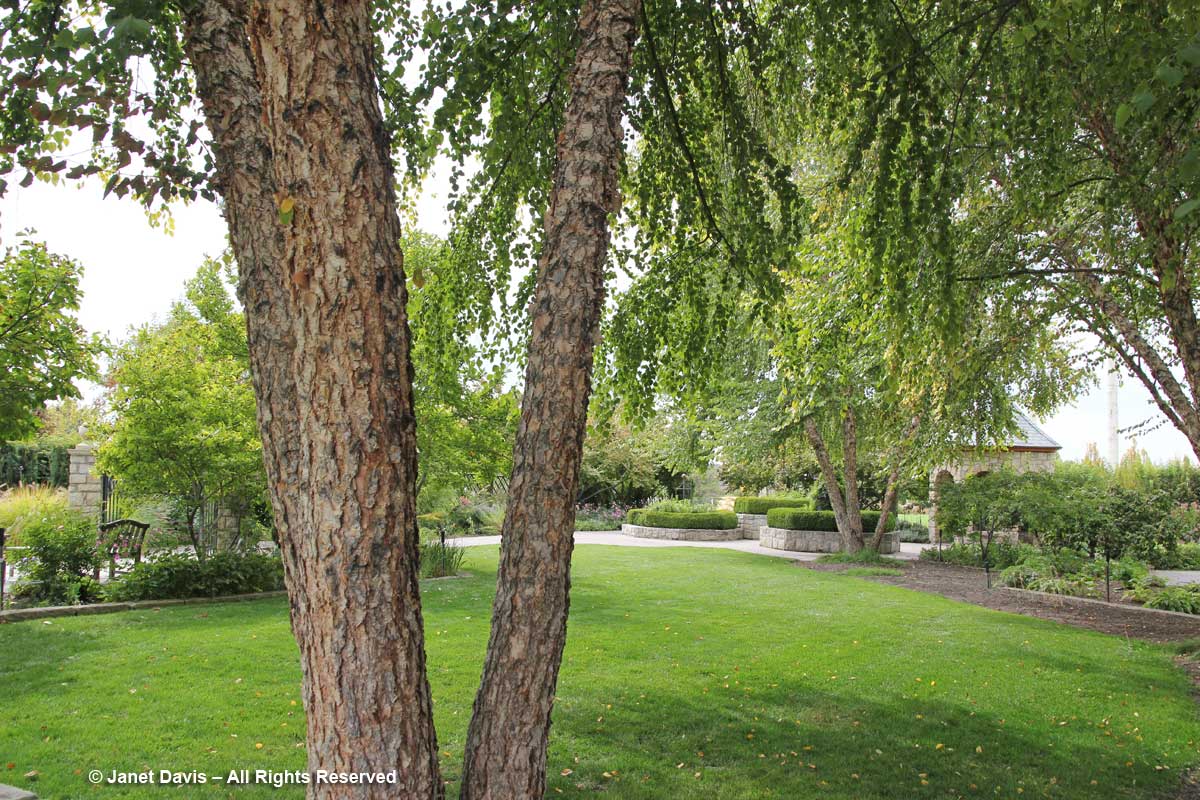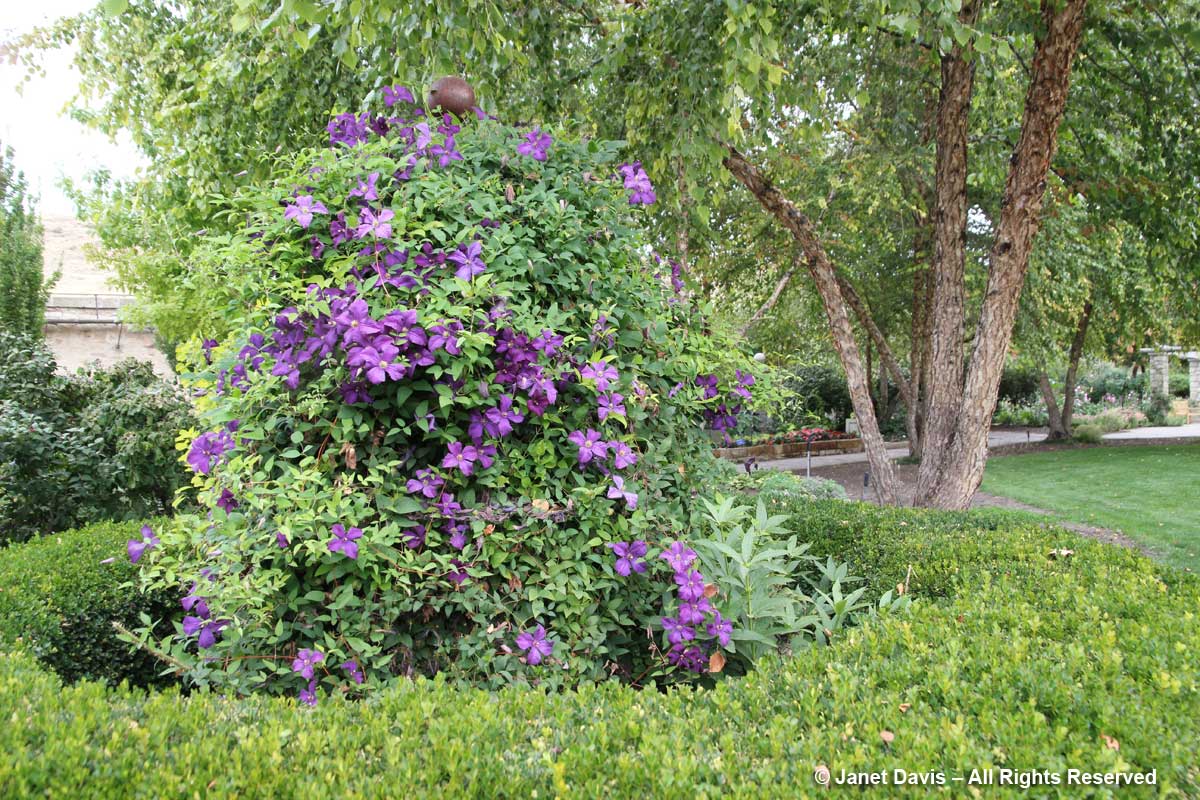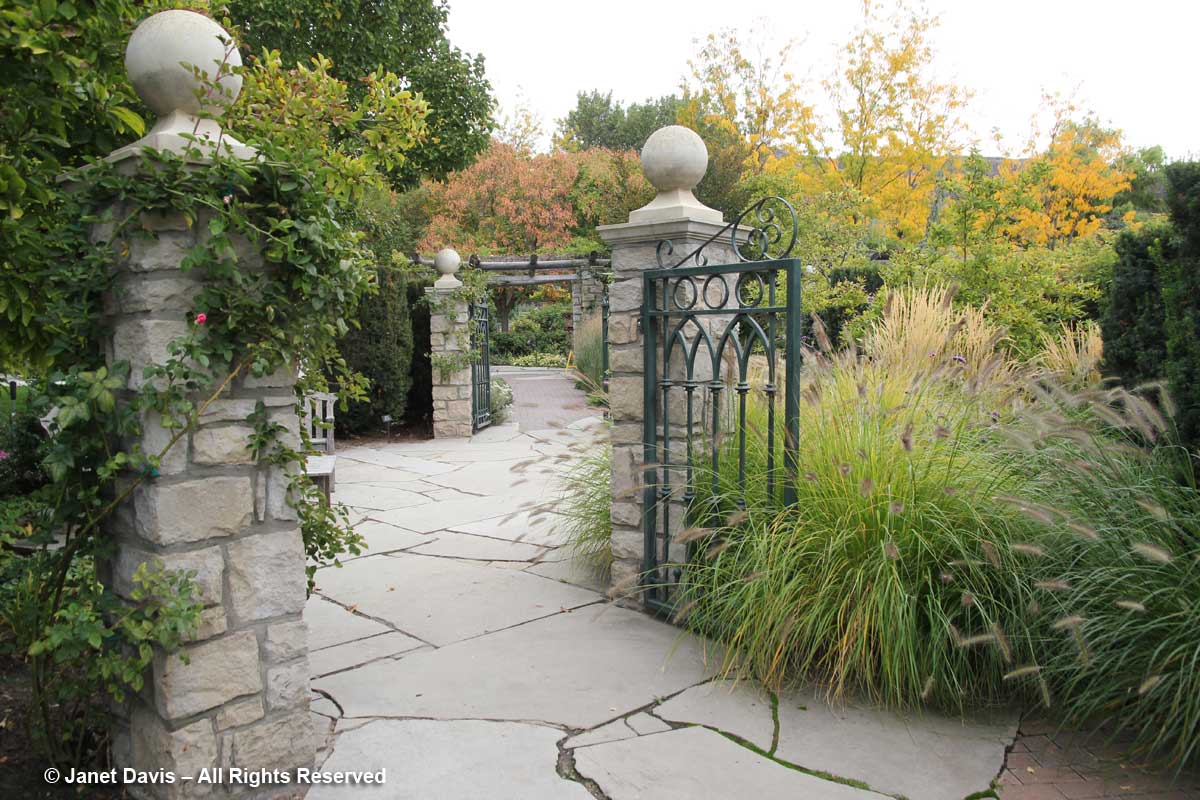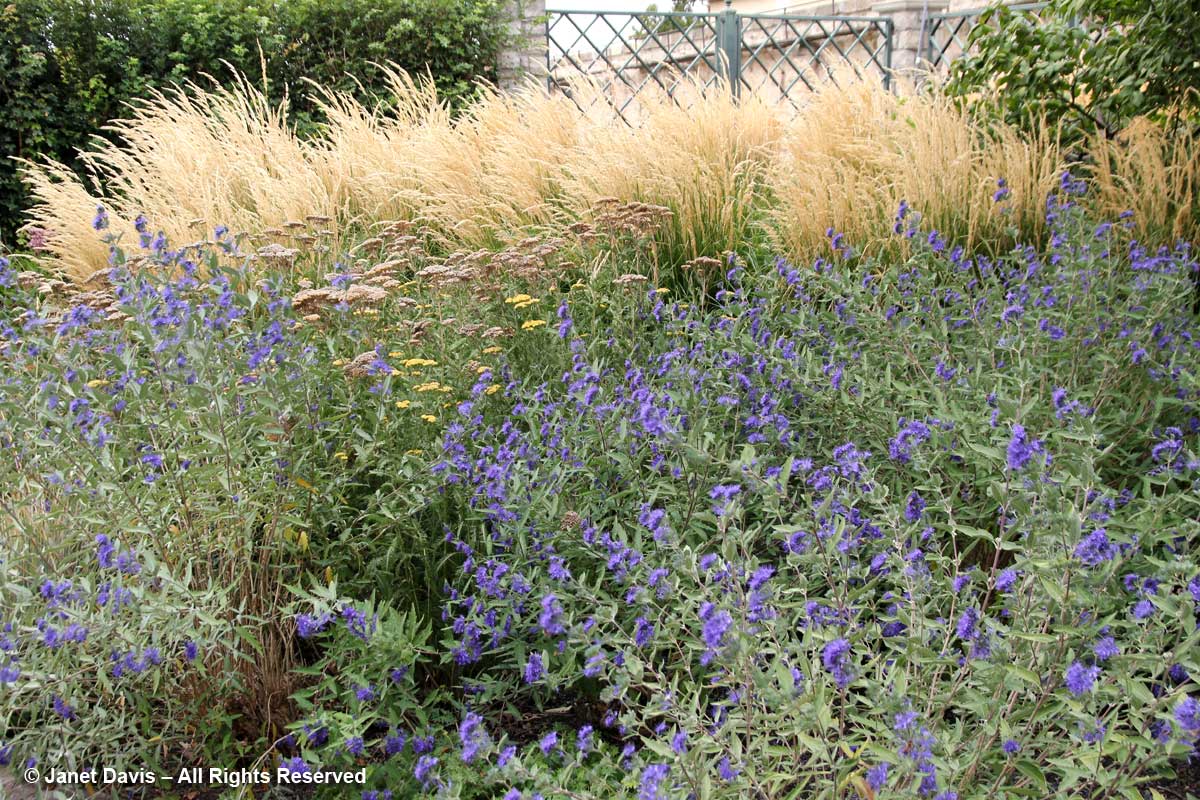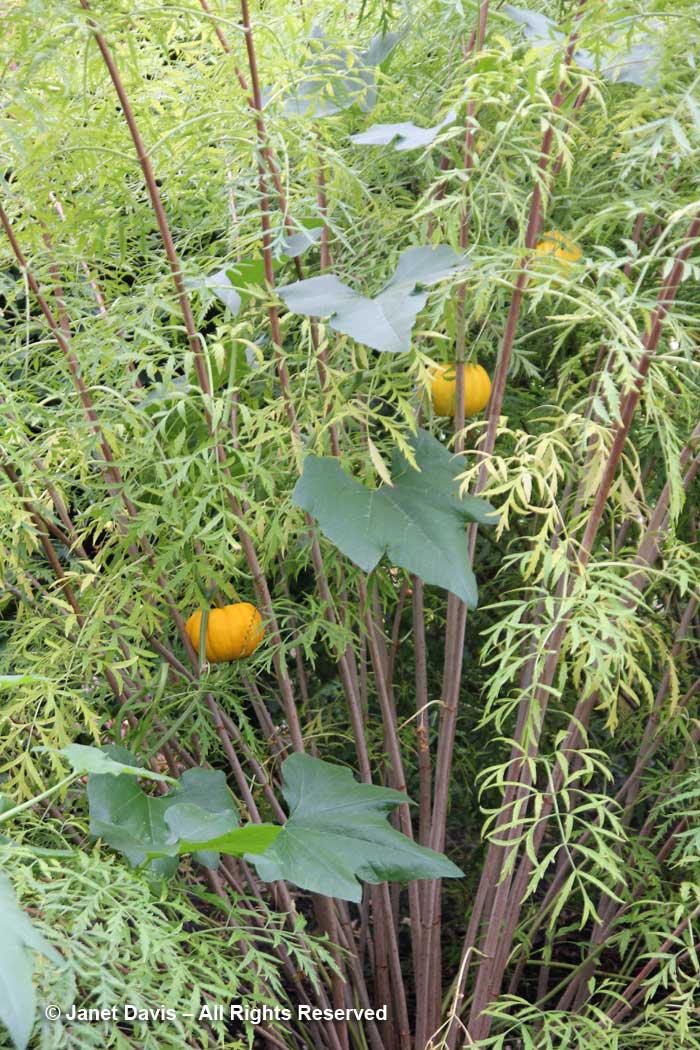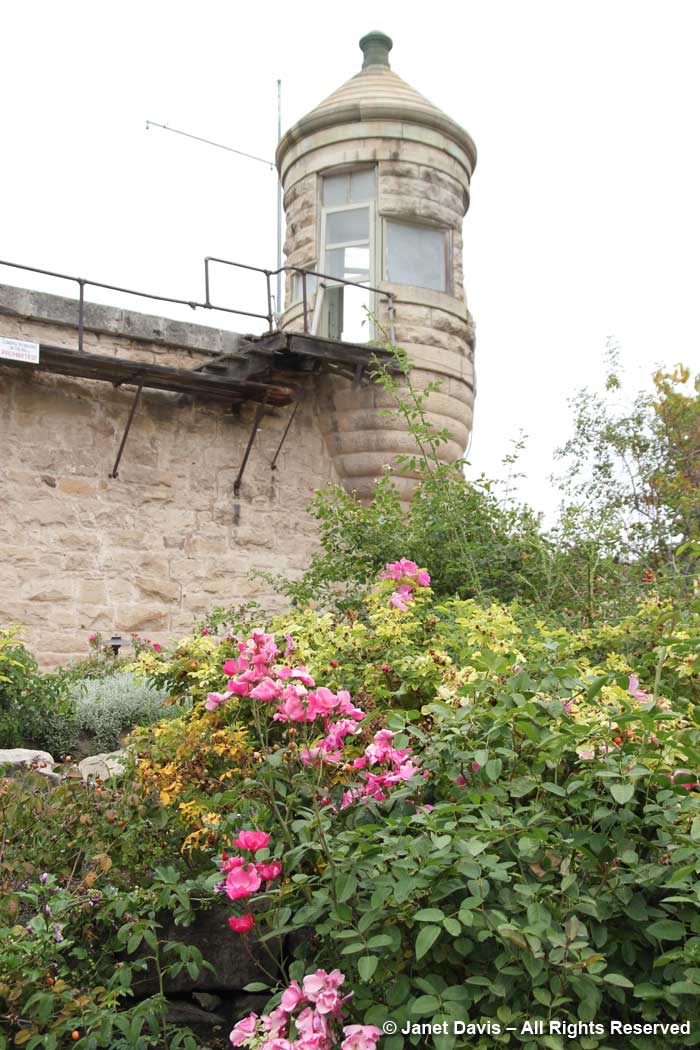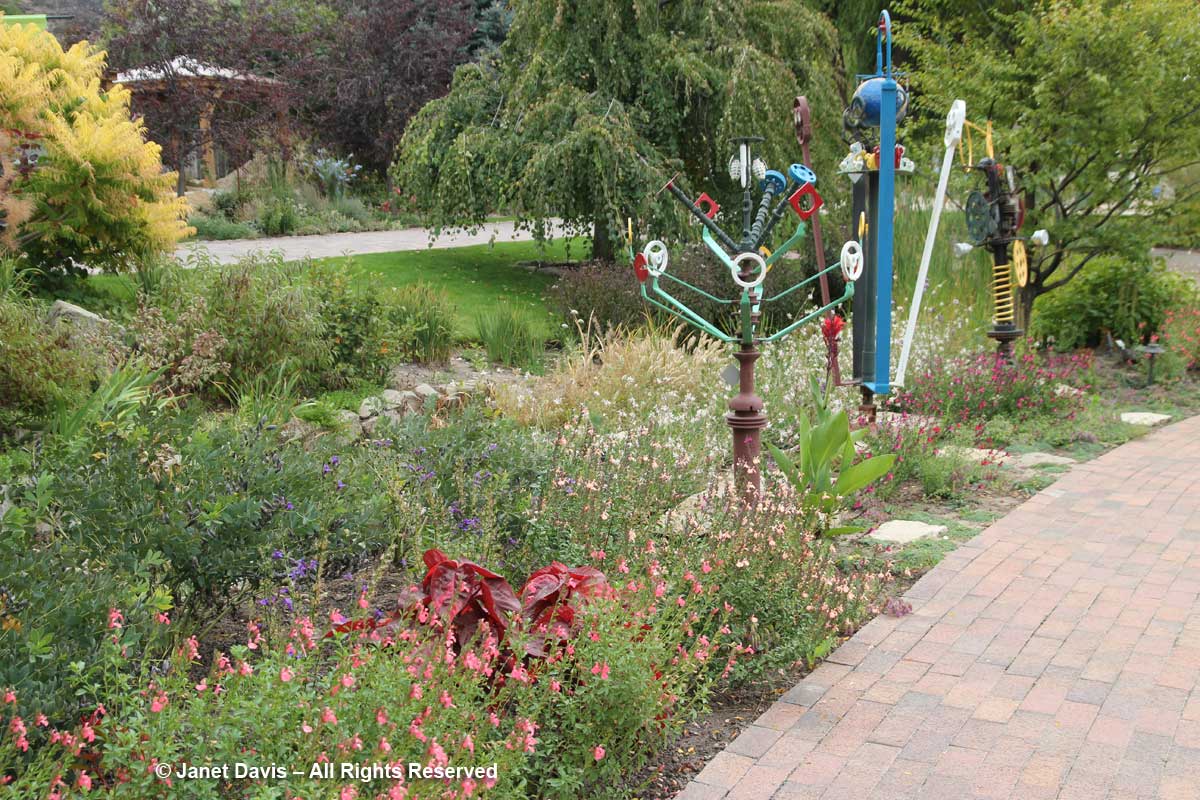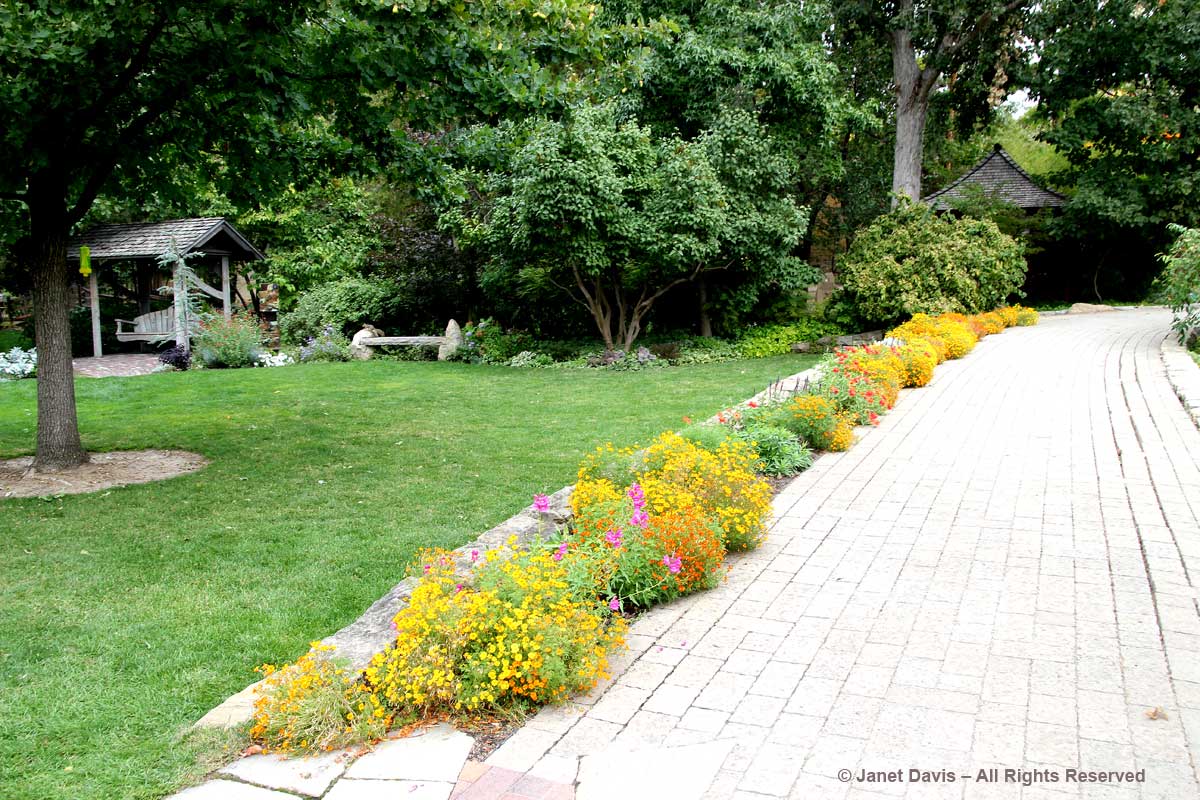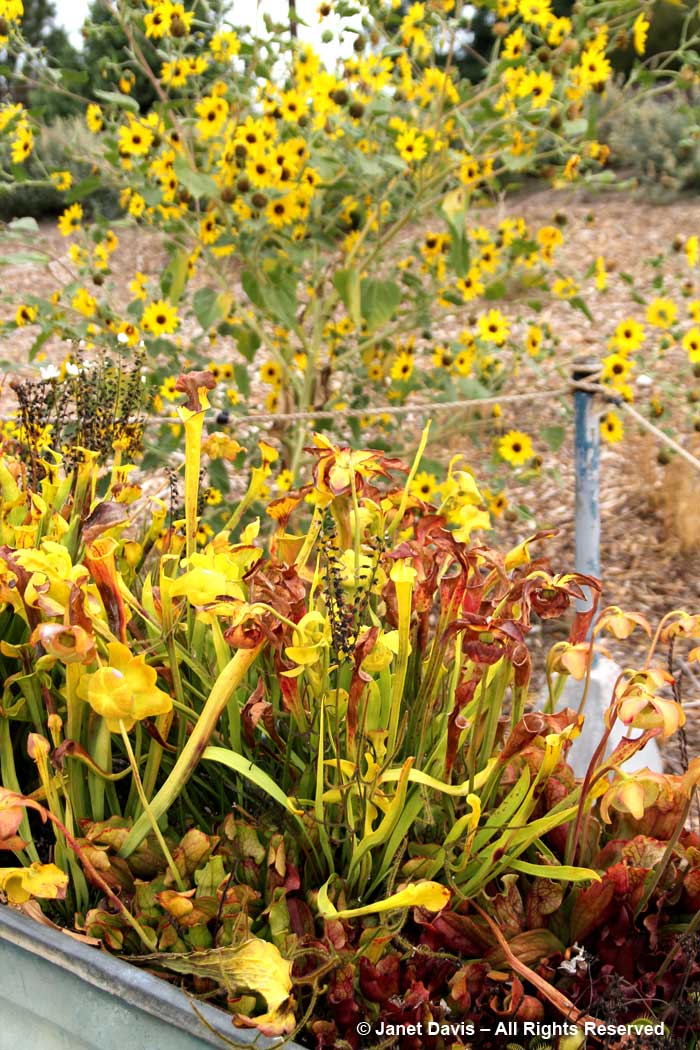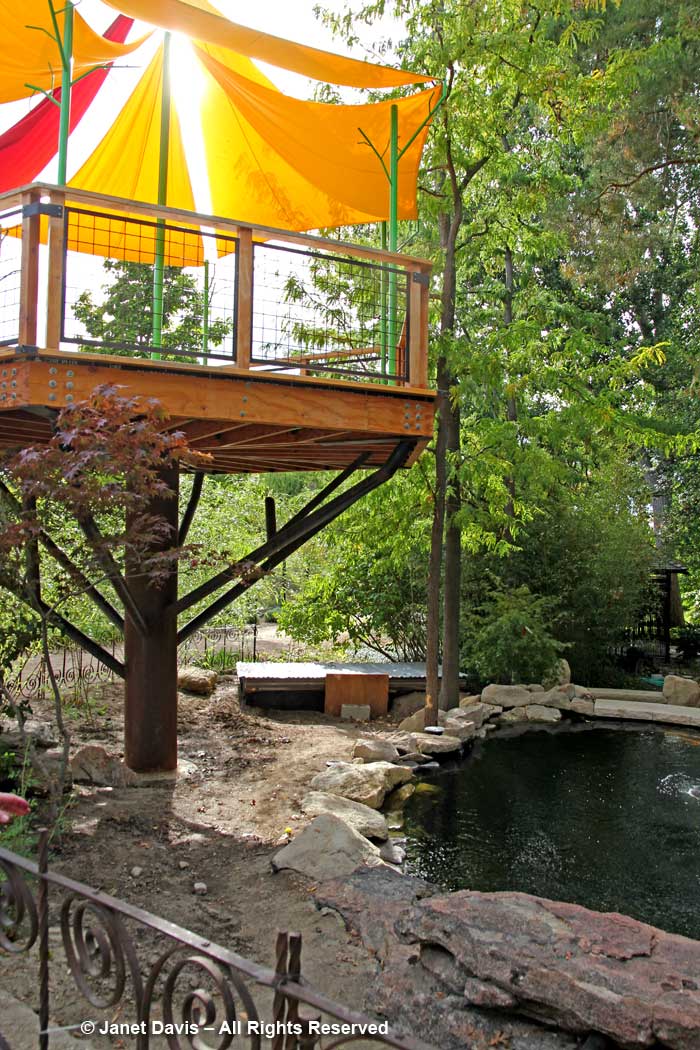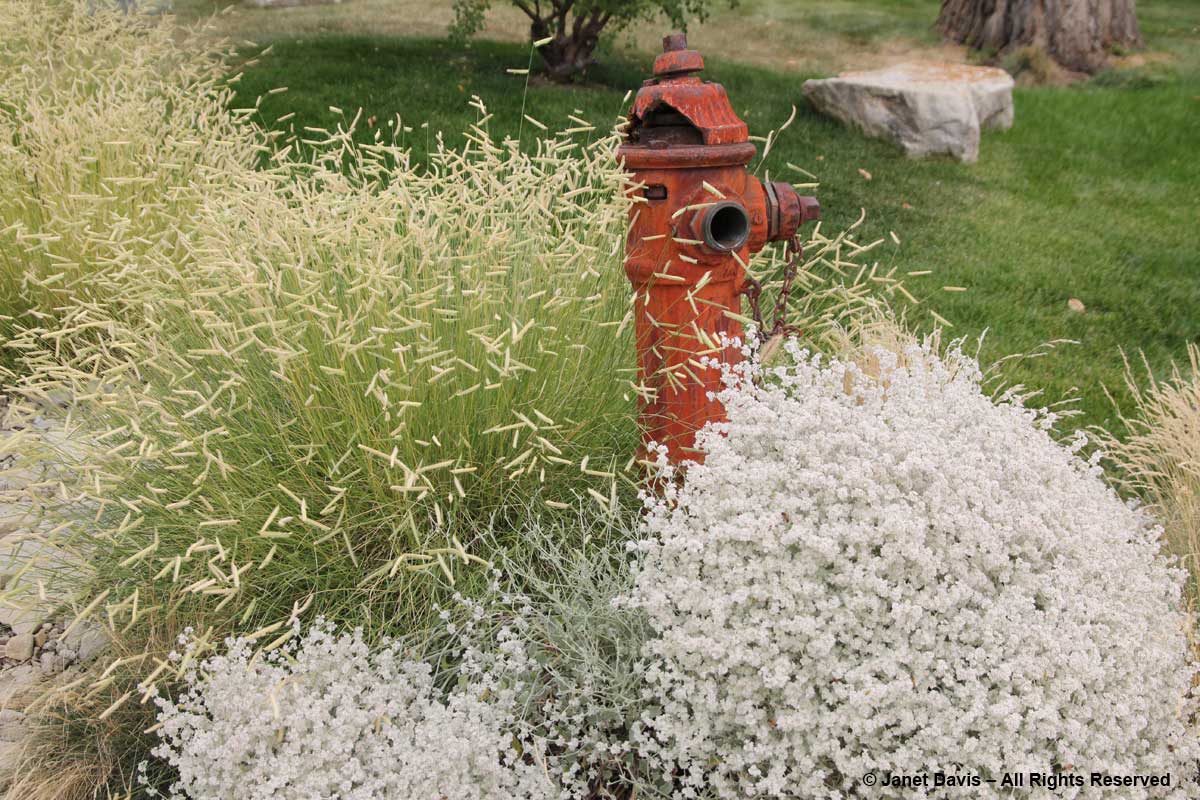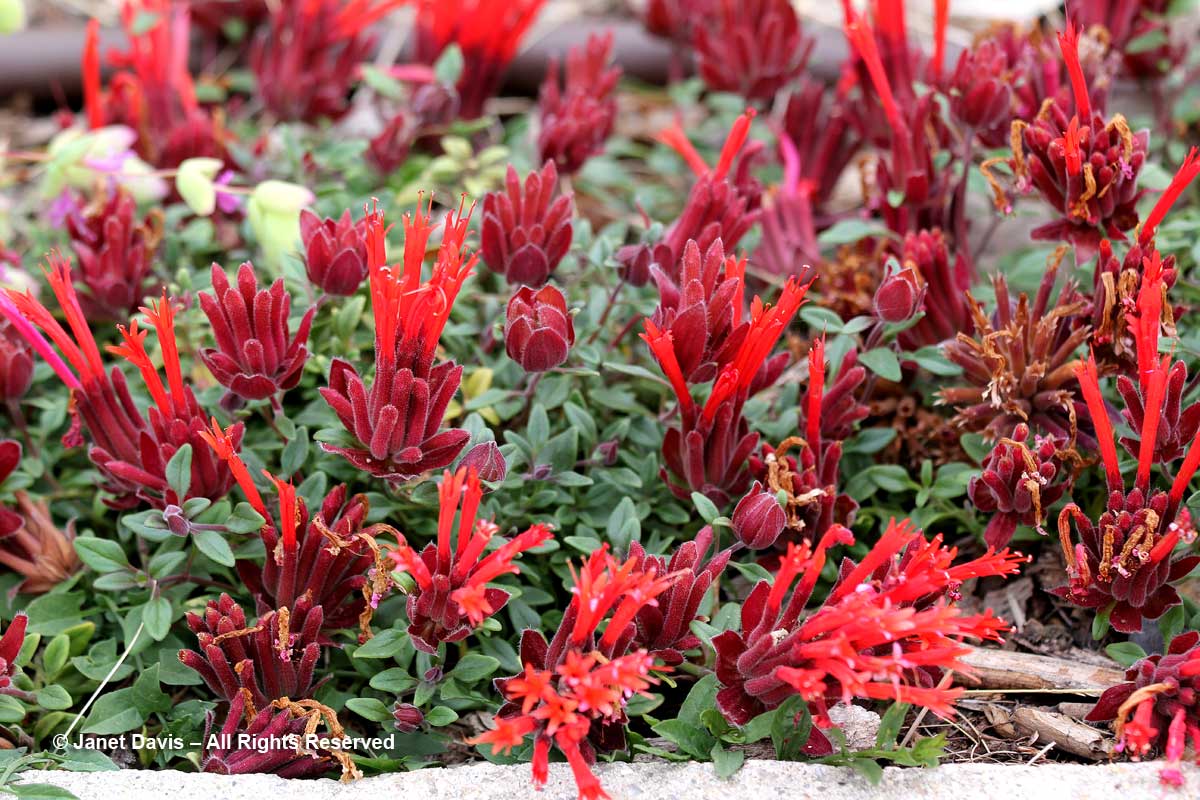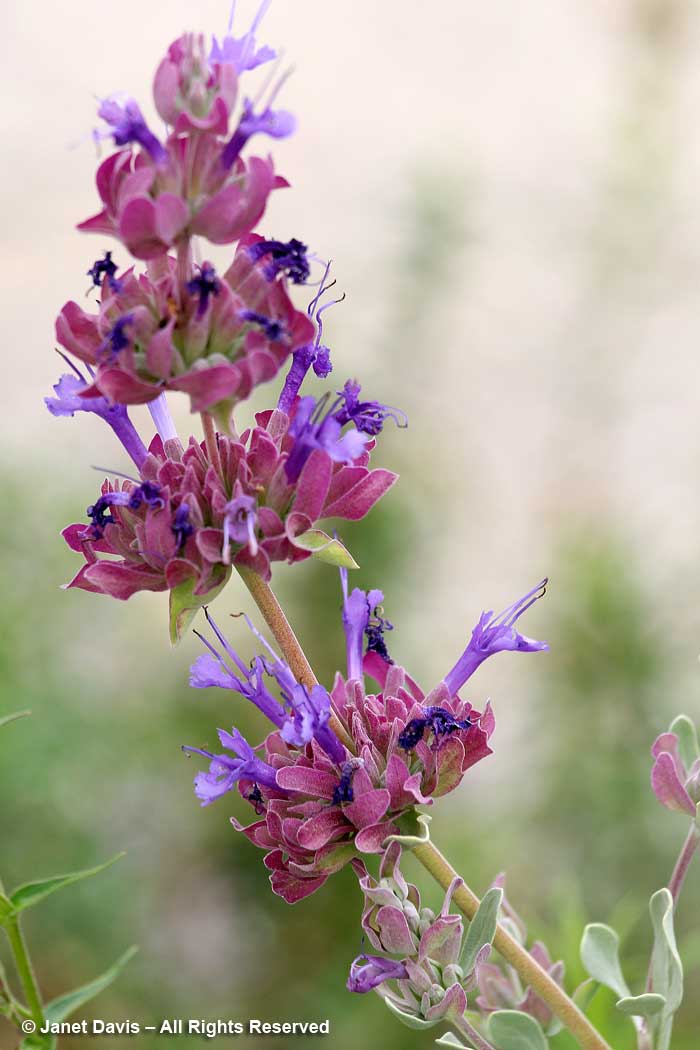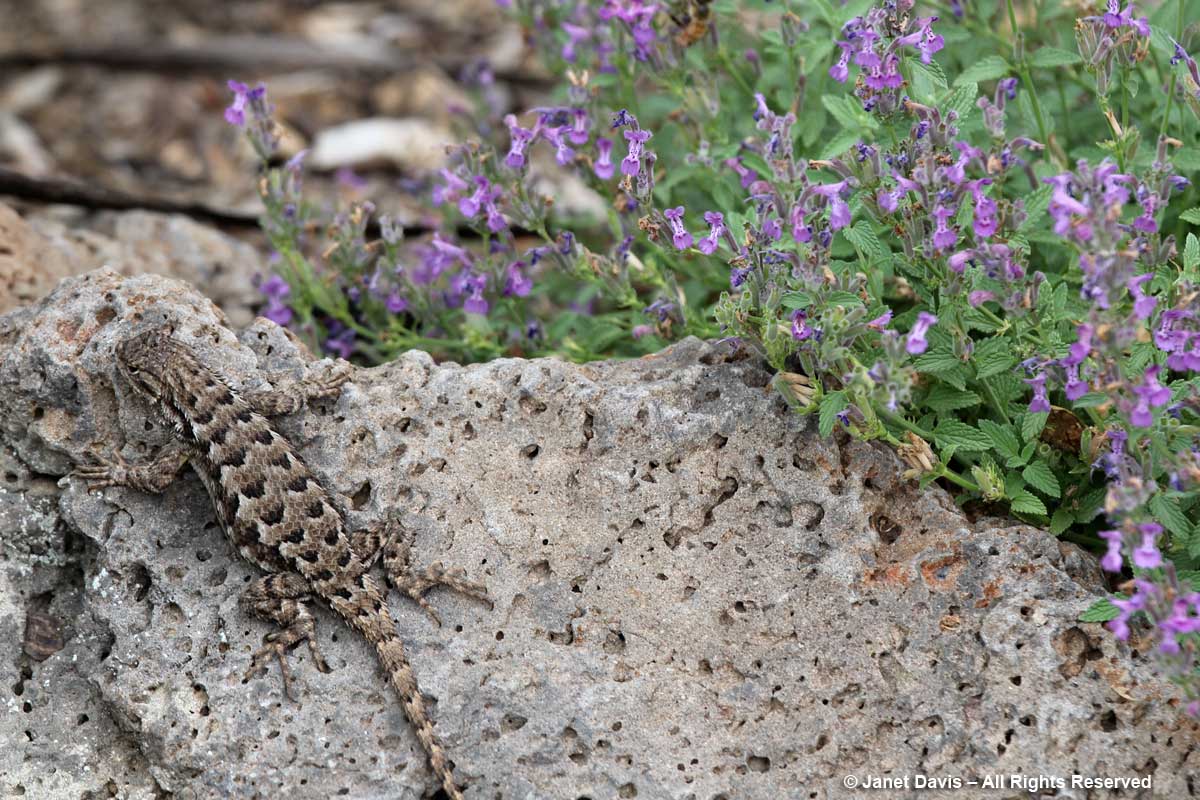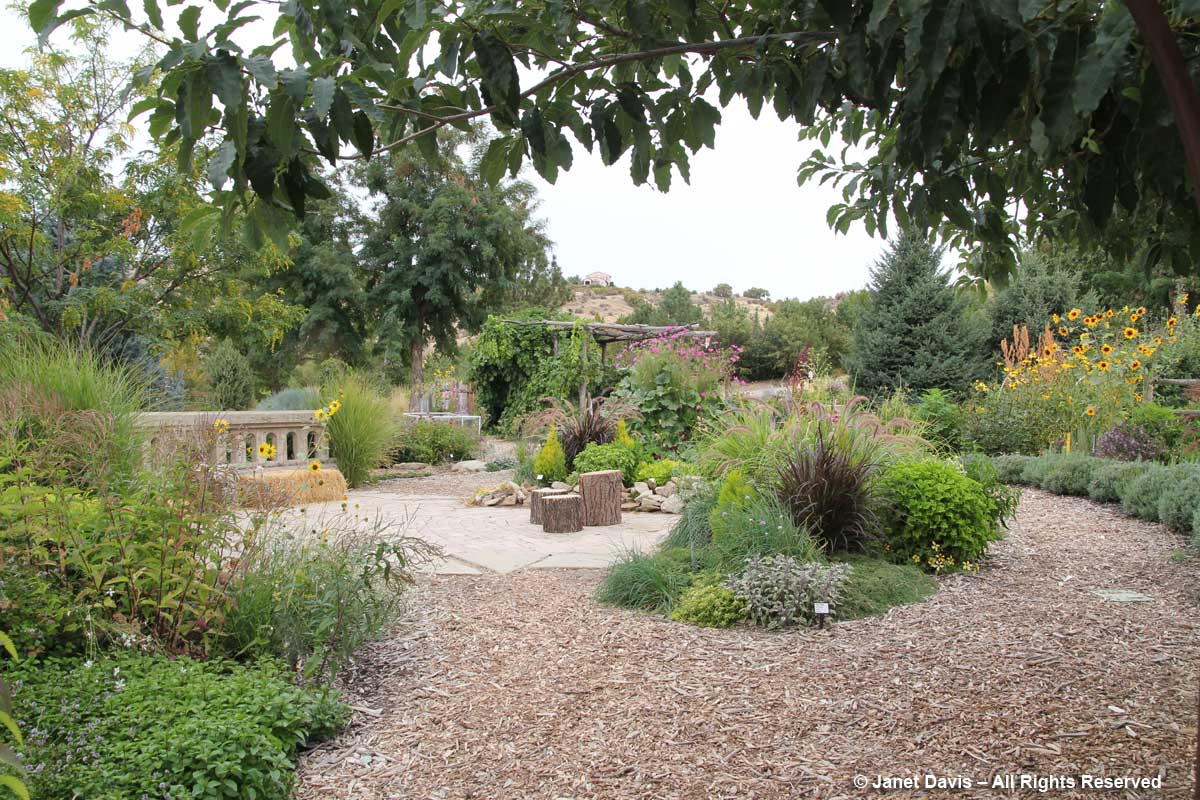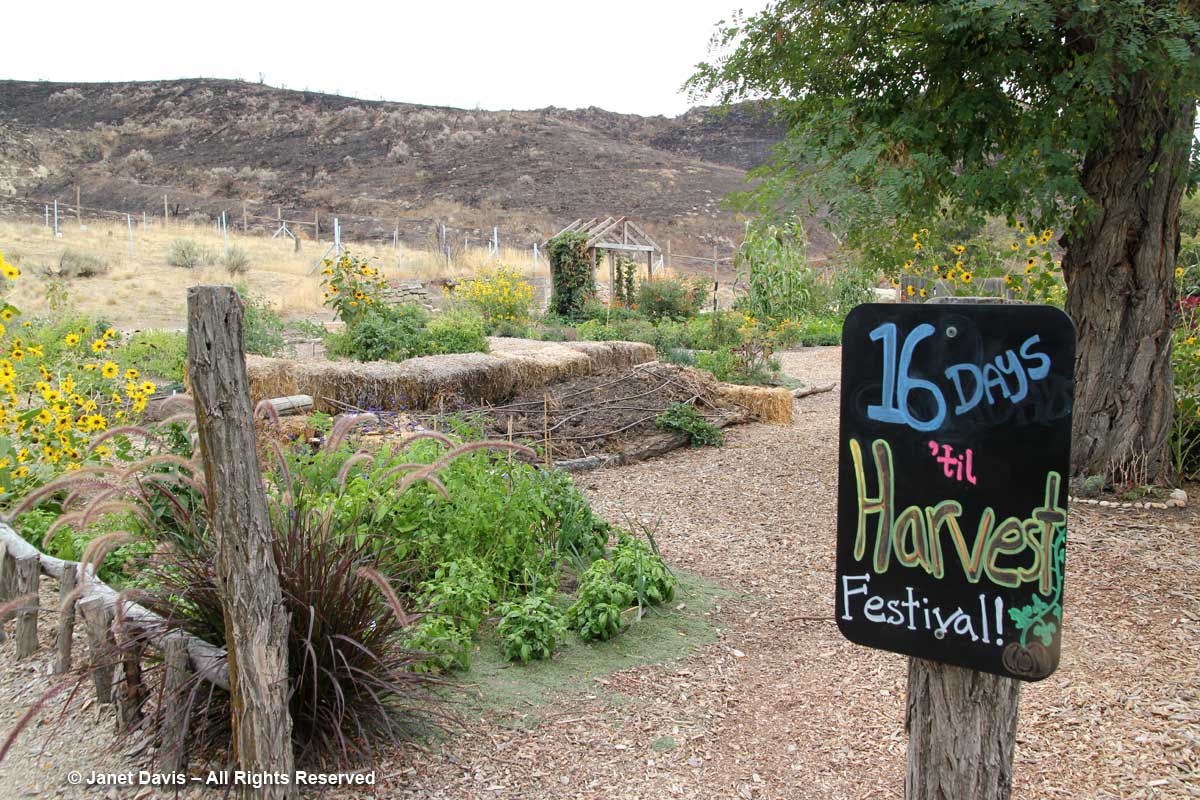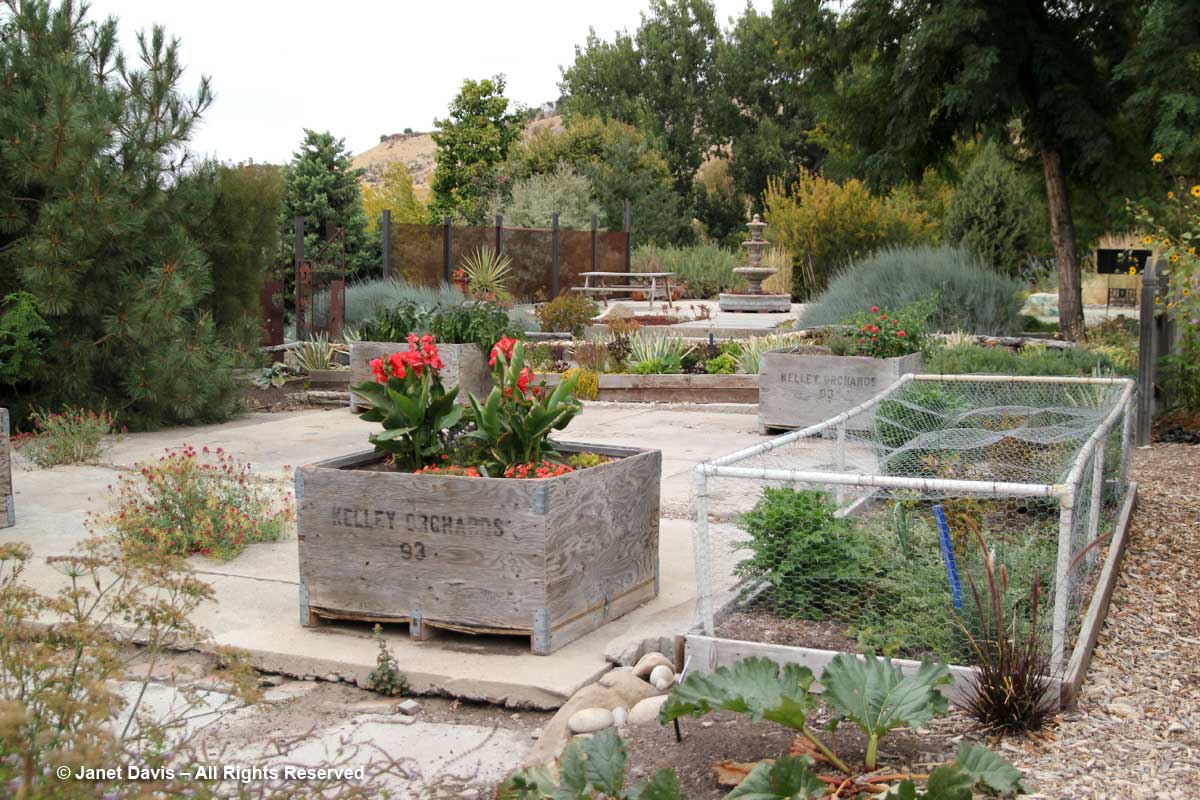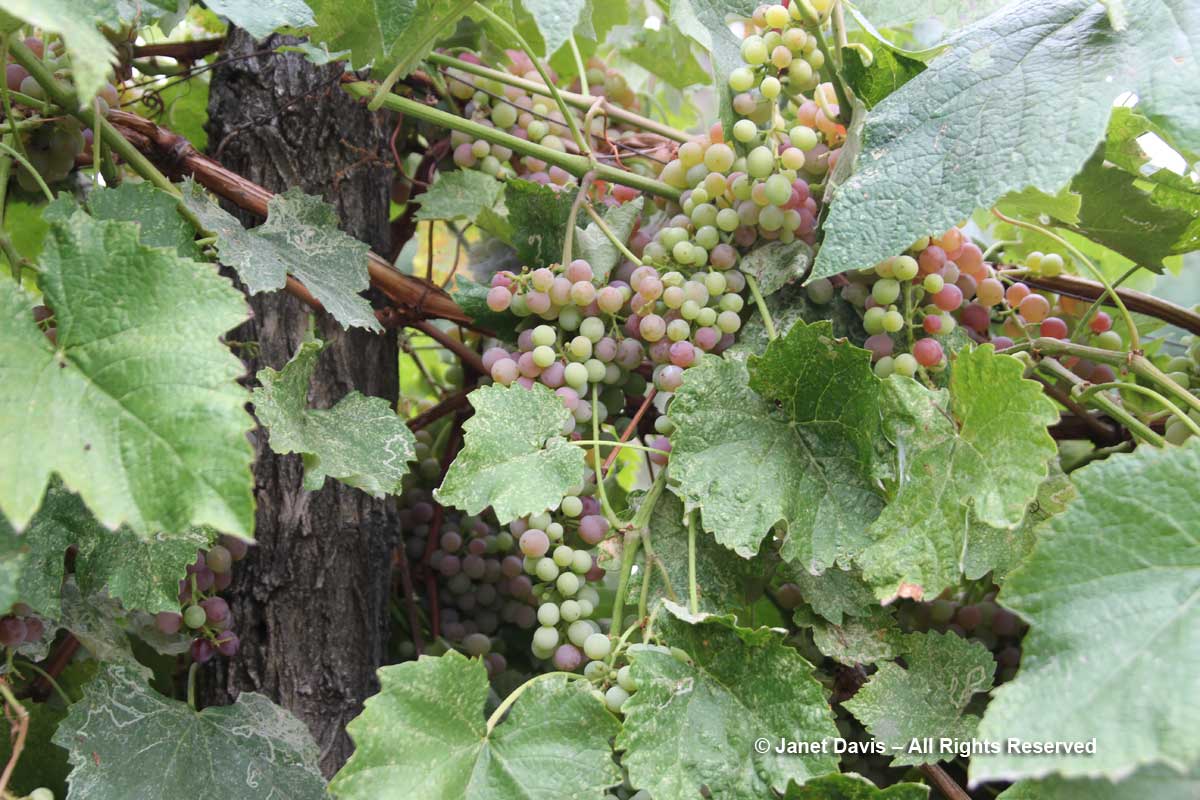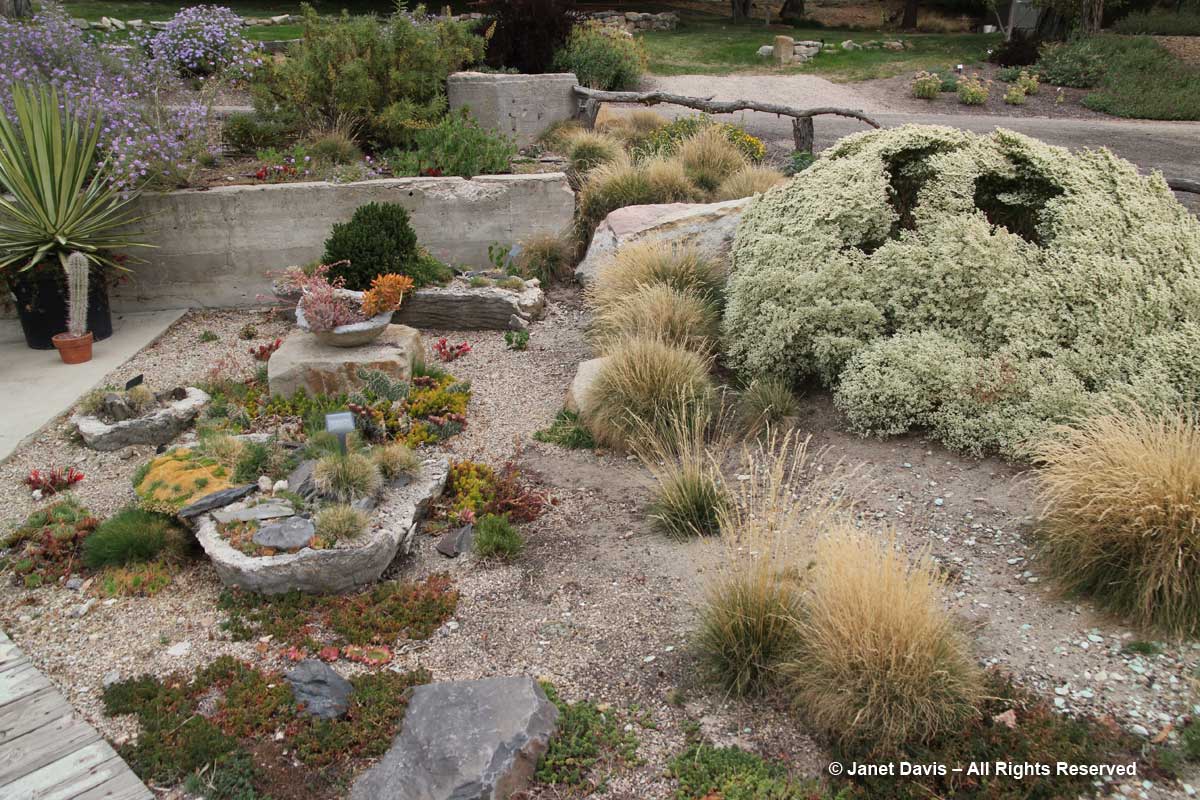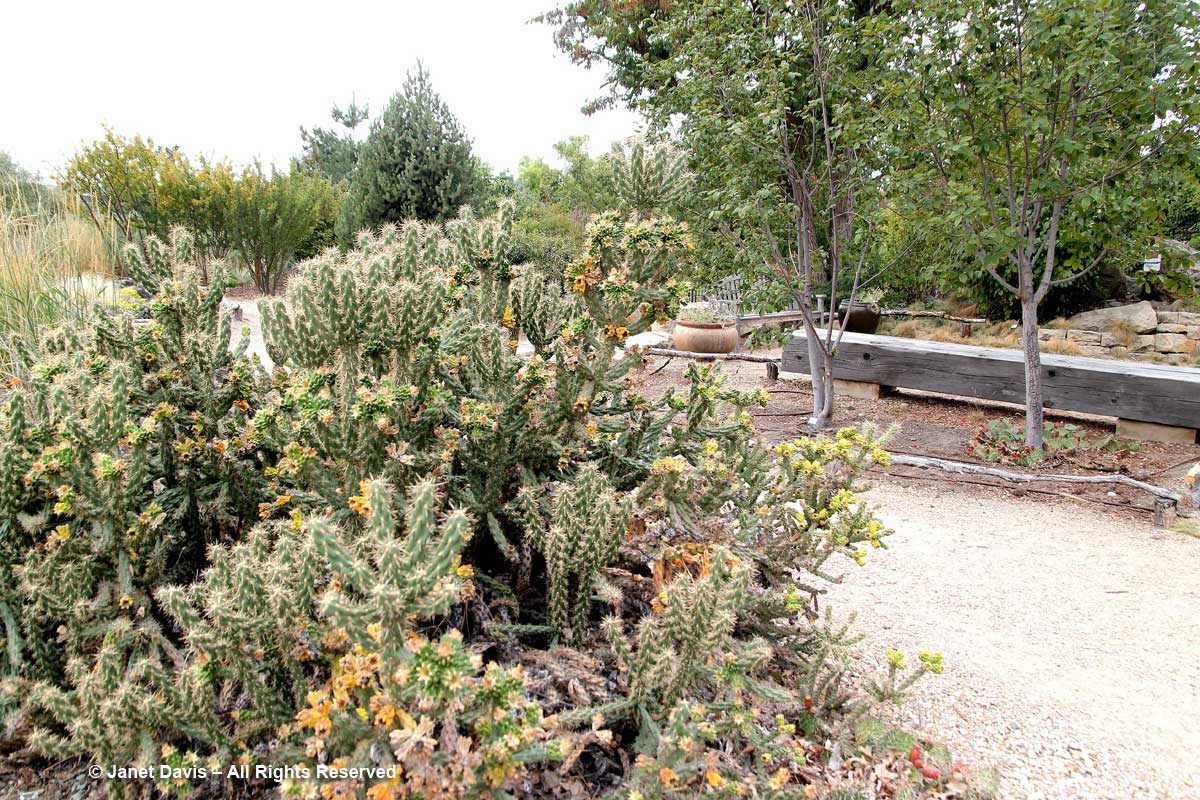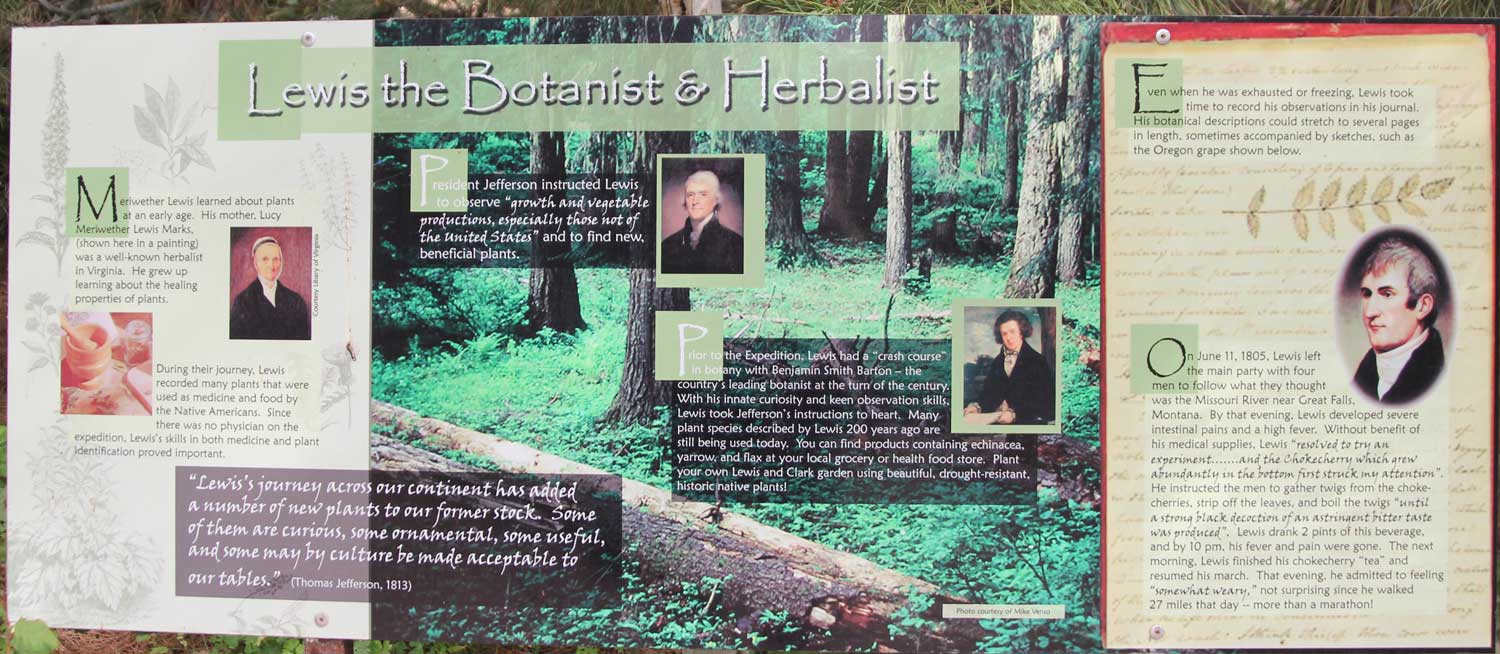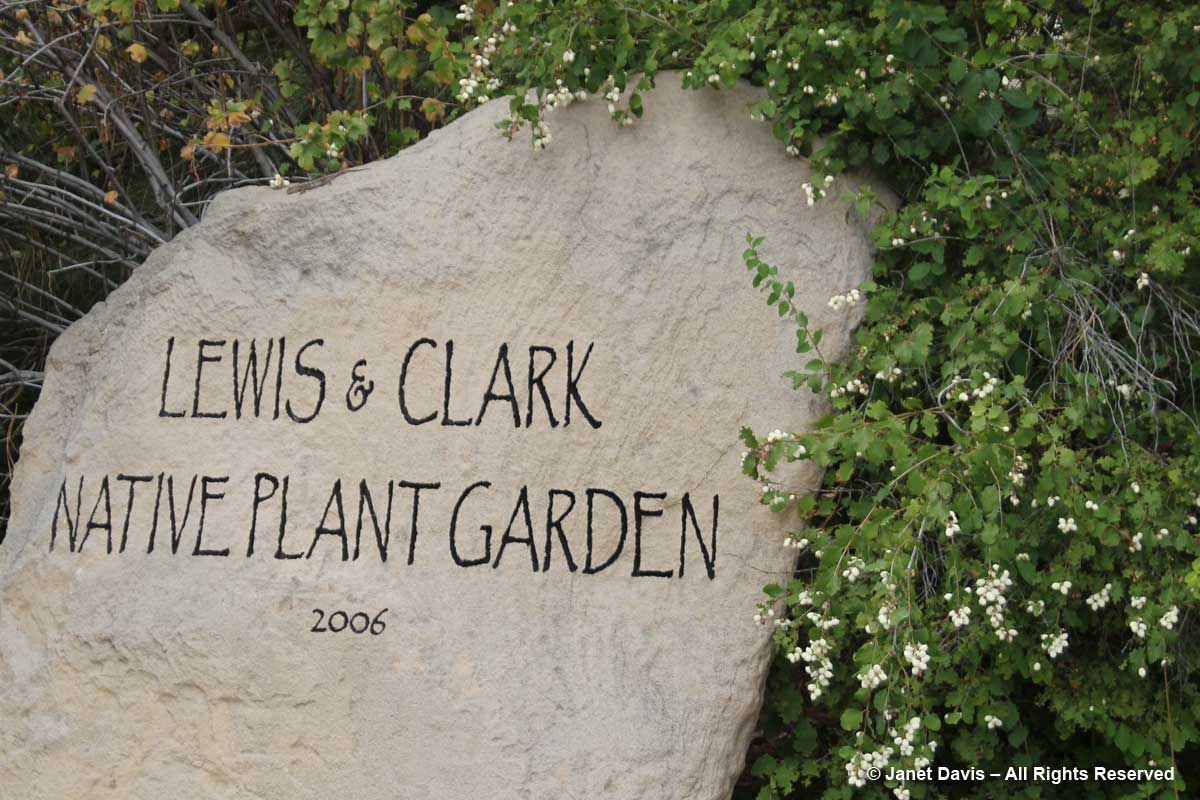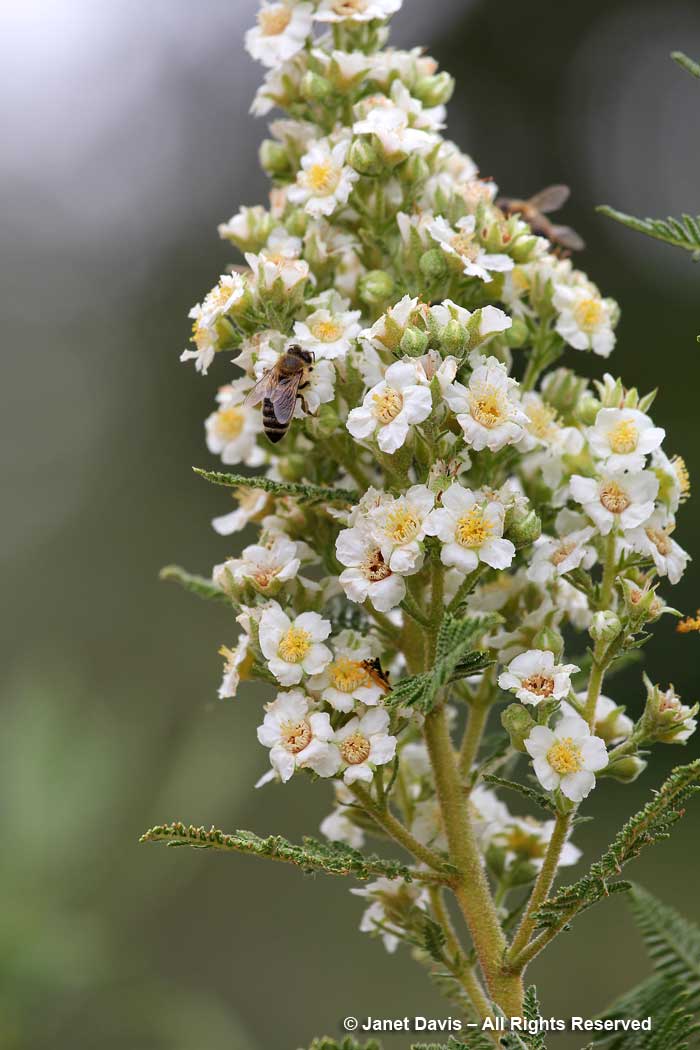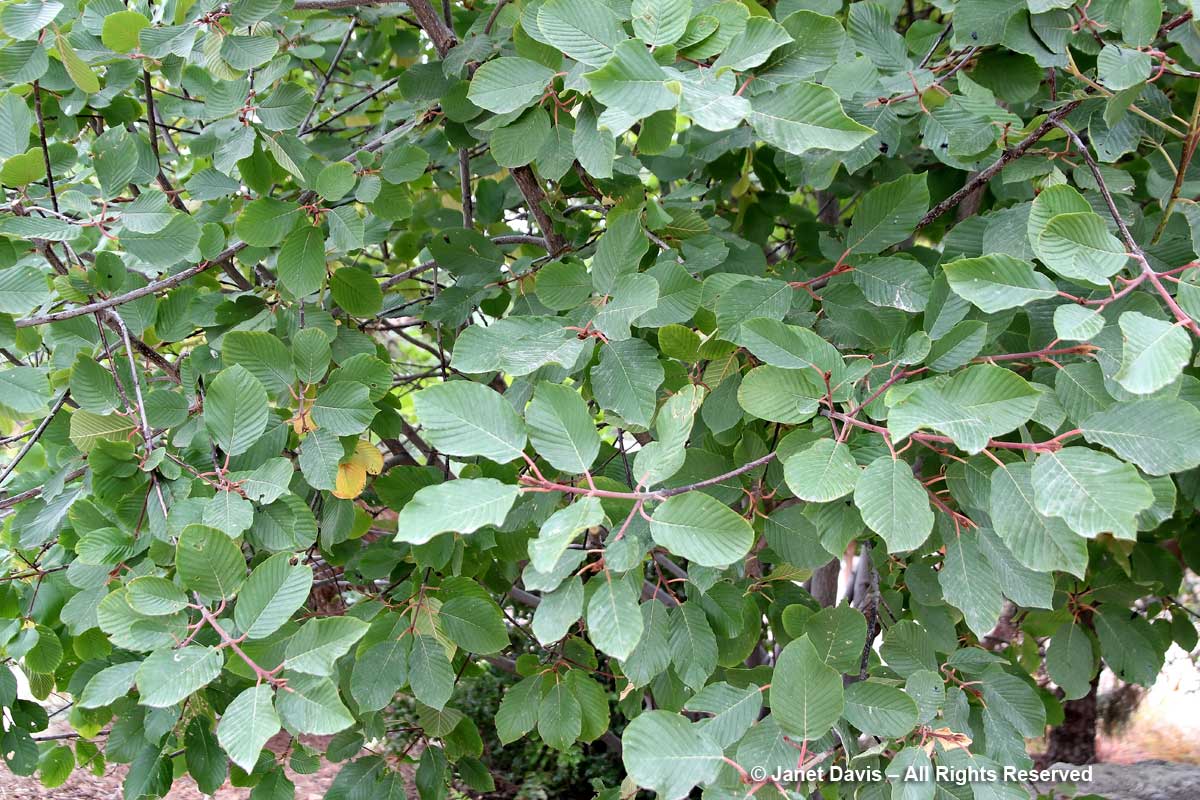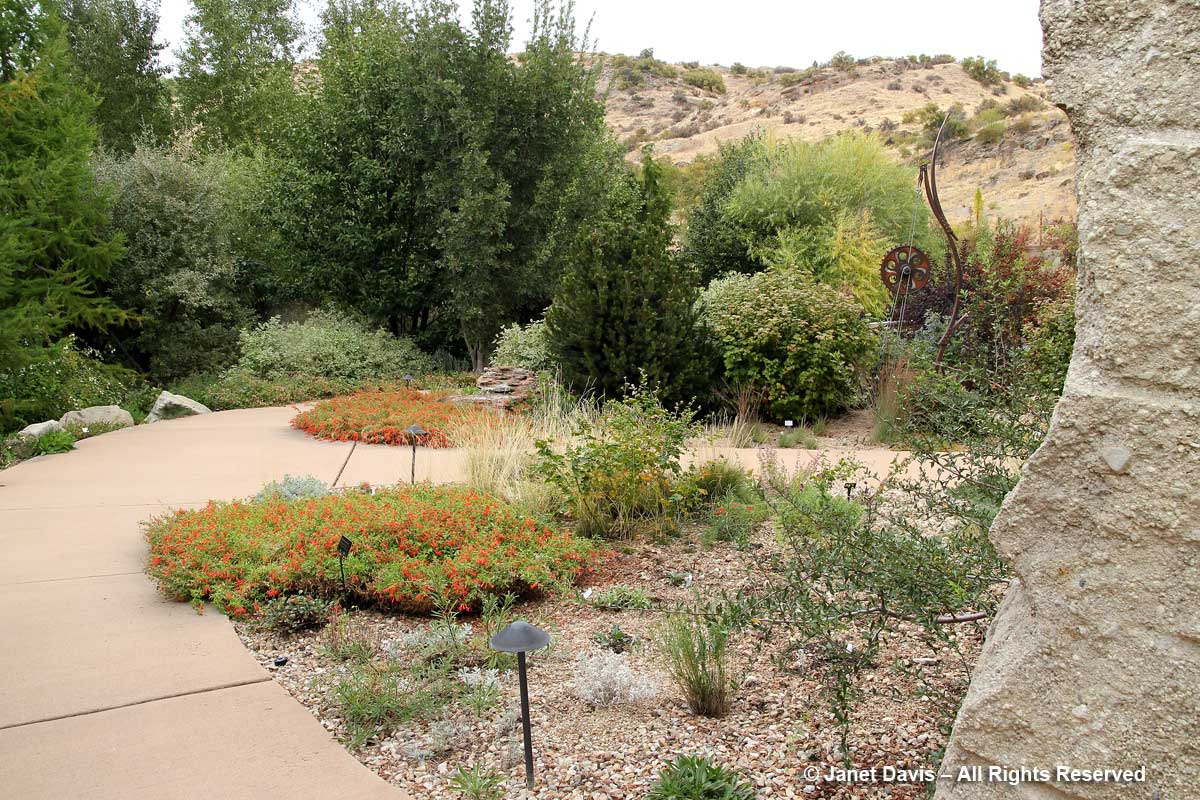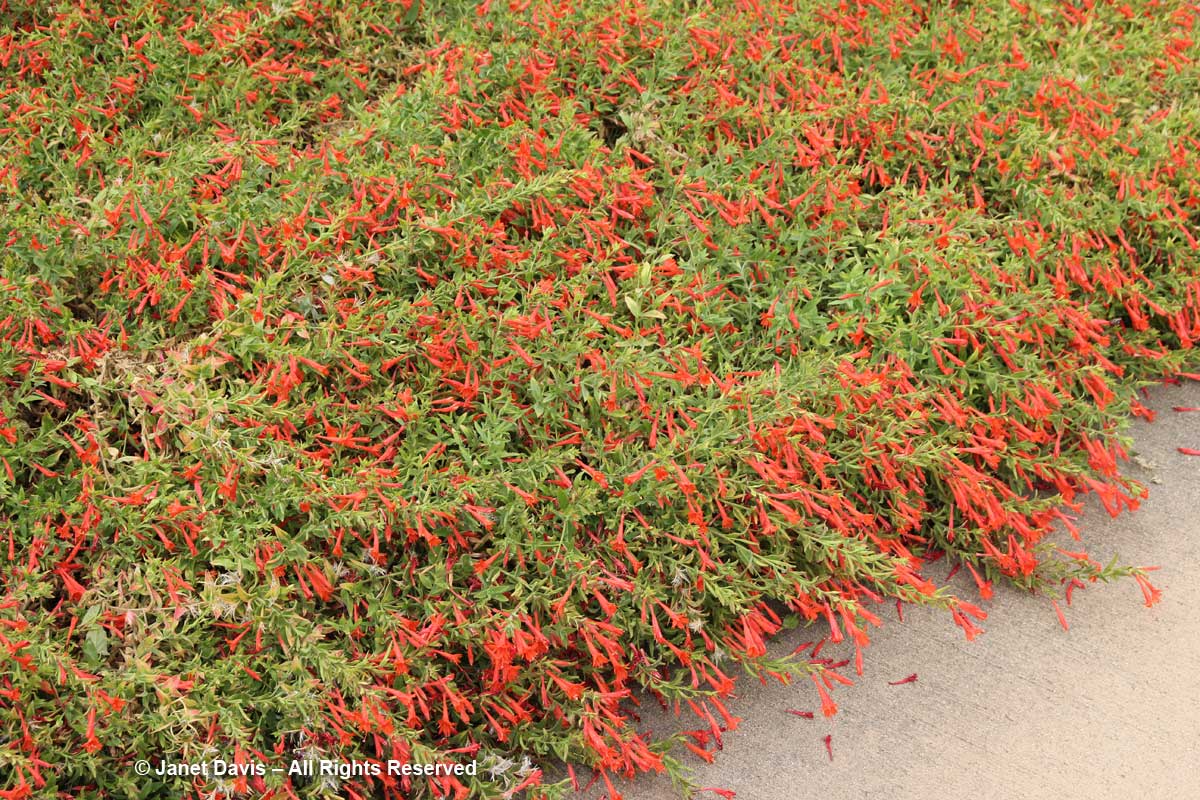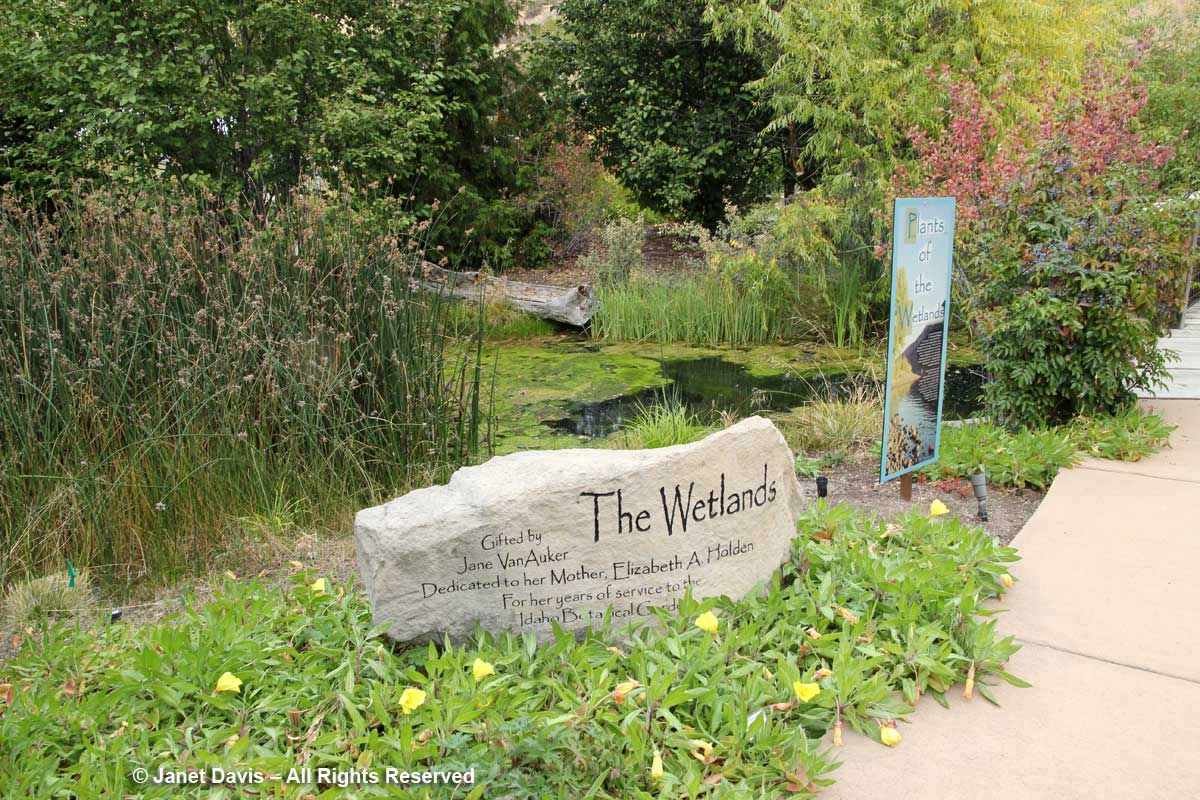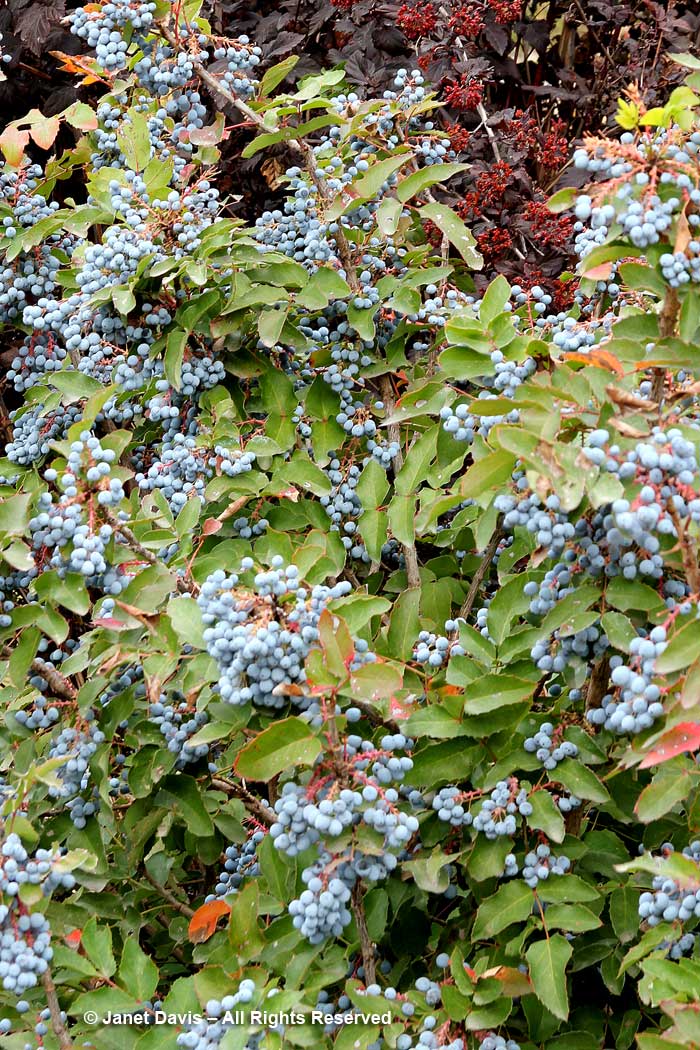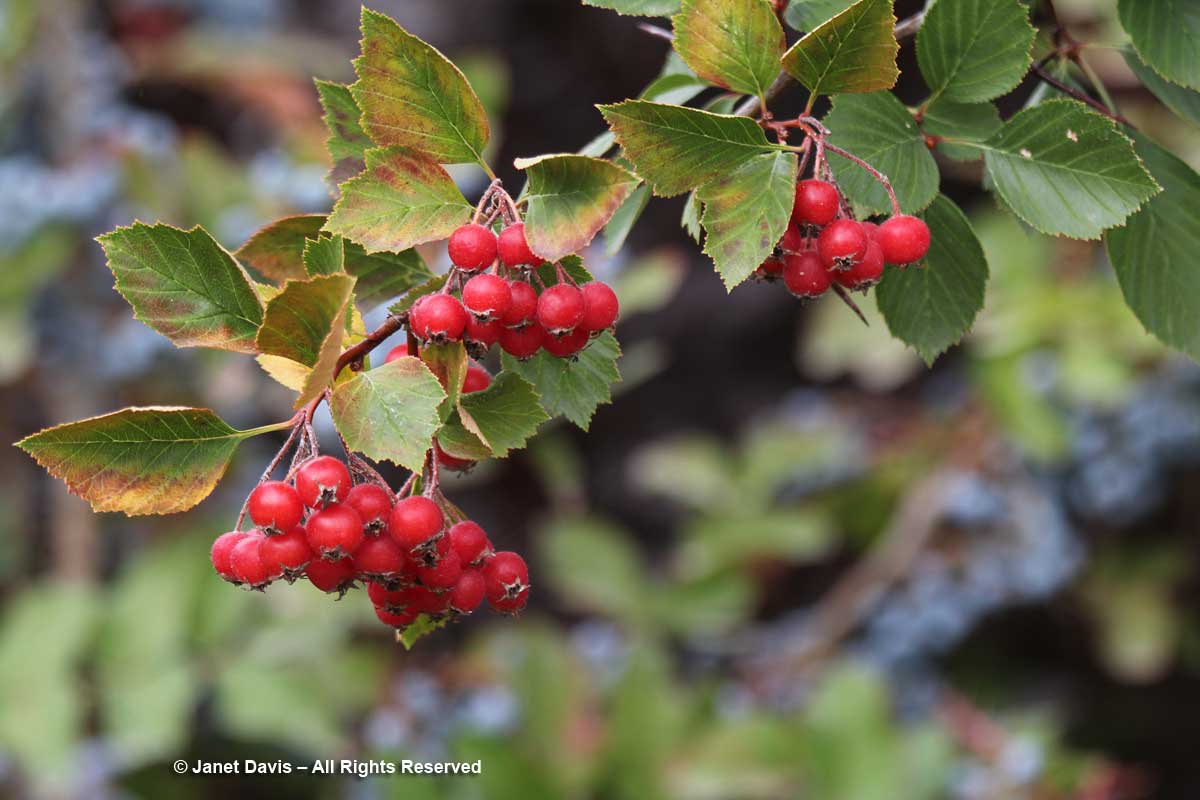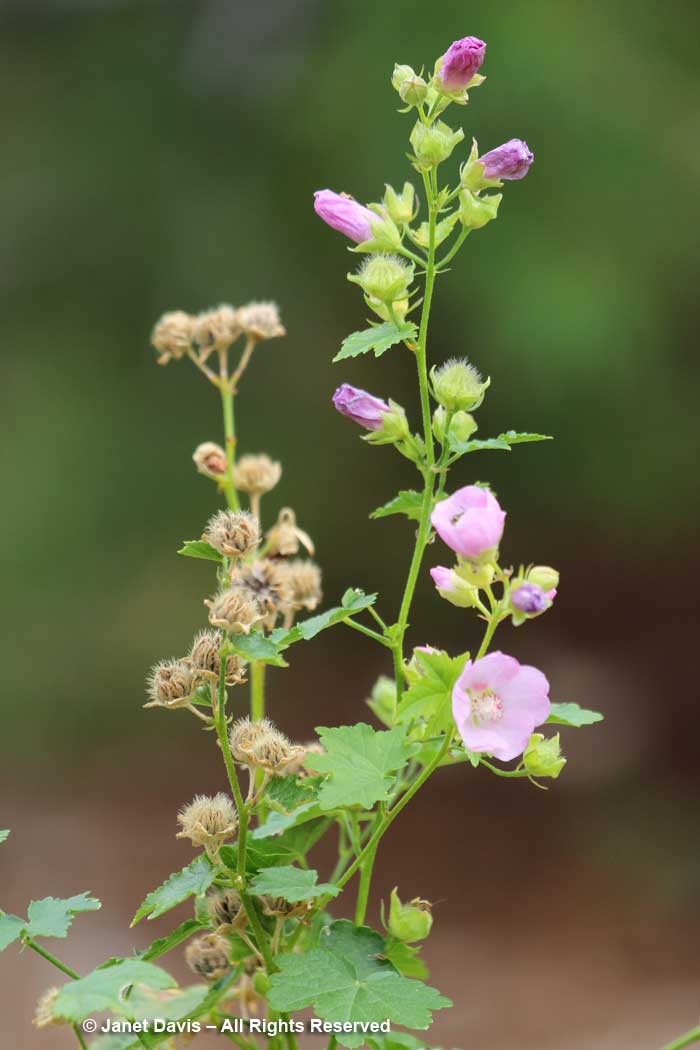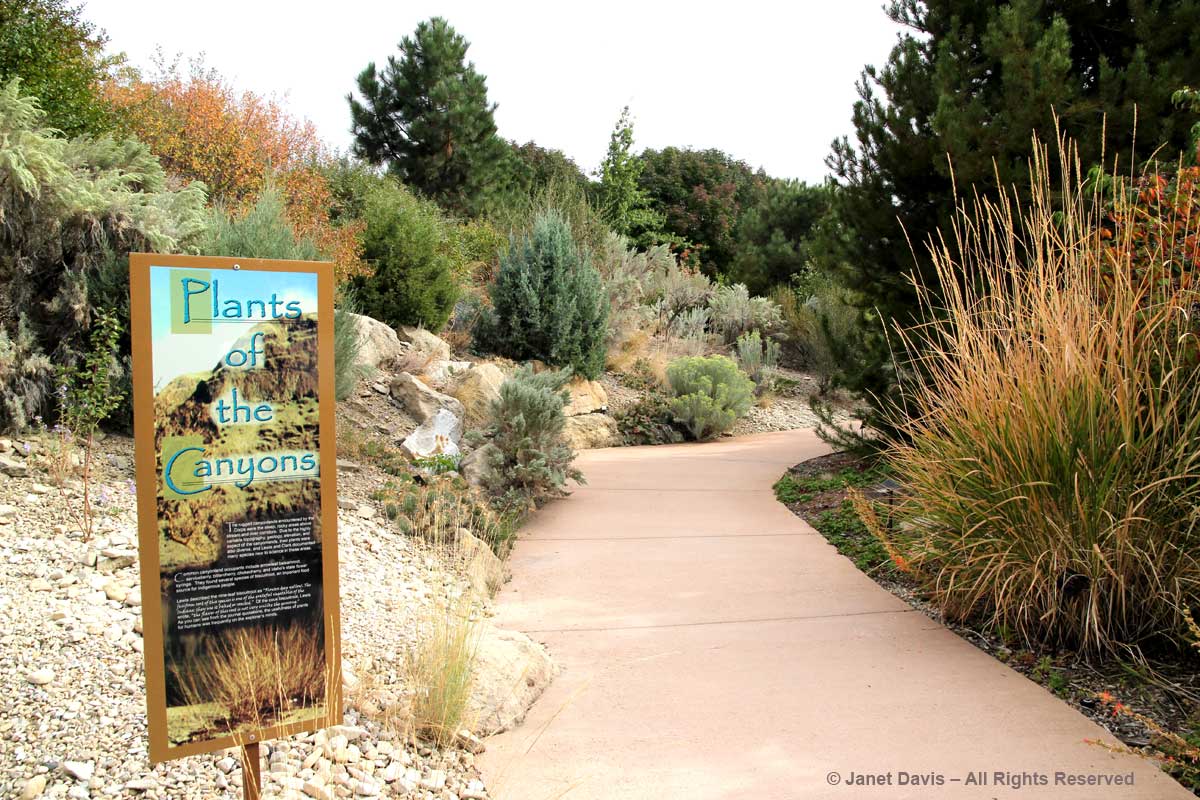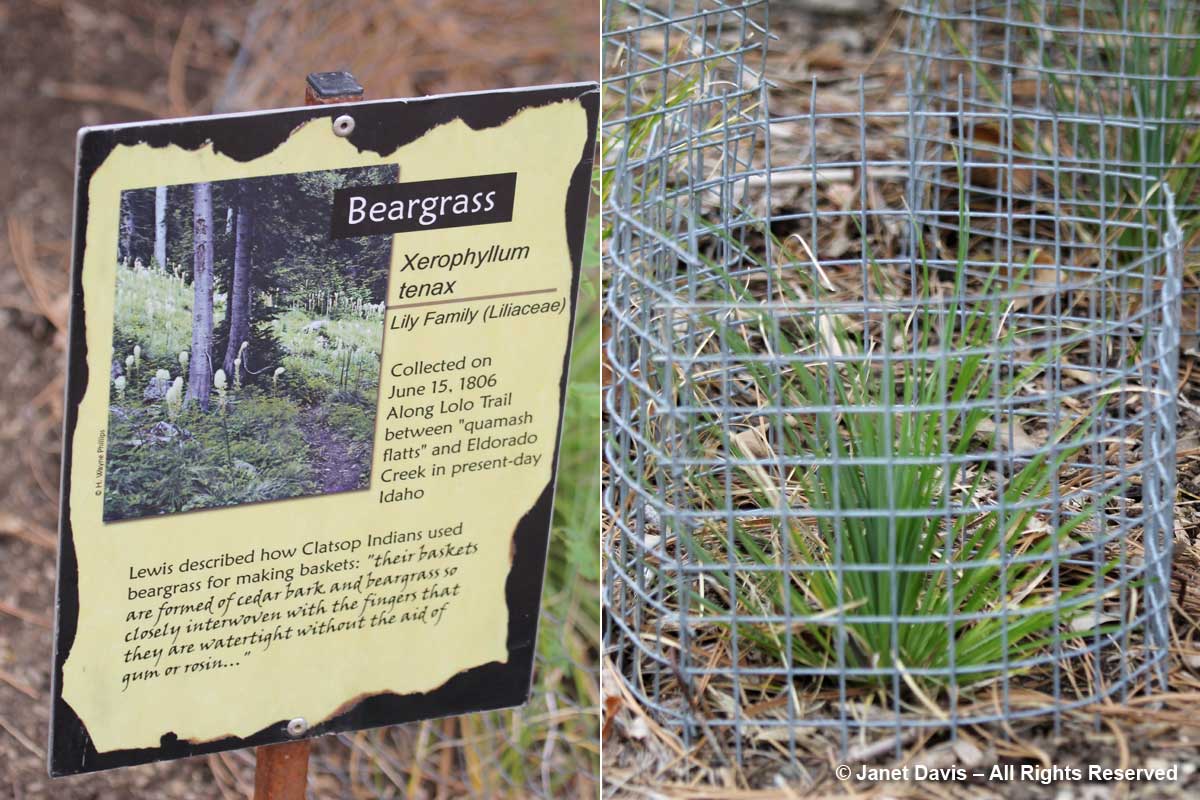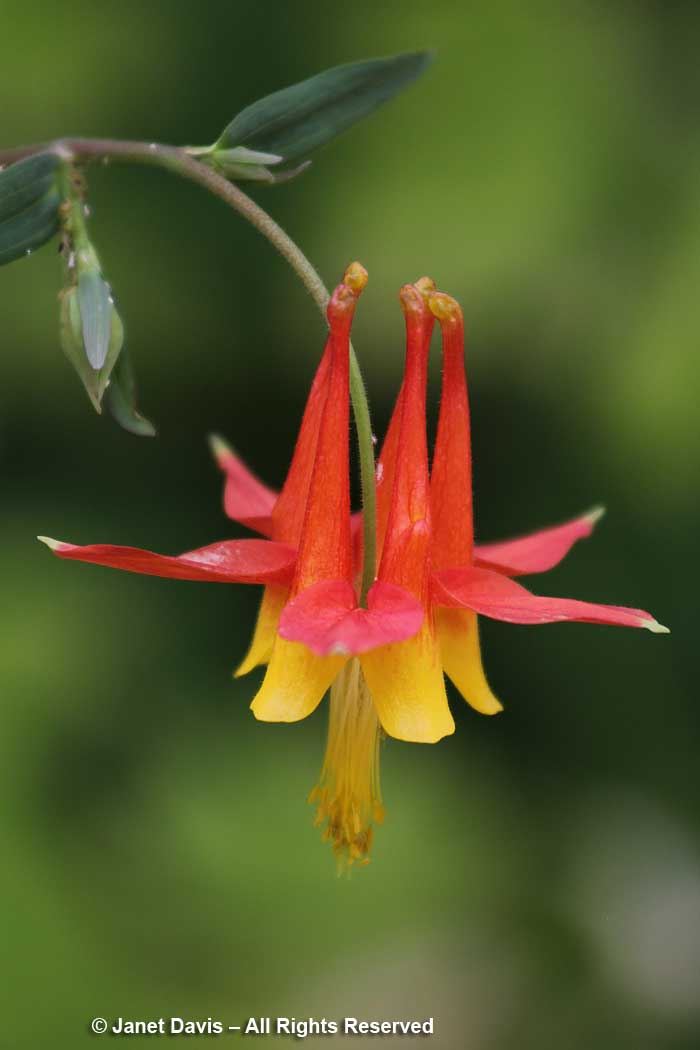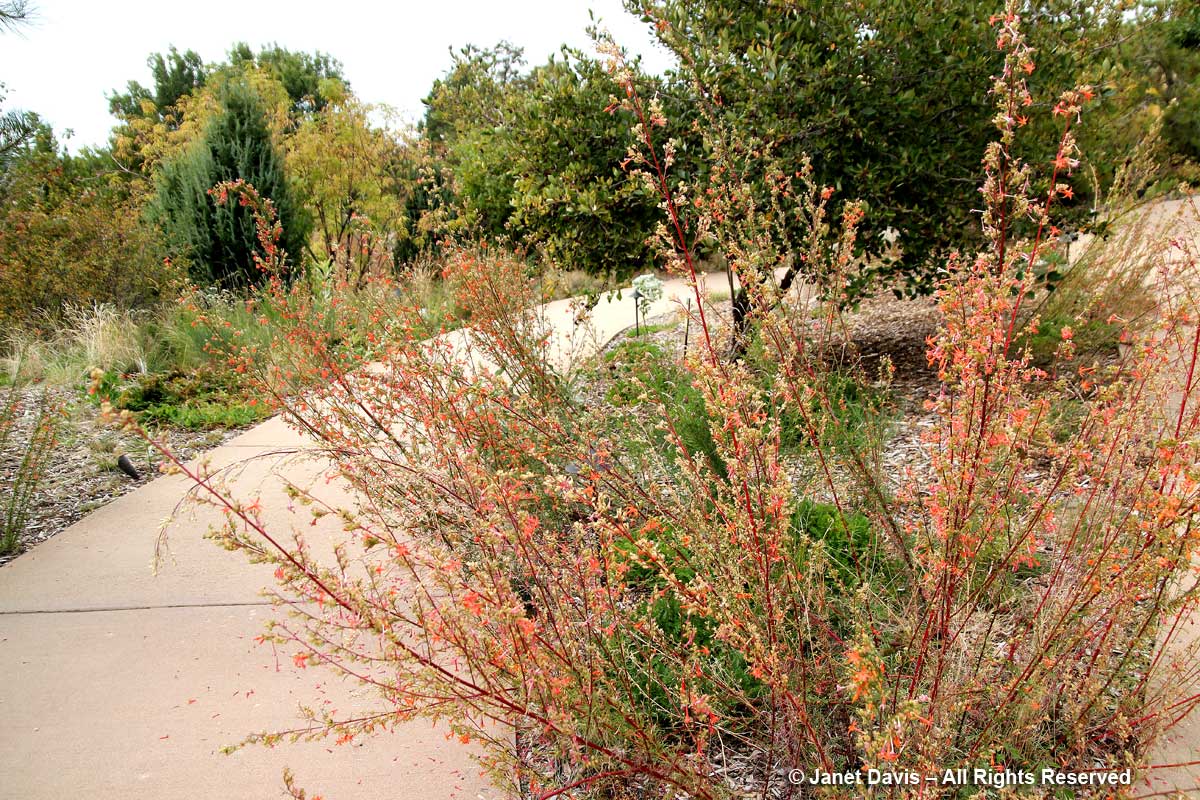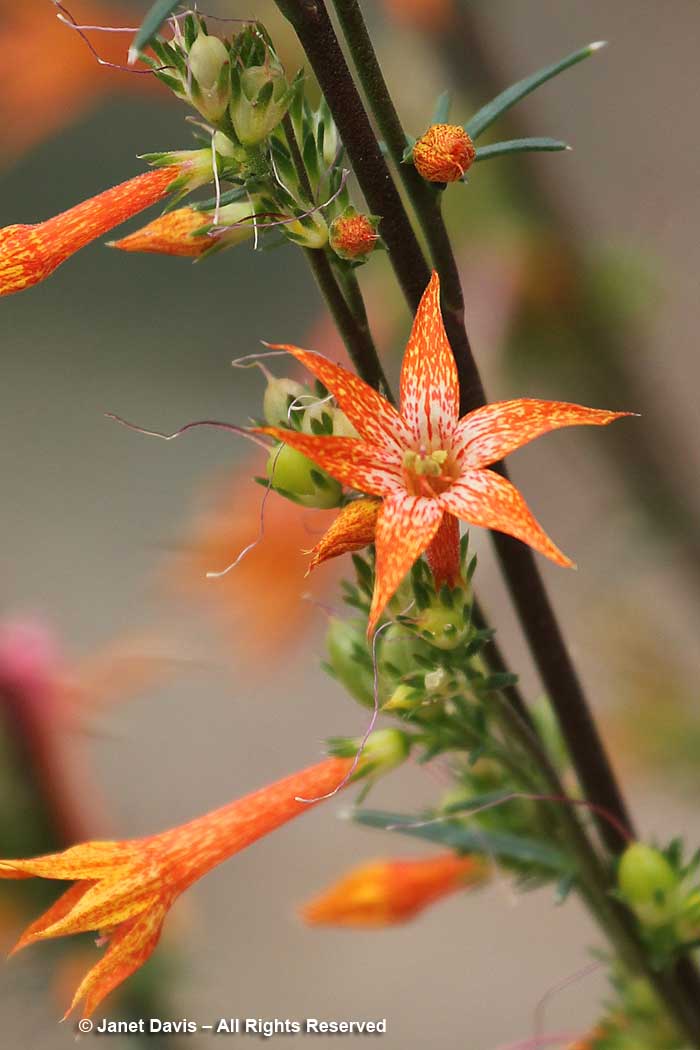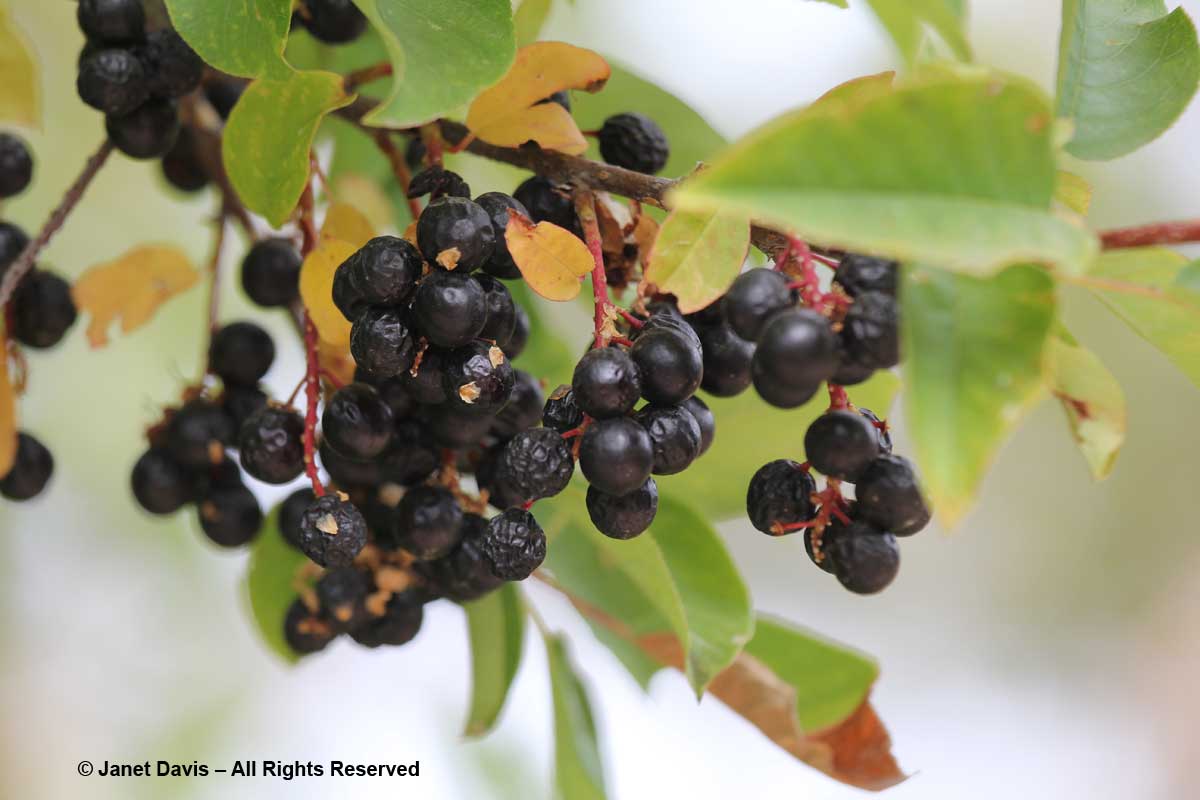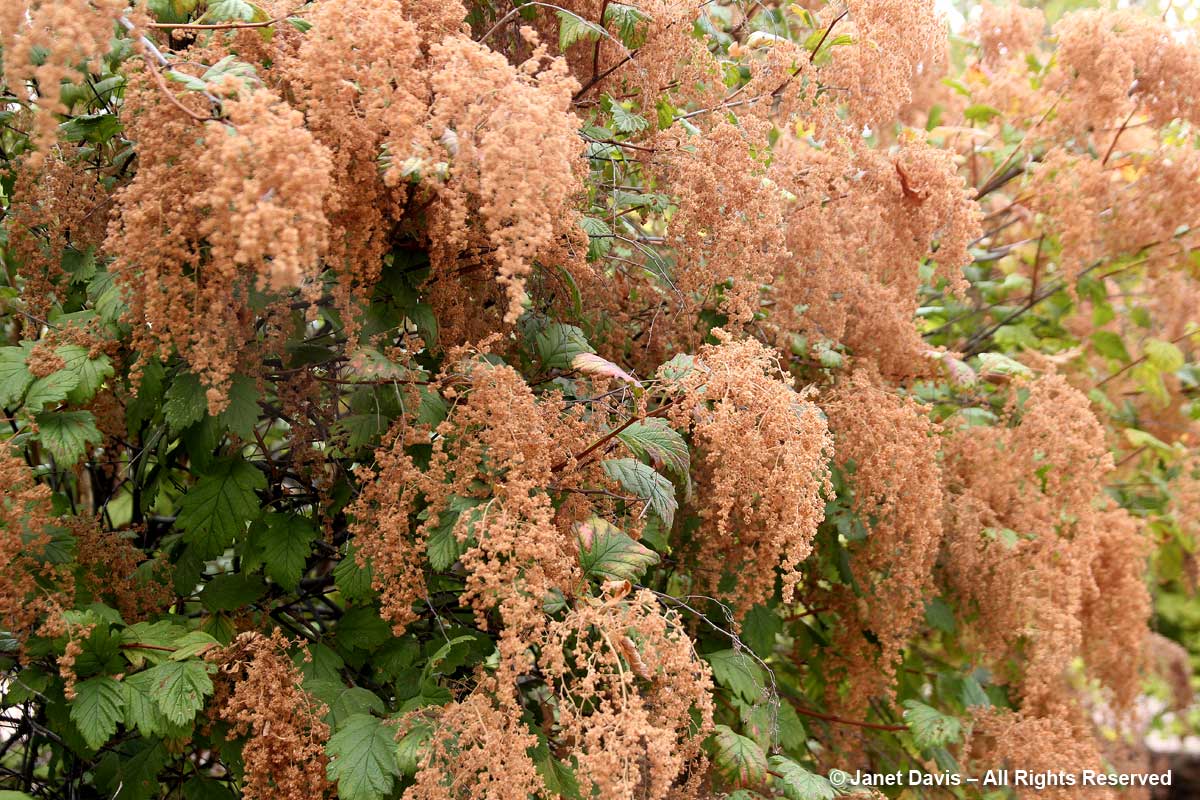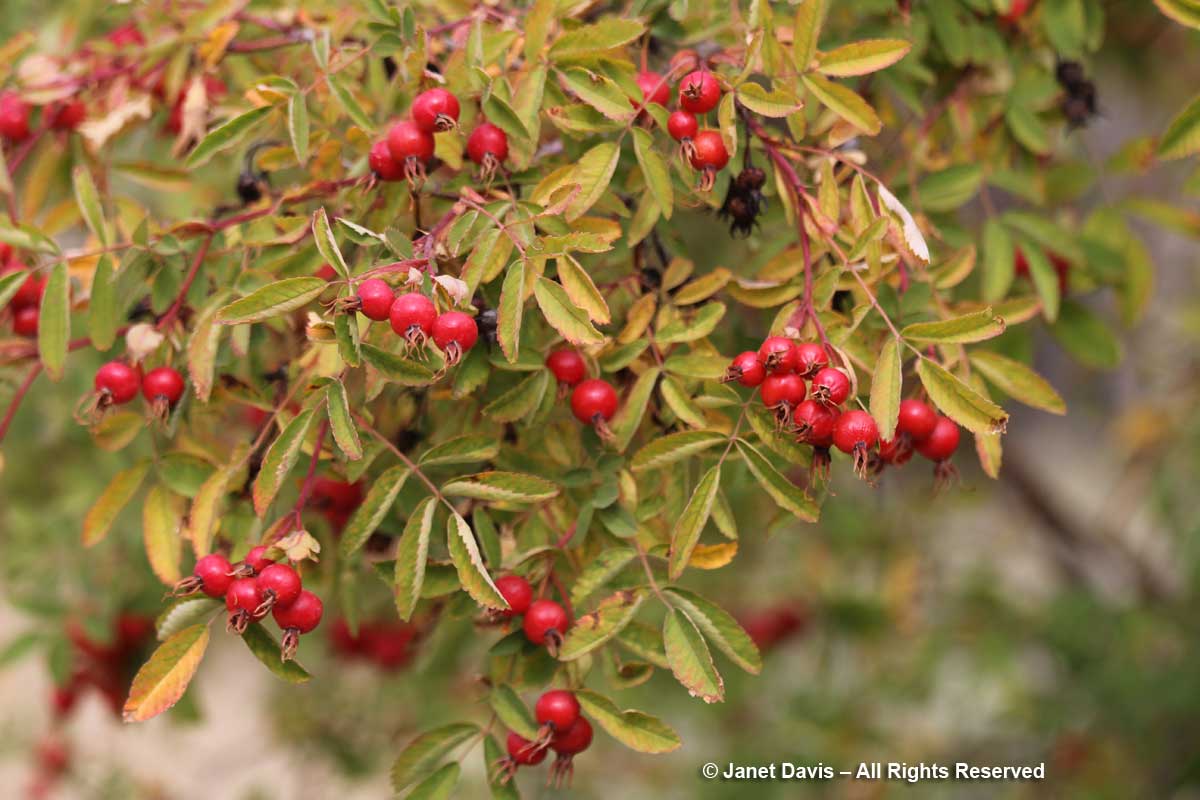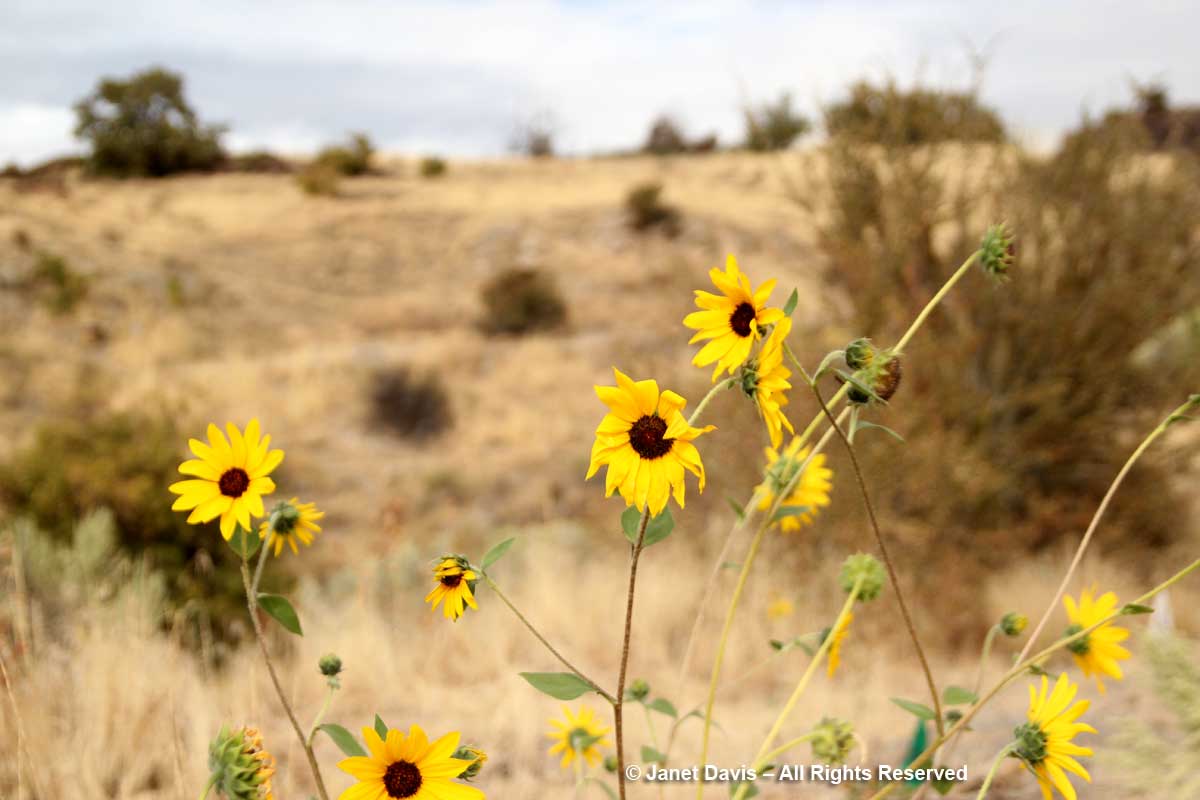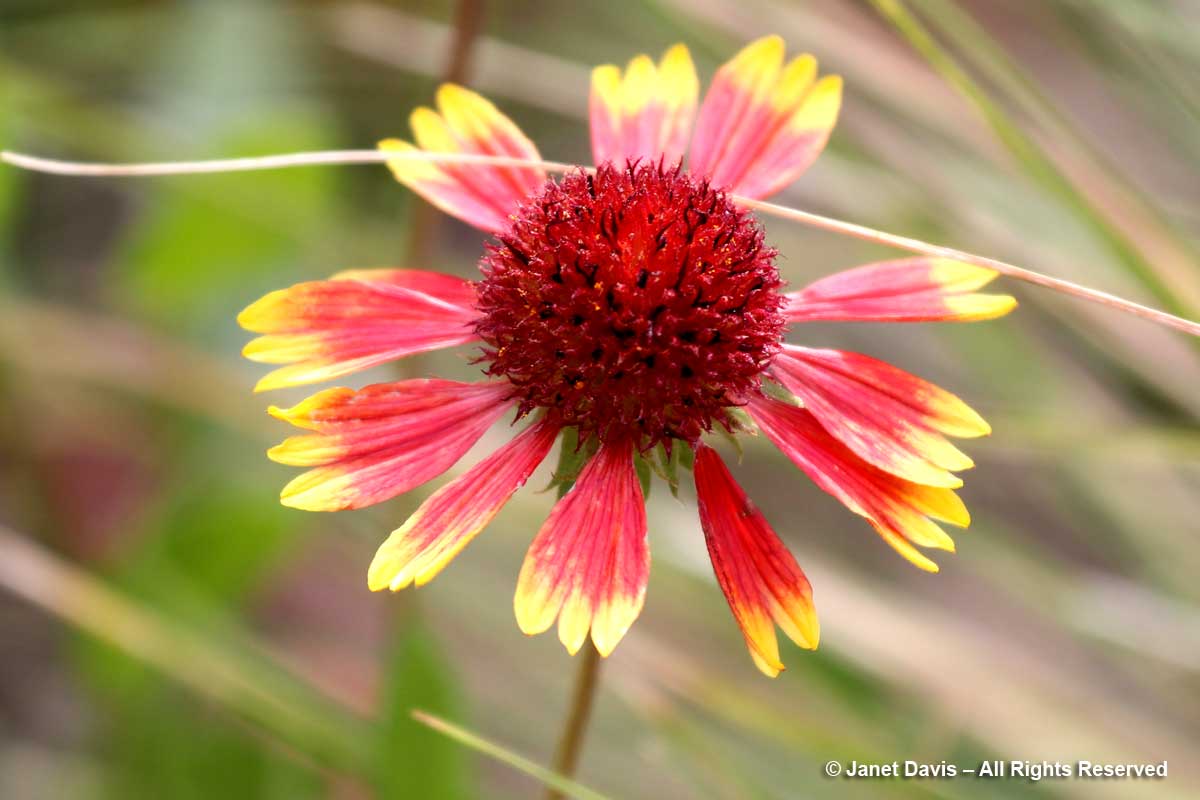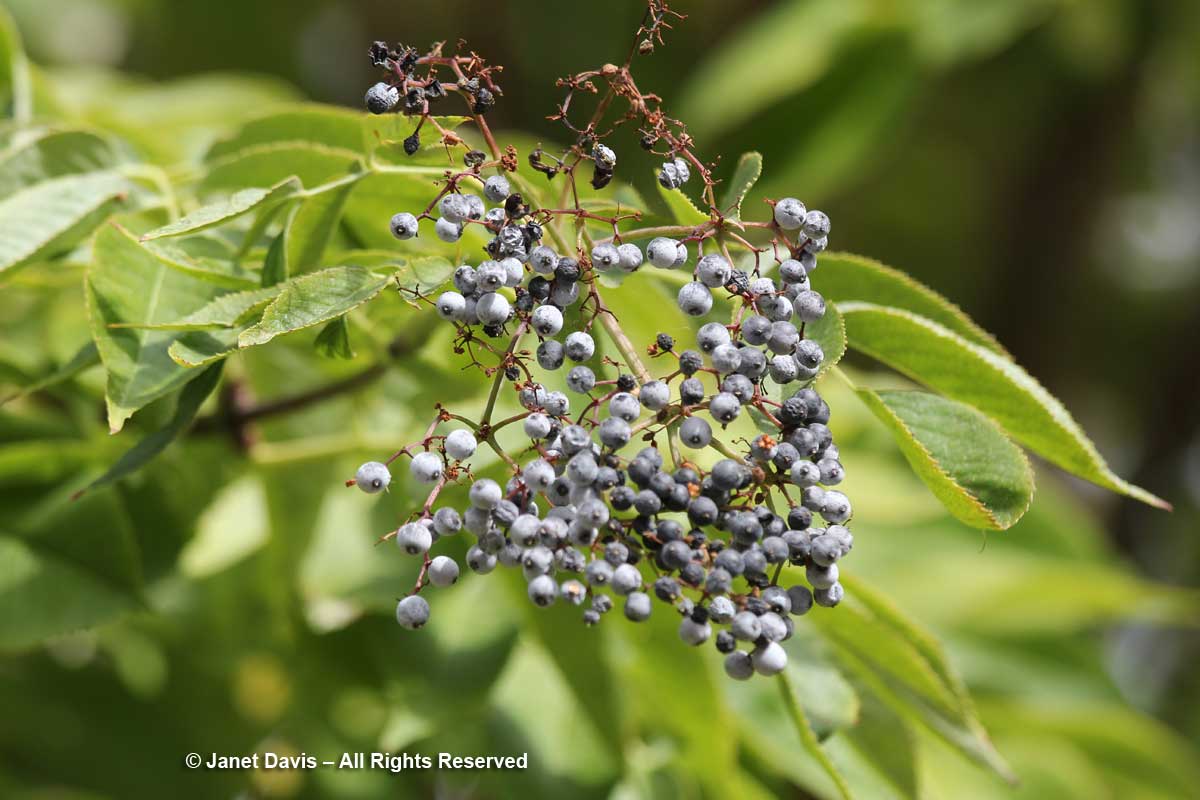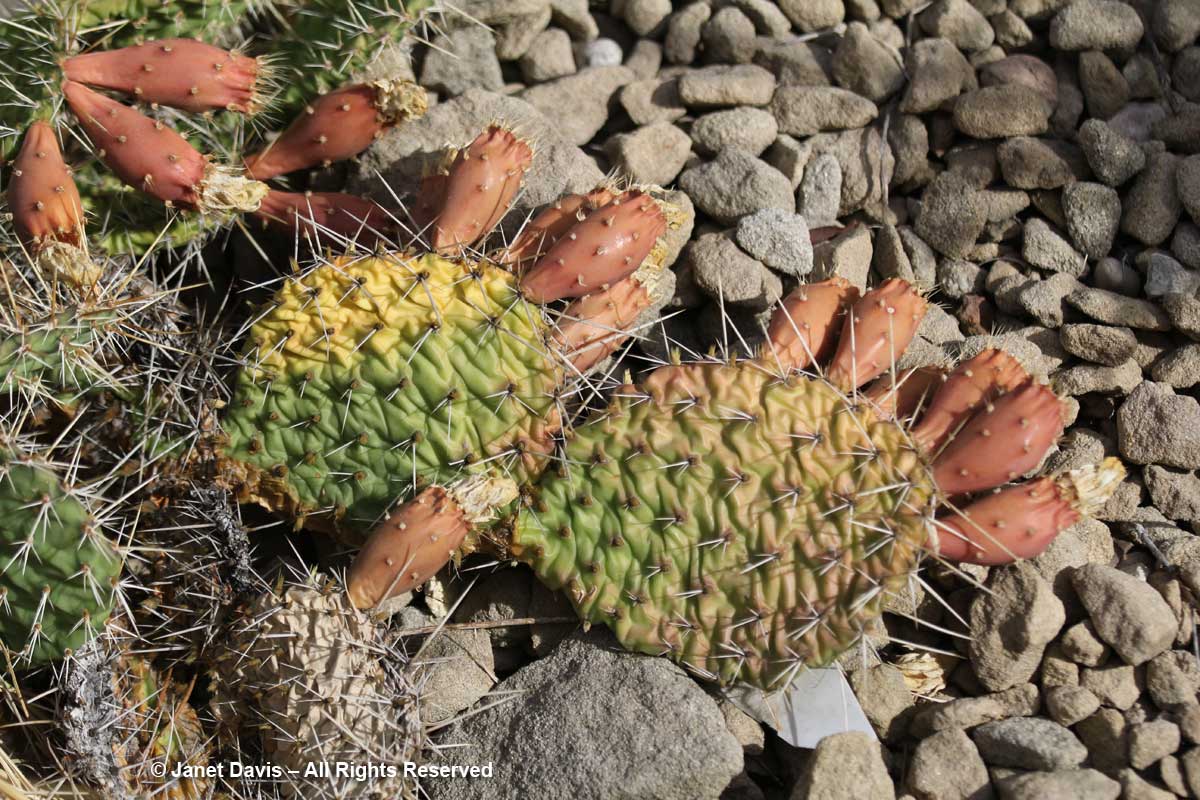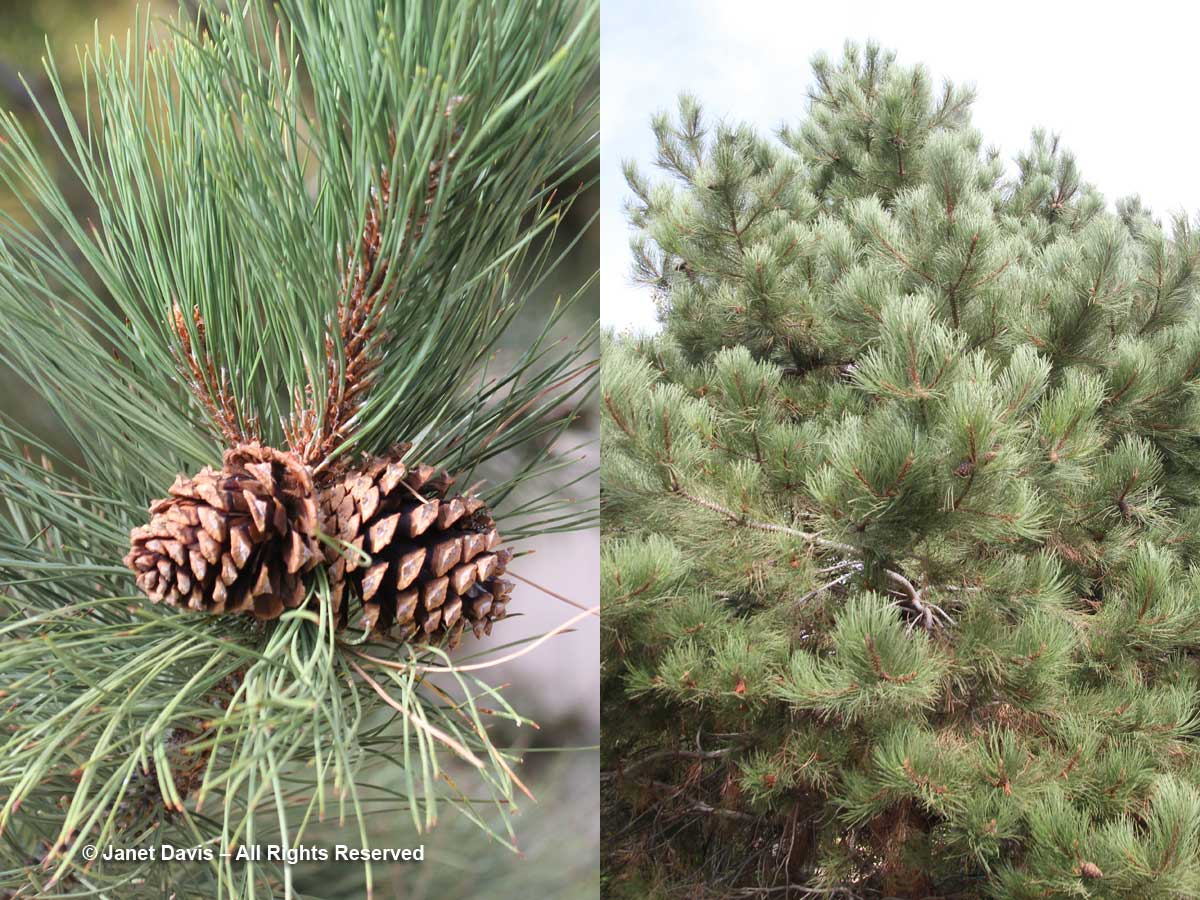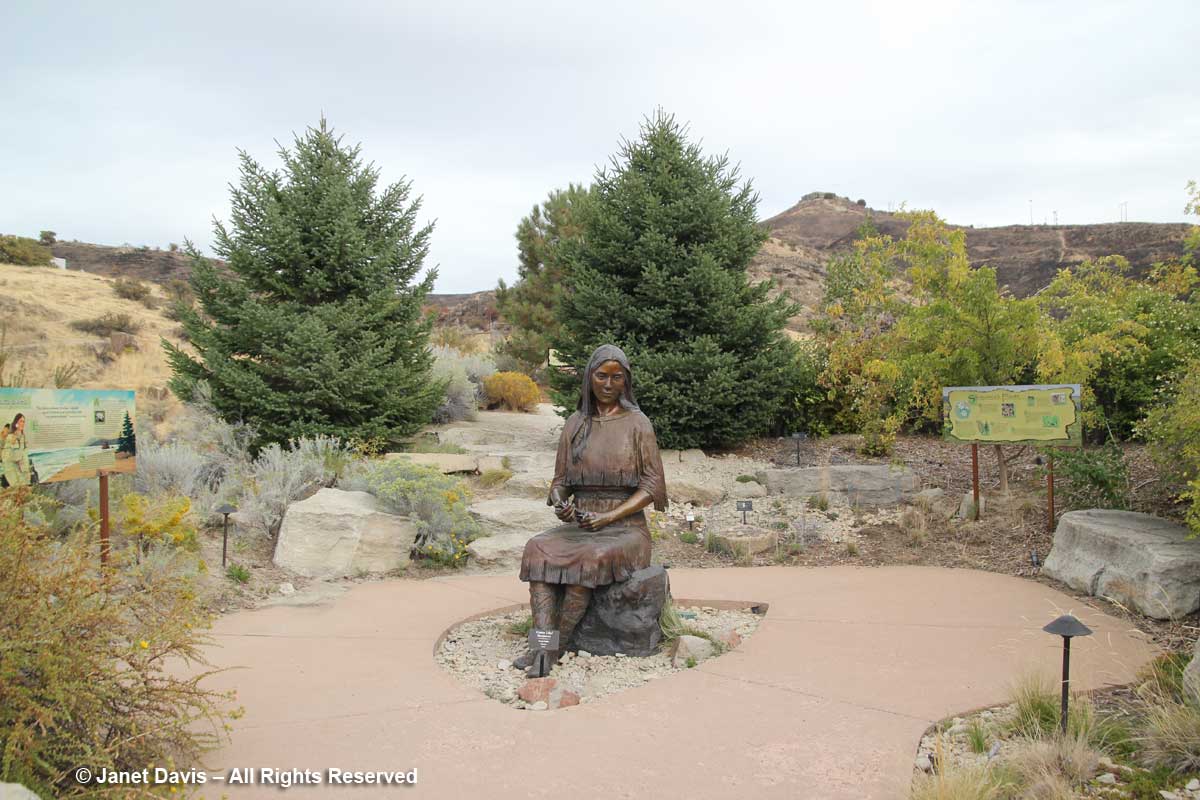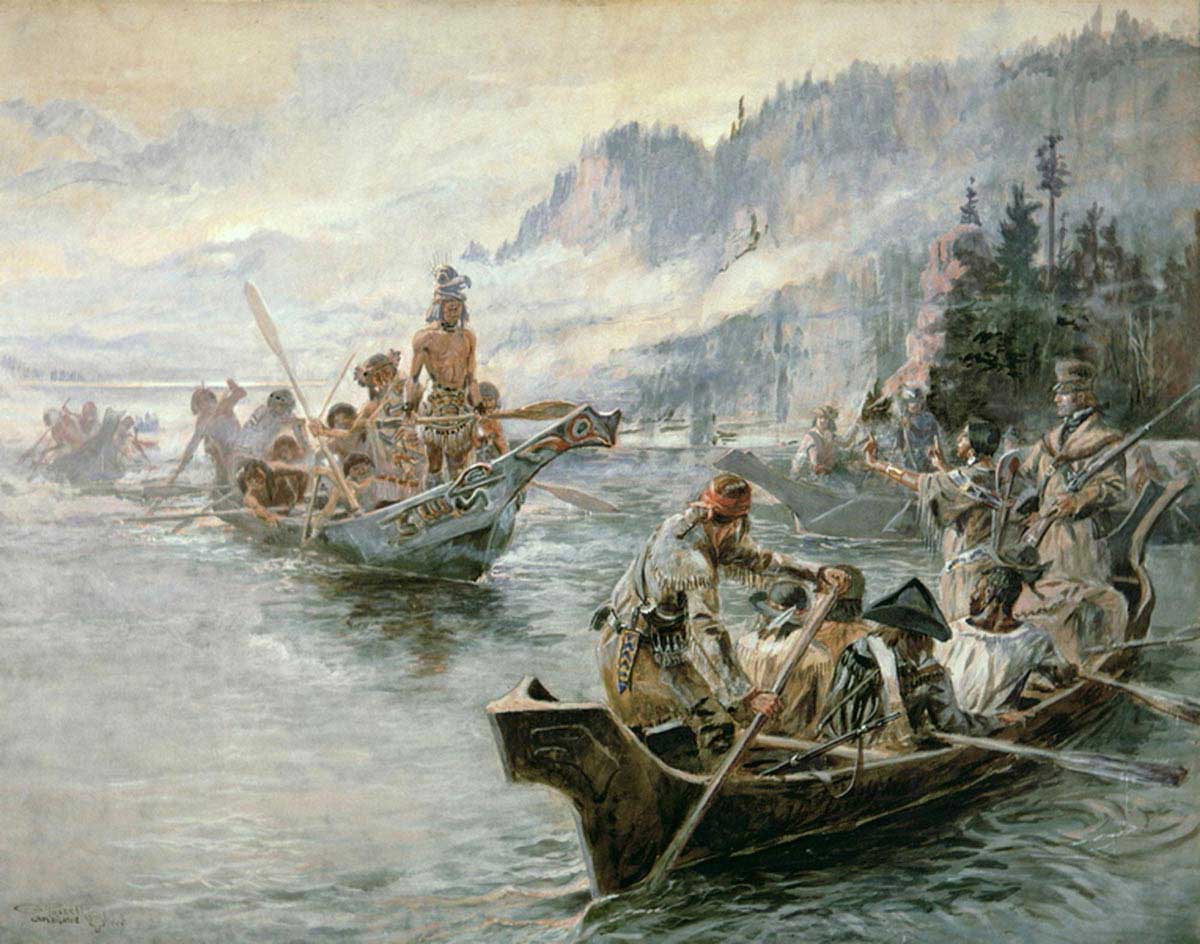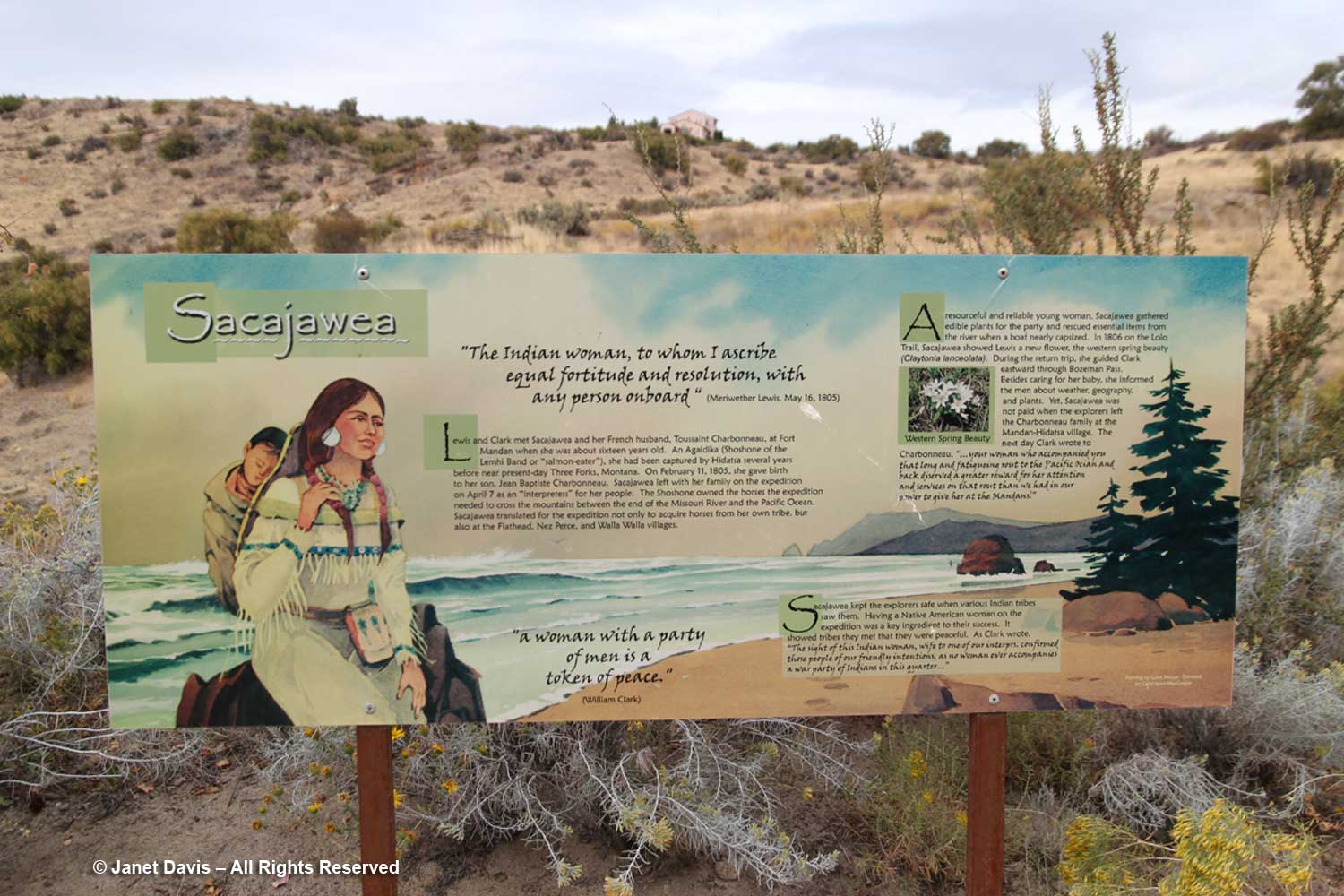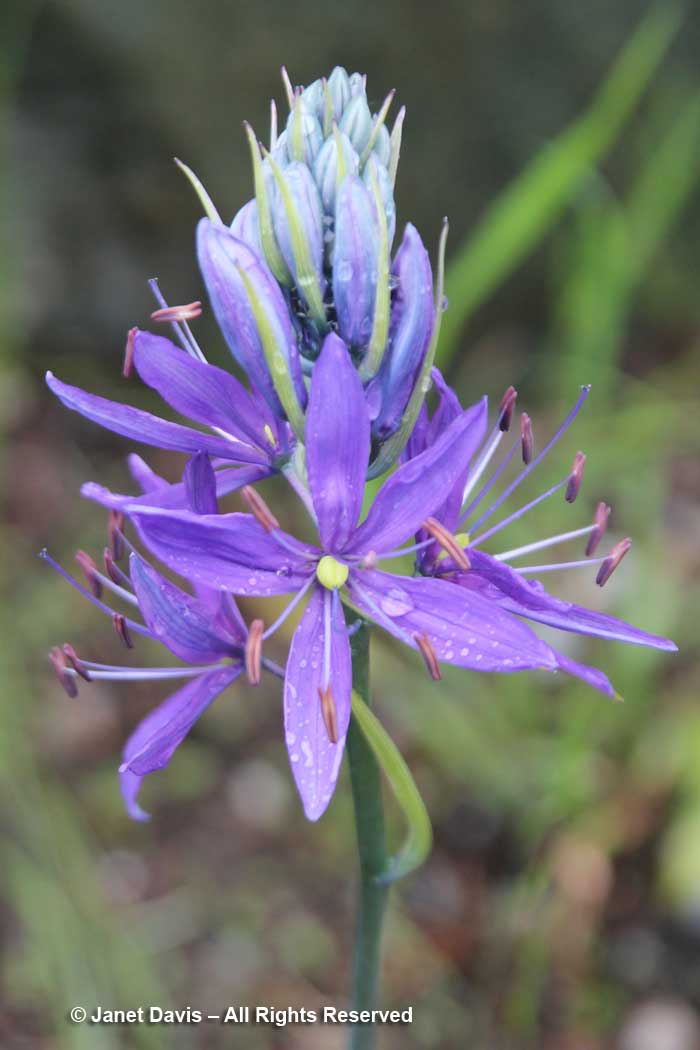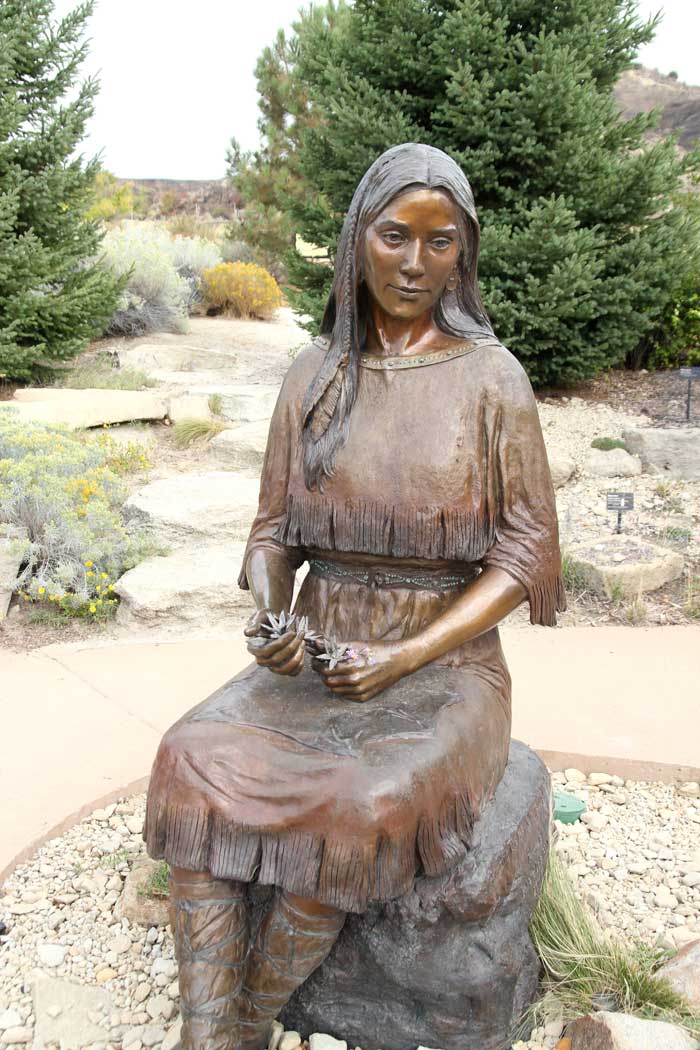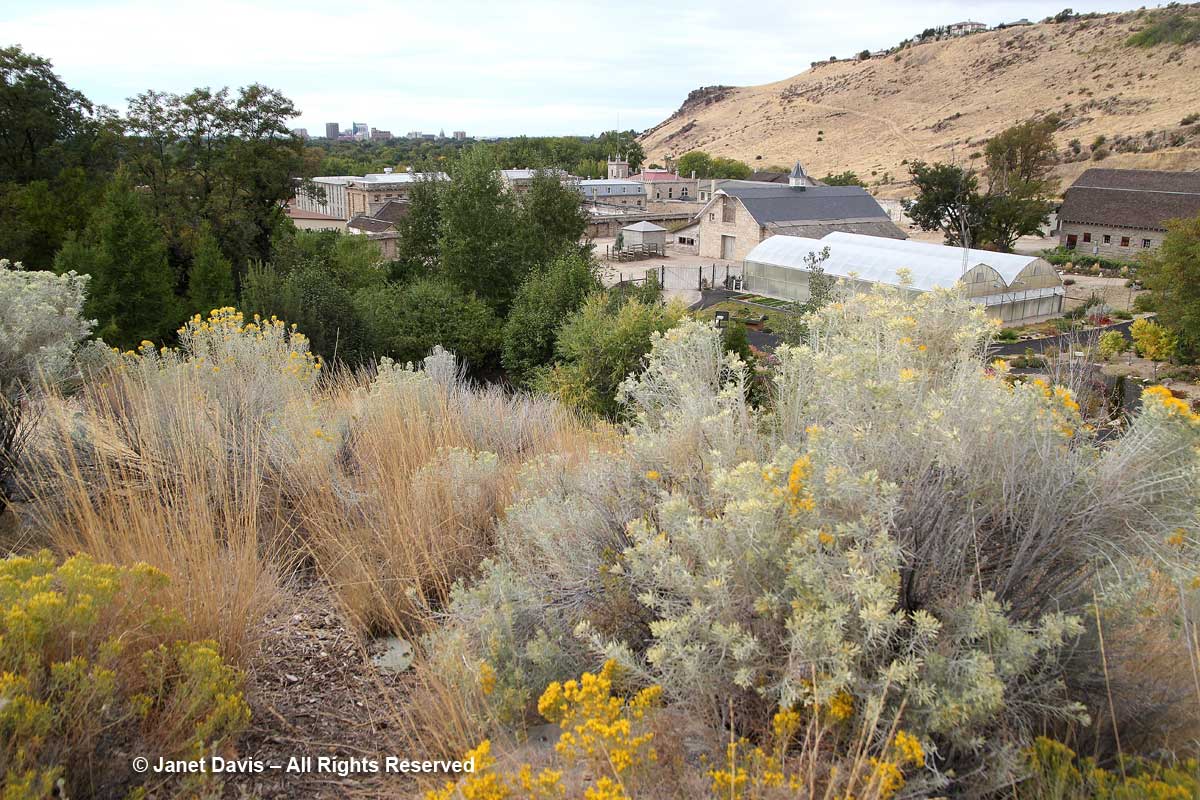I’m taking a little break from my New Zealand blog marathon (just a few gardens left, and I’ll get to them later) to jaunt on down to the high plains of Colorado and take you on a spring stroll through Denver Botanic Gardens. I was there about 10 days ago en route to Utah and then Texas, and it was a tulip extravaganza. The garden made sure everyone driving along York street got a colourful eyeful……
….. and they were planted in sunset colours at the entrance.
Going in, we were impressed by the towering specimens of coral tower-of-jewels (Echium wildpretii), a show-stopper if there ever was one!
The honey bees were enjoying it too (all echiums are great pollinator plants).
We made a beeline (haha) for the Boettcher Memorial Tropical Conservatory. This is what it looks like from the far side of DBG’s outdoor UMB Bank Amphitheatre (aka best-ever-hill-rolling-for-little-kids-spot).
And this is what that roof looks like inside.
I climbed to the top to see the queen’s wreath (Petrea volubilis), which was happy in the heat and humidity.
Every time I go into a tropical glasshouse, I discover something new and fun – like this variegated clown fig (Ficus aspera ‘Parcelii’).
But it was a beautiful spring Saturday and I was eager to see the outdoor gardens, so we went past yet another little colony of Star Trek-like towers-of-jewel….
….. into Shady Lane, where people were enjoying all the different crabapples in bloom.
If they paid attention, they’d have gleaned lots of lessons in woodland underplanting, like this yellow Tulipa tarda with Siberian bugloss (Brunnera macrophylla)….
….. and red-flowered barrenwort (Epimedium x rubrum) with windflowers (Anemone blanda).
Walking on, we came to the brand-new (2016) Steppe Garden. What an undertaking this was, but a perfect choice for Denver, which sits in the high foothills of the Front Range of the Rocky Mountains! In the Central Asian Steppe, below, I loved the combination of the Fritillaria pallidiflora, native to Kyrgyzstan and Kazakhstan, Iris bucharica and Tulipa greigii.
The bumble bee below was gathering lots of pollen from the fritillaria.
Isn’t this water feature fabulous?
And look, a sweet little Iberis taurica, from Turkey, peeking out from the stacked limestone of the fountain.
I can hardly wait to come back next June (yes, my annual Garden Bloggers’ Fling is happening in mid-June 2019 right here in Denver!) to see the North American Steppe with all its native penstemons.
Water runs throughout DBG in the form of canals, formal pools, waterfalls and freeform ponds. It reflects the blue of the sky and is the perfect place to exhibit large sculpture, like Frank Swanson’s ‘Reflections’. And yes, that little girl seeing her reflection did have parents nearby watching.
Springtime at a botanical garden, before the perennials emerge and shrubs and trees leaf out – but when the crowds begin to arrive – is dependent on the early show of tulips, daffodils, tulips and other spring bulbs. When I was in the Annuals Garden & Pavilion, visitors all had their cameras and phones out…..
……to record the brilliant display of tulips and other bulbs….
……. in the area that will later feature an annuals display.
On the margins, there were also spring-blooming perennials, like this sumptuous combination of blue Siberian bugloss (Brunnera macrophylla) with purple violas.
The Ann Montague Iris & Daylily Garden was getting ready to strut its stuff. How wonderful this garden would be in late spring and early summer!
DBG’s theme gardens are very specific, which is great if you have a particular craving to see, for example, a good selection of plants in the Dwarf Conifer Garden, below.
While other botanical gardens might feature flowering bulbs in spring, DBG has flowering cacti! Not sure of the identity of the sweet thing below, with Bell’s Twinpod (Physaria bellii) in the Desert Wash Garden.
Apart from the plants of the steppe, Denver Botanic Gardens is renowned for its meandering Rock Alpine Garden. Those purplish pools are….
…. lovely blue wooly speedwell (Veronica pectinata).
Spring adonis (A. vernalis) was lighting up the gravel, too!
A little background here: I visited DBG for the first time in 2006, and through an interesting set of circumstances my husband and I were toured around by DBG’s current Senior Curator and Director of Outreach Panayoti Kelaidis (since that bio, he’s co-authored a book titled Steppes: The Plants and Ecology of the World’s Semi-Arid Regions, Timber Press, 2015). For 90 minutes, Panayoti whisked us from one garden to another, waxing poetic on each theme and heaping praise on the talented staff who worked there. Subsequently we met each other as plant geeks on Facebook; then in January he was the American Horticultural Society host on the New Zealand garden tour on which my husband and I visited all the fabulous gardens I’ve been blogging about for the past few months. This is Panayoti and me heading into a small boat to explore the reaches of Fiordland’s spectacular Doubtful Sound.
Back to the Alpine Rock Garden…. The wonderful Crevice Garden, below, is the work of Mike Kintgen.
Look at the rich colour of this winter heath (Erica carnea ‘Vivellii’).
I loved this pretty combination of Bergenia ciliata and Scilla forbesii.
The plants below are growing in “limestone cliffs” habitat.
I found this gorgeous Paeonia mascula at the edges of the Alpine Rock Garden.
And there are one or two troughs in this area as well, with tiny treasures for the most avid alpine fans.
In the shade of the Cactus & Succulent House, I found a few fritillaries, including Fritillaria acmopetala.
At the very edge of the rock gardens was a stand of western river birch (Betula occidentalis), a tree I didn’t know at all and was happy to discover.
The Gates Montane Garden contains plants that you might see in Colorado’s mountain habitats, especially in the Bear Creek Canyon where the late Charles C. Gates (to whom the garden is dedicated) once resided, like the mountain alders (Alnus incana ssp. tenuifolia) below.
And here I found wax currant (Ribes cereum) with its dainty, white flowers.
As if knowing that a montane garden is the perfect place for a Colorado native, this cottontail rabbit was busy munching grasses.
Just beyond was a perfect view of the eastern redbud (Cercis canadensis) casting a reflection on the pond in the Shofu-En Japanese Garden.
There is nothing like looking through a redbud.
Walking around the pond, I came to a spot that looked out on the exquisitely-pruned pines in the Japanese garden.
Next up was a garden that would be a treat to visit in summer, the Laura Smith Porter Plains Garden, honouring the woman who in the 1800s came as a child in a covered wagon to Denver City. There were some interesting succulents, but prairie flowers were still weeks away. That frieze is very interesting. It’s called The Story of a Pikes Peaker and was carved in 1925 by Robert Garrison for the Midland Savings Bank. Romanesque in style, it is decidedly western in theme and, though it might be considered insensitive some 90 years later with its one-sided version of the battles between “Pikes Peak or Bust” pioneers and native Americans, it is certainly impressive and lends a stately frontier air to this little piece of the grassy plains.
Back in the central part of the garden, there was more water and a waterfall. Do you see that little American toad?
It was doing a frog-kick.
And I couldn’t help but video the chorus of toads in this pool (I think it’s the Monet Pool.) Listen…..
Circling around the pool, we came to Le Potager. Though the rhubarb was looking fine and the lettuce under its protective mesh (mmm…. bunnies…) was ready for salads, most of the planting here was still to be done.
The Sacred Earth Garden was just waking up, but it features plants traditionally used by the more than twenty Native American tribes of the Colorado Plateau, which includes parts of Utah, Arizona and New Mexico.
I found Texas madrone (Arbutus xalapensis) with its pretty white flowers in the Dryland Mesa Garden here……
Flanking the pool on the side of the conservatory, I discovered the Plant Select Demonstration Garden, featuring plants especially chosen, grown and marketed as ideal for low-water areas with extremes of winter and summer temperatures. The program, now 21 years old, was launched with the help of Panayoti Kelaidis. You can hear him talking about plants like the ice plant below Delosperma ‘P001S’, aka Fire Spinner, in this video.
This little Plant Select native Clematis hirsutissima var. scottii or Scott’s Sugarbowls caught my eye.
Doing a wide swing and heading back into the garden, we walked over to the Science Pyramid, below, but time was running out.
We gazed up the length of the El Pomar Waterway. In a month or so, those containers will be filled with succulents and ornamental grasses will swish along the canal.
At The Ellipse in Honor of Nancy Schotters, the gardeners had done a splendid job of matching up tulips in the shape and colours of the Dale Chihuly sculpture in the centre of the pool.
We passed by the Schlessmann Plaza…..
…. and the water wall at the York Street end of the El Pomar Waterway.
The O’Fallon Perennial Walk was just waking up, the perennials poking out of the ground, …….
….. but my memories of it in June from my 2006 visit, below, will help you understand how gorgeous this will be later.
Since we had started our day in Toronto at 4:30 in the morning, I was too tired to head across York Street to visit the Children’s Garden and opted to return to the hotel before dinner (and a next-morning flight to Utah). But that omission (and all those gardens that feature summer plants) will be remedied in June 2019, when I return to Denver Botanic Gardens with my Garden Blogger friends!

